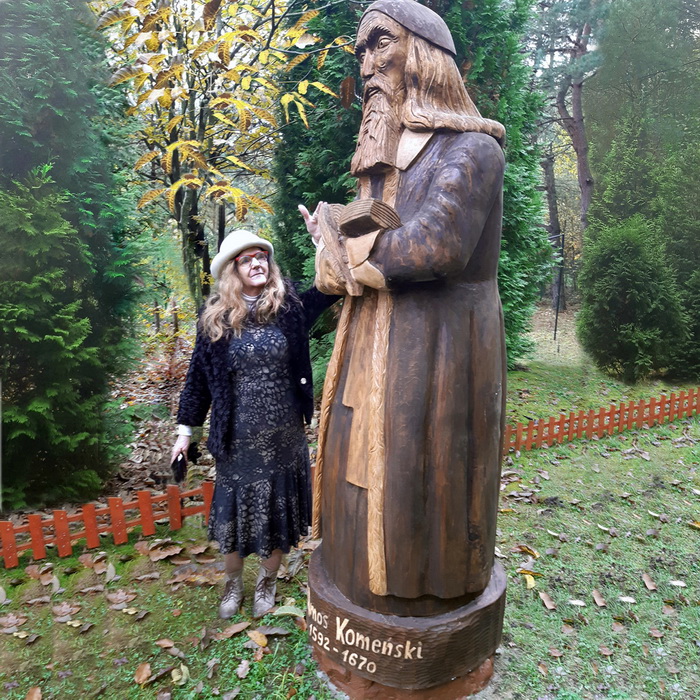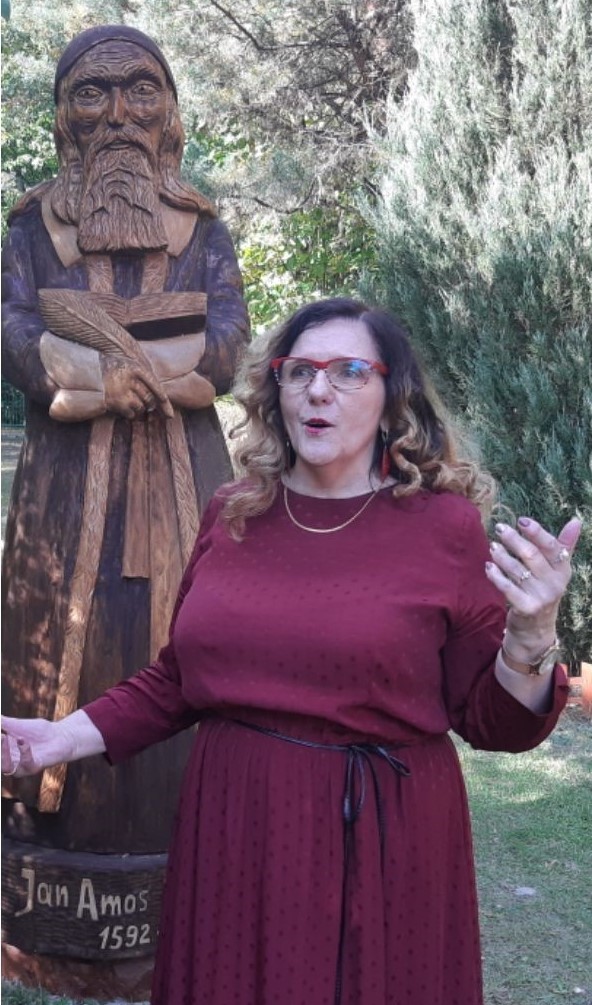JOHN AMOS COMENIUS’ PEDAGOGICAL-PHILOSOPHICAL GARDEN
AUTUMN
THE GATES HAVE BEEN OPEN SINCE A STATUE OF JOHN AMOS COMENIUS ENTERED IT
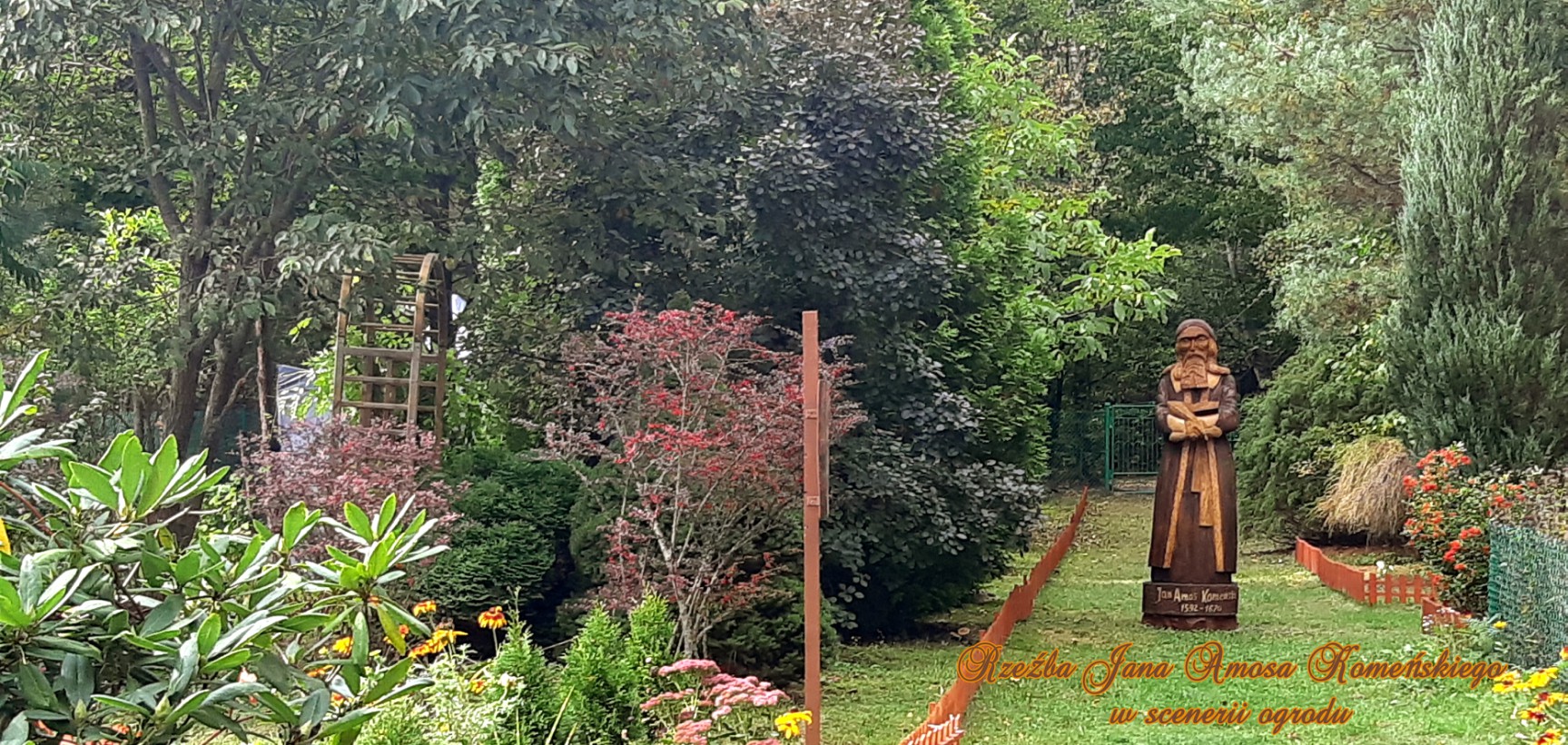
MADE BY SIEDLCE SCULPTOR WALDEMAR KOS, IT IS LOCATED IN THE MAIN COMENIUS ALLEY

THE INFORMATION BOARD PROVIDES THE VISITORS WITH THE NECESSARY INFORMATION
John Amos Comenius’ garden is being created as part of the research PROJECT in the field of PEDAGOGY (2020 - 2022) entitled FROM JOHN AMOS COMENIUS TILL THE PRESENT. THE MEANING OF THE GREAT PEDAGOGUE’S IDEAS FOR THE DEVELOPMENT OF PEDAGOGY AND EDUCATION
John Amos Comenius has always been a controversial figure, and he is even more controversial nowadays. There are a lot of both supporters and opponents of him all over the world. Which group is more numerous? Nobody can find it out, as the recognition, lack of recognition, or even condemnation of this scholar and the ideas he proclaimed are changing and evolving in every country and worldwide. The knowledge of him is extensive and slight at the same time. Only few of his works or just parts of them have been translated into different languages, as the translation is an expensive investment for contemporary scholars. Original works by Comenius, published in Latin, Czech or even German, are only available to few readers. Therefore, it is common to rely on somebody else’s interpretations, which are always subjective, as the same text is understood differently by individual people, who interpret it according to their own interdisciplinary knowledge and mental perception of the work. The knowledge of Comenius the thinker has been evolving over the years due to everyone’s constant development. His writings are sometimes interpreted as vision-based utopia, especially his pansophism, or the “improvement of human affairs”. As Comenius’ idea of lifelong education, pansophism has been analyzed and interpreted over the centuries, and nowadays it is analyzed and interpreted more than ever before, and still arouses most controversy. John Amos Comenius’ pansophism was discussed in Volume 7 of “Siedlce Comeniological Research Bulletin, PEDAGOGY series”, which presents the authors’ various views and interpretations (John Amos Comenius’ pansophism, Siedlce, 2020).
As a person, the thinker is not faultless. His faults are visible in both his personality and attitudes. Every nation and every country in which he stayed has a different experience of him. Some nations worship and love him unconditionally (in my opinion they are the Czech and the German), while others perceive him as a very controversial figure, mainly due to his attitudes. Undoubtedly, the Polish nation is one of the latter.
Despite his faults, imperfections and inconsistencies, John Amos Comenius and his writings still fascinate me, as every time they reveal something new and interesting to me, which motivates me to continue my research and publishing activity. His pansophism, as the idea of lifelong education, inspired me to conduct many years’ research of school education in the context of lifelong education in an autobiographic perspective, which is described in a book that I am preparing to be published this year (2021). The figure of Comenius, his writings and ideas are so interesting to me that I have dedicated my GARDEN to them and have made it available to visitors in the virtual version.
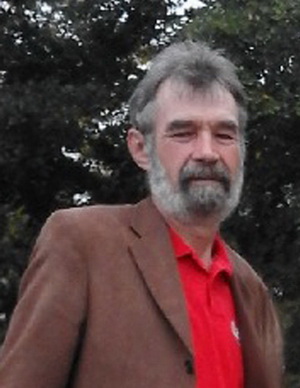 |
|
Waldemar Kos SCULPTOR |
John Amos Comenius’ virtual GARDEN, based on Barbara Sitarska’s real garden, will be open in November 2020, on the 350th anniversary of the death of John Amos Comenius (1592 -1670). The pedagogue died on 15 November in Naarden, the Netherlands. This year Europe and the whole world are celebrating his anniversary. In the age of the COVID-19 coronavirus, this anniversary is being celebrated differently than planned. The celebrations are listed at our website.
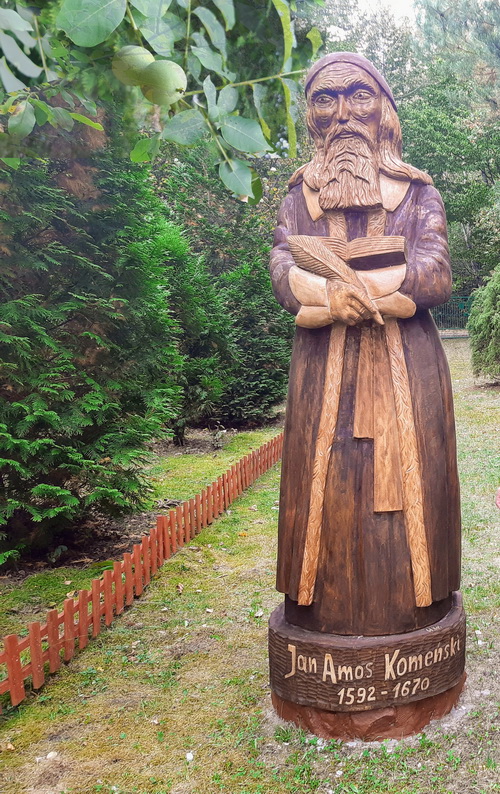
Siedlce research CENTER of the Pedagogy Institute of the Department of Social Sciences is celebrating the anniversary with the opening of JOHN AMOS COMENIUS’ PEDAGOGICAL-PHILOSOPHICAL GARDEN and a virtual trip of it. Today we invite you to the GARDEN, to become familiar with its description. The GARDEN will be described in sections corresponding to the seasons of the year. Pictures of the GARDEN in each season will be posted systematically. The point is to capture the natural changes taking place in the plant life of the garden in spring, summer, autumn and winter. According to the Thinker’s idea, they symbolize the entire cycle of human life, the passing of time. For Comenius, the whole life is school, starting with the prenatal period (in the GARDEN it is symbolized by a walnut tree with branches holding pairs of walnuts exposed in the pictures), which lasts throughout your life and involves both institutional and symbolic schools (before you start school and after you leave it, till the school of old age and death). The plant life of the GARDEN in each season of the year will reflect Comenius’ idea of permanent/lifelong learning, which has had a real resurgence in the 21<sup>st</sup> century and is a priority issue all over the world.
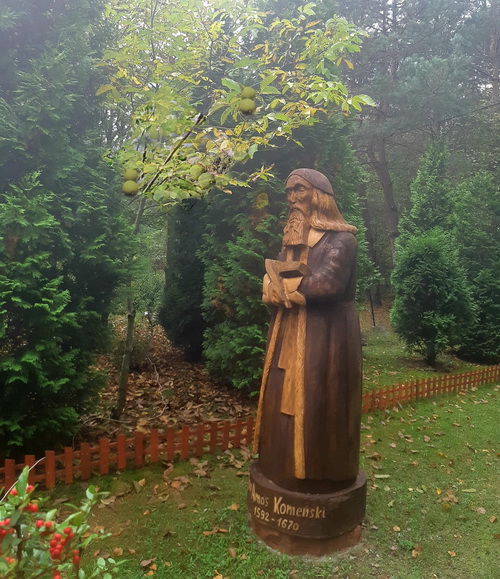
The virtual GARDEN is being created in late autumn (STAGE 1 – AUTUMN 2020), based on Barbara Sitarska’s real garden, located in her home town Niewęgłosz near Radzyń Podlaski. It is where she was born and spent her childhood and early youth. The garden was created thirty-five years ago and since then it has been cared for with great emotional involvement. The idea of Comenius’ GARDEN emerged under the influence of a virtual trip of Comenius’ philosophical GARDEN in Berlin, which has a many years’ tradition.
With the development of the research of Comenius (since 2007) and the appearance of the annual publication “Siedlce Comeniological Research Bulletin, PEDAGOGY series” (since 2014), the idea of the garden emerged gradually. Last year (2019), the dream started to come true, with the garden being prepared with the main Comenius Alley, where a sculpture of John Amos Comenius was to be placed. It entered the garden on 26 September 2020, and belongs to Barbara Sitarska. The statue was made by Siedlce sculptor Waldemar Kos, member of the Association of Polish Artists and Designers.
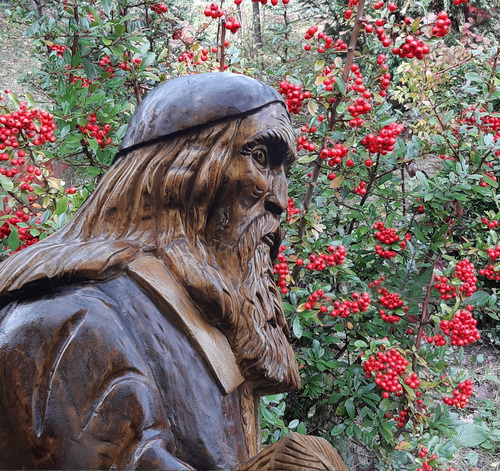
Various shrubs and trees in the garden will symbolize the Thinker’s main pedagogical and philosophical ideas significant at present: the idea of permanent education, the idea of universal light and wisdom, the idea of self-cognition, and many others. The structure of the garden will be as follows: the main Alley, symbolizing PANSOPHISM – Comenius’ specific philosophy, with side alleys leading from it, marked with red fences (other objects in the garden are marked with labels in the shape of a heart and geometric figures), made by Piotr Kozak, the owner’s permanent collaborator. The alleys symbolize particular ideas as signposts leading to consecutive educational paths throughout human life, full of “labyrinths”.

The virtual garden of the described ideas of Comenius’ will be mostly used by students (Comenius laid foundations for the scientific didactic system) and everyone interested in comeniology, a developing branch of science, which is described in Volume 6 of “Siedlce Comeniological Research Bulletin, PEDAGOGY series” (2019). It is easier to interpret Comenius’ pansophism relying on the described ideas (according to conducted qualitative research).

The year 2020 is the second year of the ministry project: Support for scientific magazines. The result will be the edition of Volume 7 of “Siedlce Comeniological Research Bulletin, PEDAGOGY series” entitled John Amos Comenius’ pansophism in interpretations and reinterpretations by Polish and European comeniologists. Its subject matter corresponds to the idea of the GARDEN.
INFORMATION FOR THE VISITORS:
The photos posted on the website of the GARDEN were taken by amateur photographers Barbara and her assistants: Ewa, Adam, Krystian and Peter with mobile phone cameras in various weather conditions.
Correction of selected photos and many years’ cooperation: ANGELIKA GIERASIMIUK
Studio: FOTO MALISZEWSCY, Siedlce
Texts translated into English by Izolda Lisowska-Popoilyk, MA, editor of English
Texts and photos posted on the website by Piotr Świtalski, PhD, technical editor
WINTER
In John Amos Comenius PEDAGOGICAL-PHILOSOPHICAL GARDEN, the passing of human life is equal to his PANSOHIC IDEA OF LIFELONG LEARNING. The statue of the Thinker entered the garden in October, the time when walnuts ripen. In the IDEA, they symbolize the prenatal period of human life. It is Comenius’ first symbolic school, the school for future parents awaiting their child to be born. In the GARDEN, this period is symbolized by STAGE 1: AUTUMN, with a pair of walnuts on a branch of the walnut tree (see the picture).
STAGE 2: WINTER is the period of EXPECTATION OF THE SPRING, OR THE PERIOD OF BIRTH AND CHILDHOOD. It is a very important STAGE of the SCHOOL for the parents, who consider their children to be ”more lovable and precious than gold, silver, pearls or jewels” and learn to love them wisely. Such love will bear fruit throughout their life, at ALL THE STAGES OF THEIR PERMANENT EDUCATION. After the winter, when the statue of John Amos Comenius survives in the winter scenery of the GARDEN till the SPRING, the longed-for season will come and bring first flowers and buds on the trees and shrubs. In our GARDEN, in the hearts and other geometric figures in the form of red wooden fences, designed in the autumn, the flowers and shrubs will bloom, the leaves on the trees will develop, and the conifers will get green. We will see the statue of Comenius in the spring scenery of the GARDEN. COMENIUS ALLEY will begin to ”teem with life”, and we will bring Comenius’ basic IDEAS out of this scenery.
The creator of the GARDEN invites you to a virtual trip of it in WINTER.

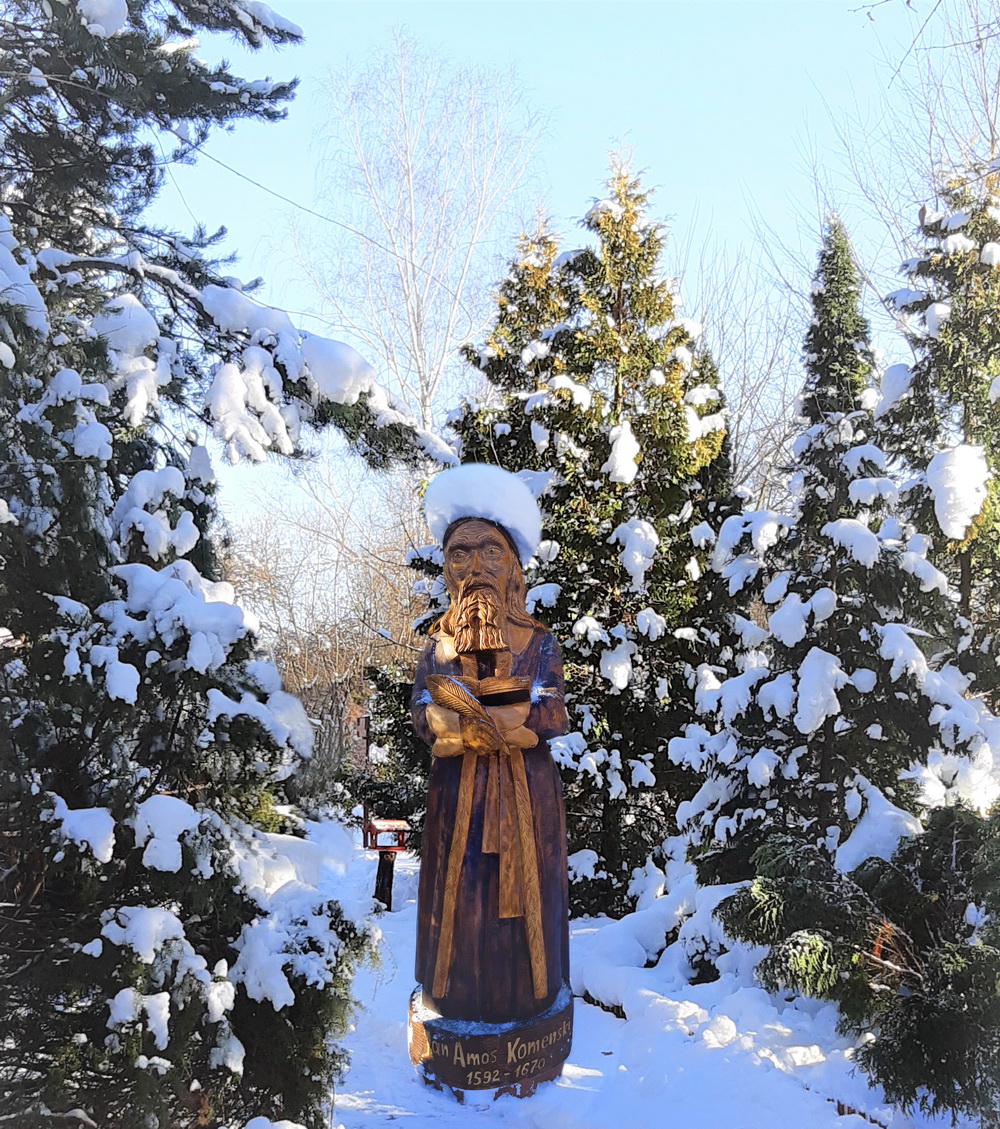
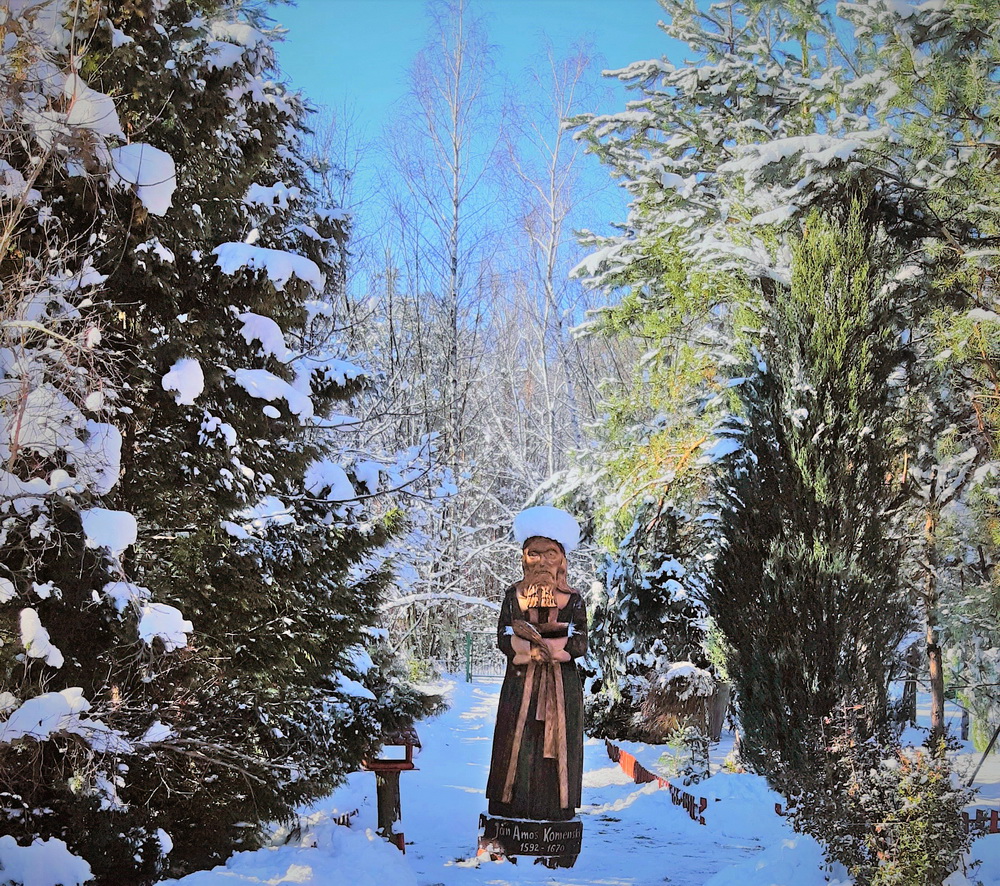

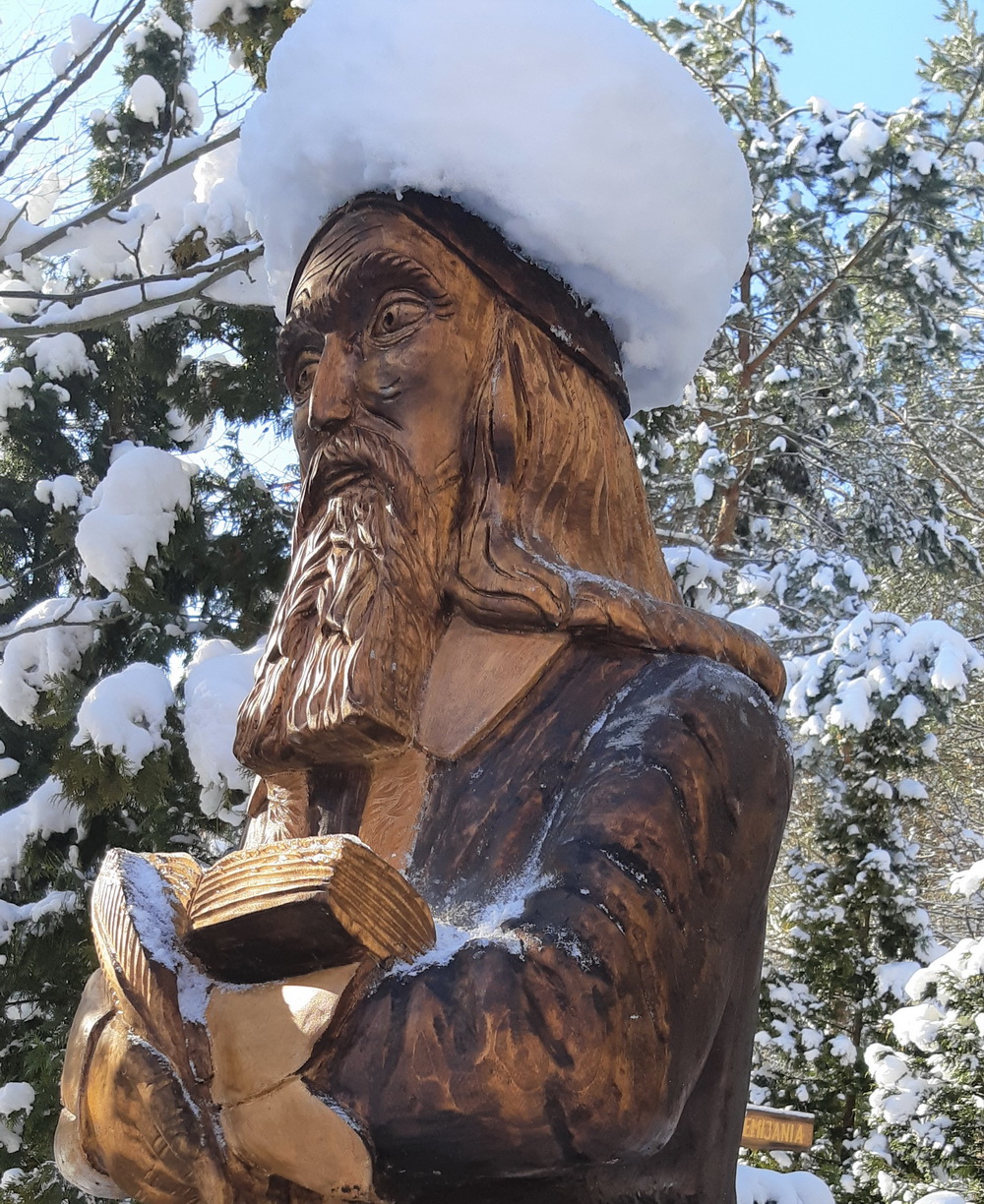
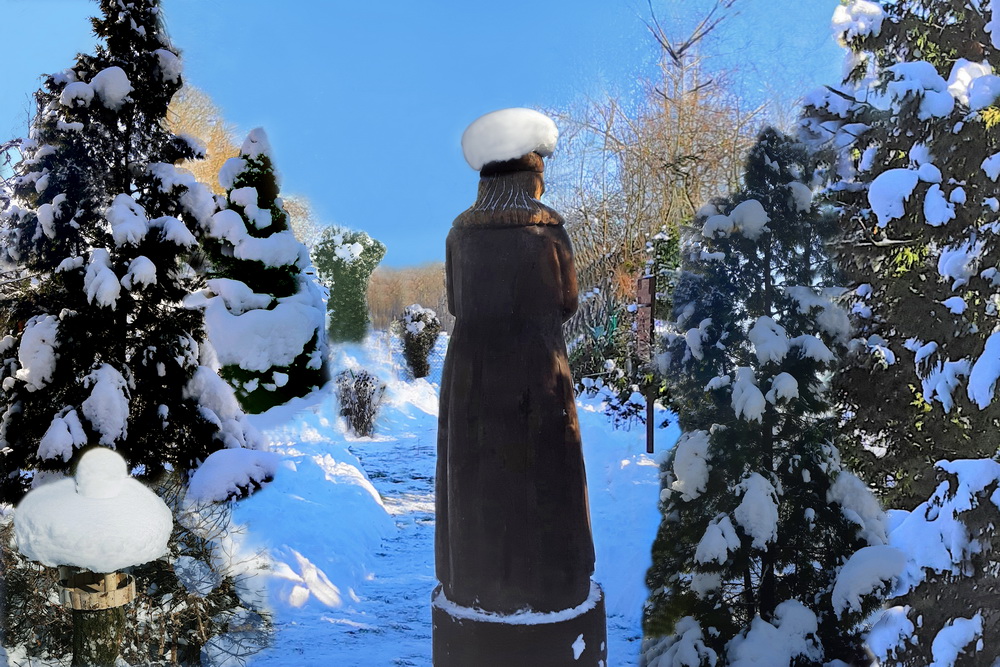
BEFORE WE MOVE ON TO THE FURTHER STAGES IN THE GARDEN, RELATED TO THE SEASONS OF THE YEAR – LET’S LISTEN…
The sculpture of John Amos Comenius came to the GARDEN from Siedlce on 26 September 2020. It was dusk when it went down Józef Piłsudski Street, the main street of the town. For the few passers-by (due to the late time of the day and the pandemic), it must have been an unusual phenomenon. It looked as if it was seeing the sights. When it arrived at the GARDEN, it was already completely dark. The ordinary garden entrance gate took on a whole new meaning for the COMENIUS GARDEN.

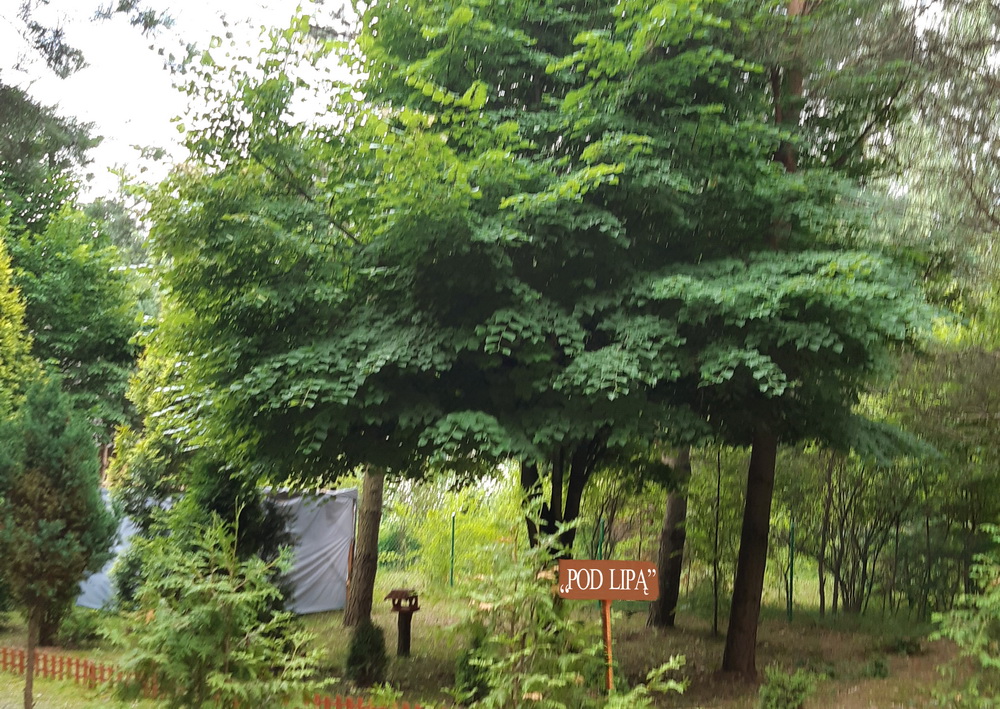

The new figure of Comenius, which can be regarded as a new inhabitant of the GARDEN, went down the consecutive segments of the COMENIUS ALLEY created before. It was taken off the car by four men, and erected on a previously prepared pedestal in the neighbourhood of the walnut tree, which was just losing its leaves (SEE: STAGE ONE – AUTUMN). Just to remind you, in JOHN AMOS COMENIUS’ IDEA OF LIFELONG EDUCATION (in our GARDEN), the walnut tree is a symbol of the prenatal period. The statue of Comenius, sculpted by the Siedlce sculptor Waldemar Kos, is two meters tall and weighs 200 kilos. The moment this text is being created, it is already summer 2021.


The owner and creator of the COMENIUS GARDEN, Barbara, lives in Siedlce, 60 km away from the GARDEN. The day that the sculpture arrived THERE, it was too dark to see and “greet” Comenius. It took place a few days later. The admiration of the sculptor’s work is symbolized by the picture below.
In autumn, not much happened in the GARDEN in the visual way. Its whole idea was based on designing facilities which were to be accomplished in spring and summer. In winter and early spring Peter the gardener made red fences in order to be able to put them in the GARDEN in spring, in accordance with Barbara’s previous design, in the form of an ALLEY. Their names reflect JOHN AMOS COMENIUS’ IDEA OF PANSOPHISM – LIFELONG EDUCATION, which is reflected by the quotation:
“WHOLE LIFE IS SCHOOL” by John Amos Comenius
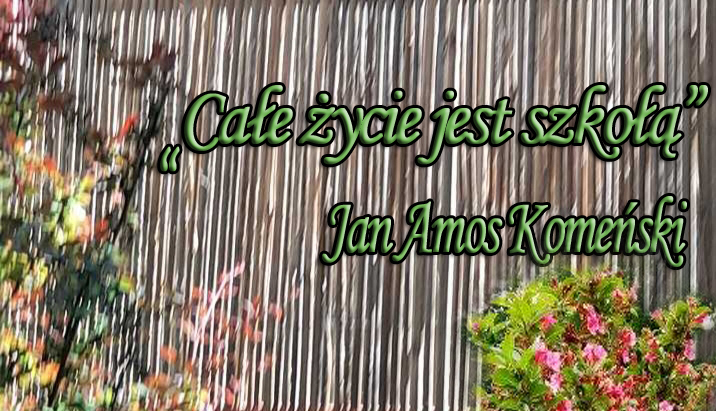

The quotation introduces the great educationist and philosopher’s IDEA OF LIFELONG EDUCATION to the visitors of the GARDEN. For Comenius, an individual is learning and getting educated all the time, both at such institutions as kindergarten or school and before starting or after leaving them (symbolic schools – the most difficult ones). THE IDEA OF LIFELONG EDUCATION starts from the school of birth and ends with the school of the old age and death, having gone through the previous schools of the mature age. Comenius attached great importance to upbringing and education, and considered KNOWLEDGE to be the LIGHT and a cure for all EVIL and a way out of the LABYRINTHS of SCHOOL AND LIFE. You can read more on this subject in the work Pampaedia by Comenius, translated from Latin into Polish by Krystyna Remerowa and published in 1973, as well as in numerous articles by contemporary comeniologists. A lot of related articles can be found in “Siedlce Comeniological Research Bulletin, PEDAGOGY series” (see: e.g. Vol. 7 (2020): B. Sitarska, Pansophism as John Amos Comenius’ idea of lifelong education, PL/EN (pp. 185-276). In our GARDEN, it is symbolized by the “SQUARE of SIEDLCE COMENIOLOGICAL RESEARCH BULLETIN, PEDAGOGY series”.
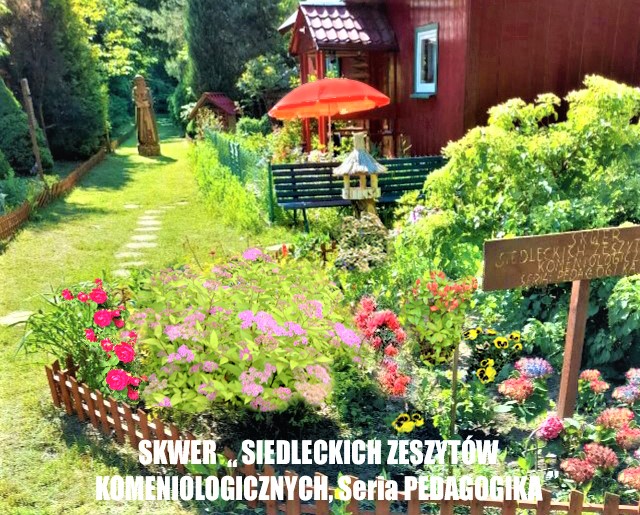
PANSOPHISM – OMNISCIENCE – is John Amos Comenius’ PHILOSOPHY OF LIFELONG EDUCATION, which all of his works are imbued with, as well as all the school levels. “To teach everybody… everything…. about everything… forever… with all the senses and with the use of natural methods, as one should not only learn from books, but also from the earth, the sky, oak and beech trees, and from gardens”. Comenius thought that everybody had the right to learn, regardless their race, faith, social and economical status (the rich and the poor) or their sex. For the first time SOMEBODY thought that girls and women had the right for education as well. In our GARDEN this idea will be symbolized by statues of children standing around Comenius. On his left, a teenage boy will be placed, pointing at Comenius (creating one of his works) and telling a younger girl (standing on the right) that now she is able to learn at school as well. We are looking forward to the sculptures of children with great curiosity. They are going to come from Siedlce, from Waldemar Kos at the end of July 2021.
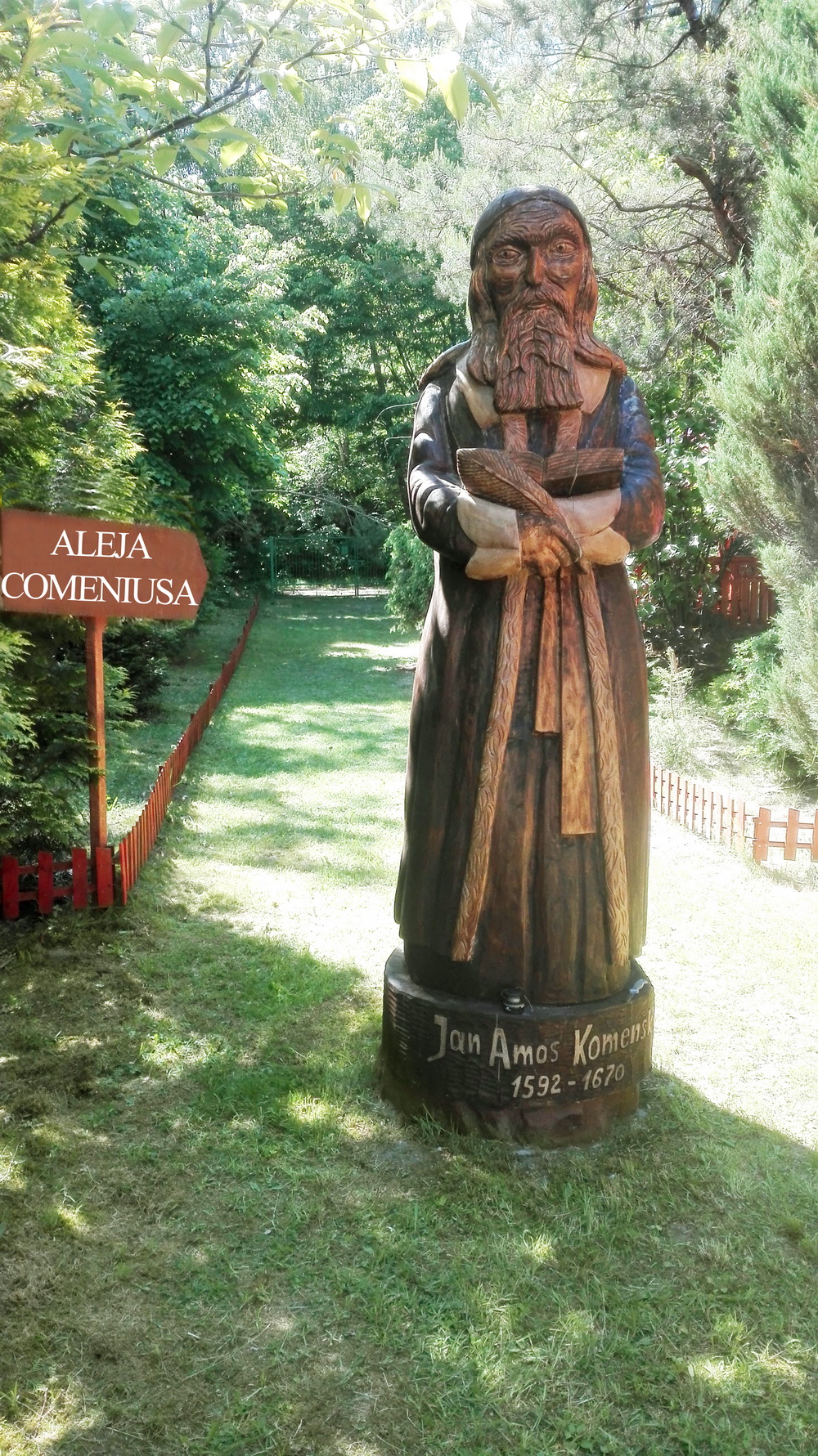
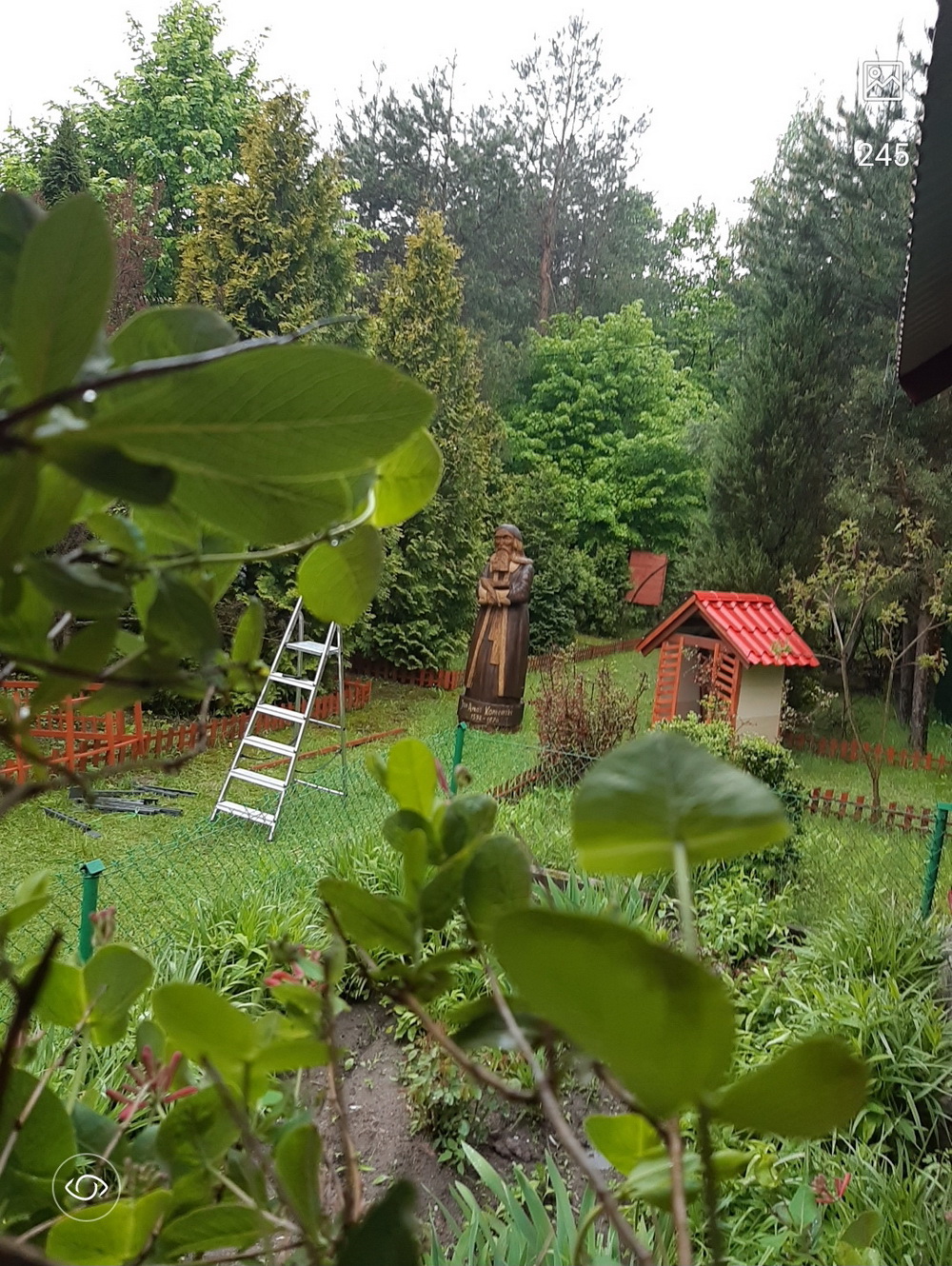
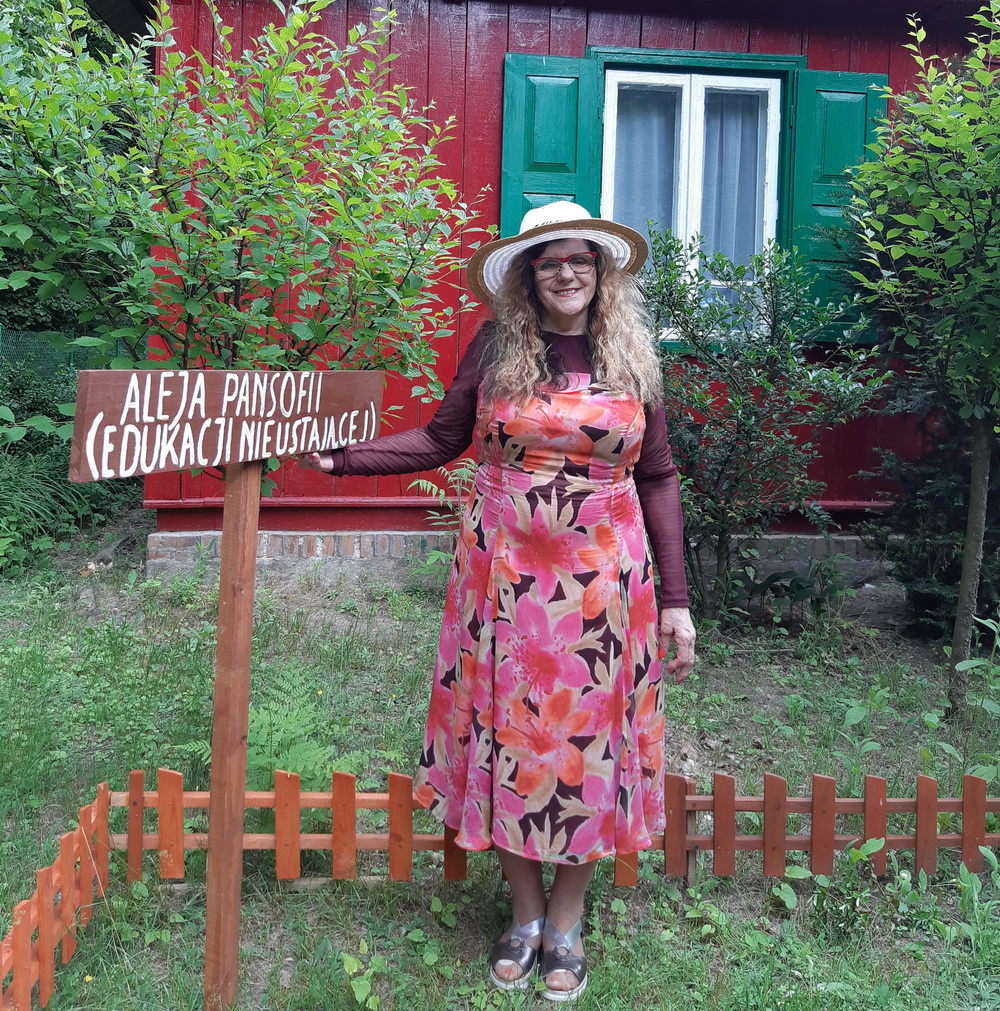

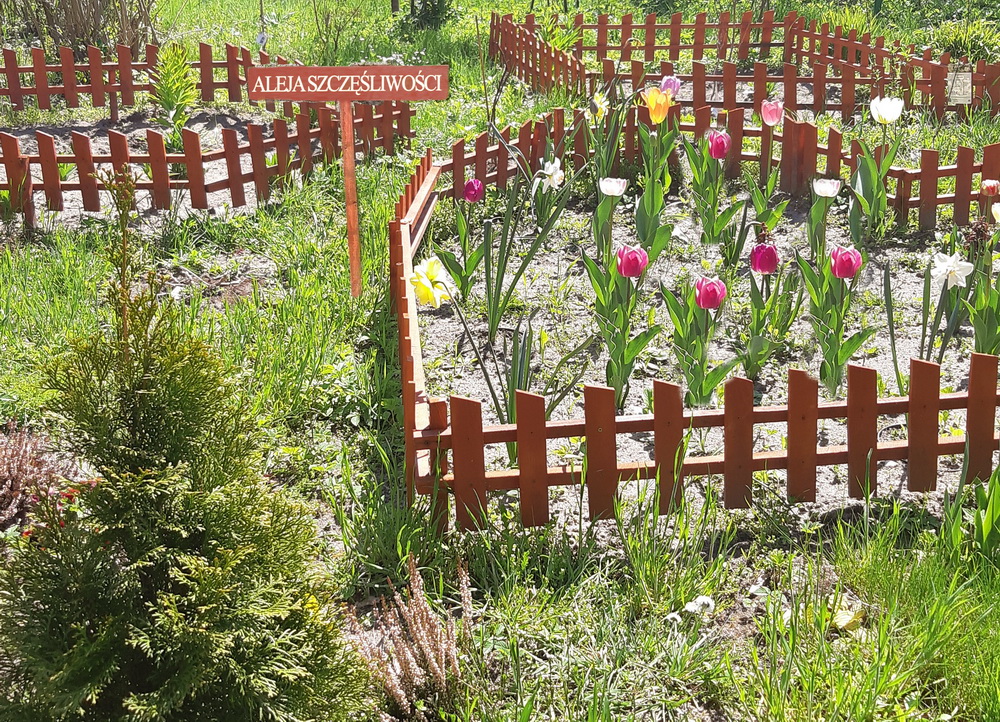
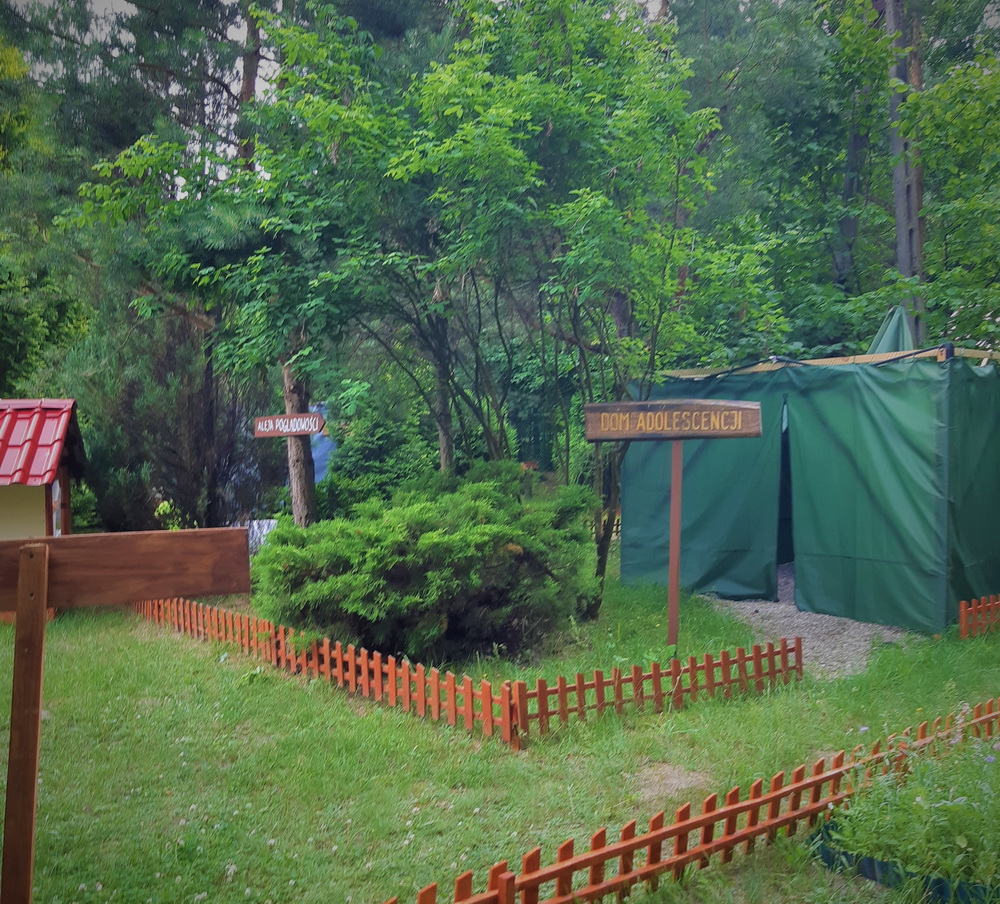

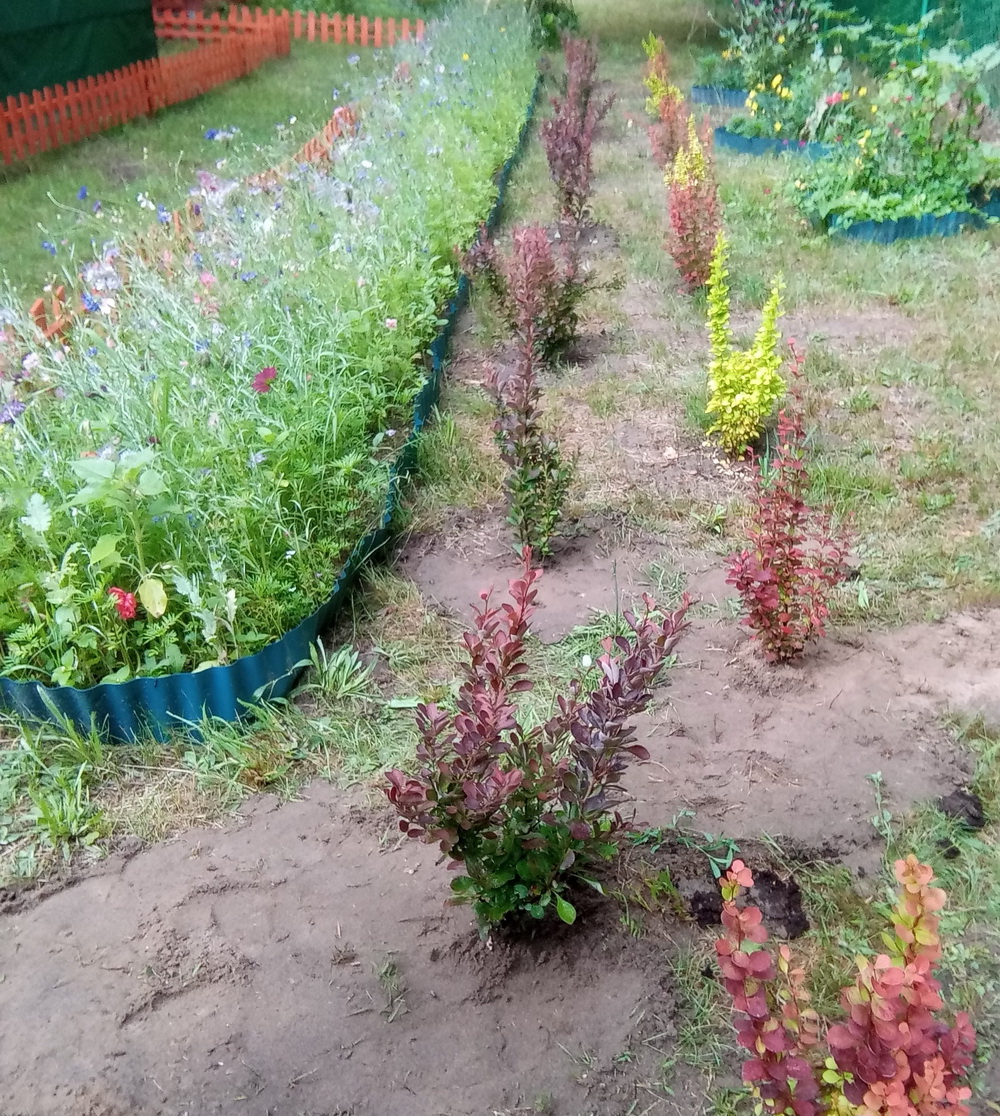

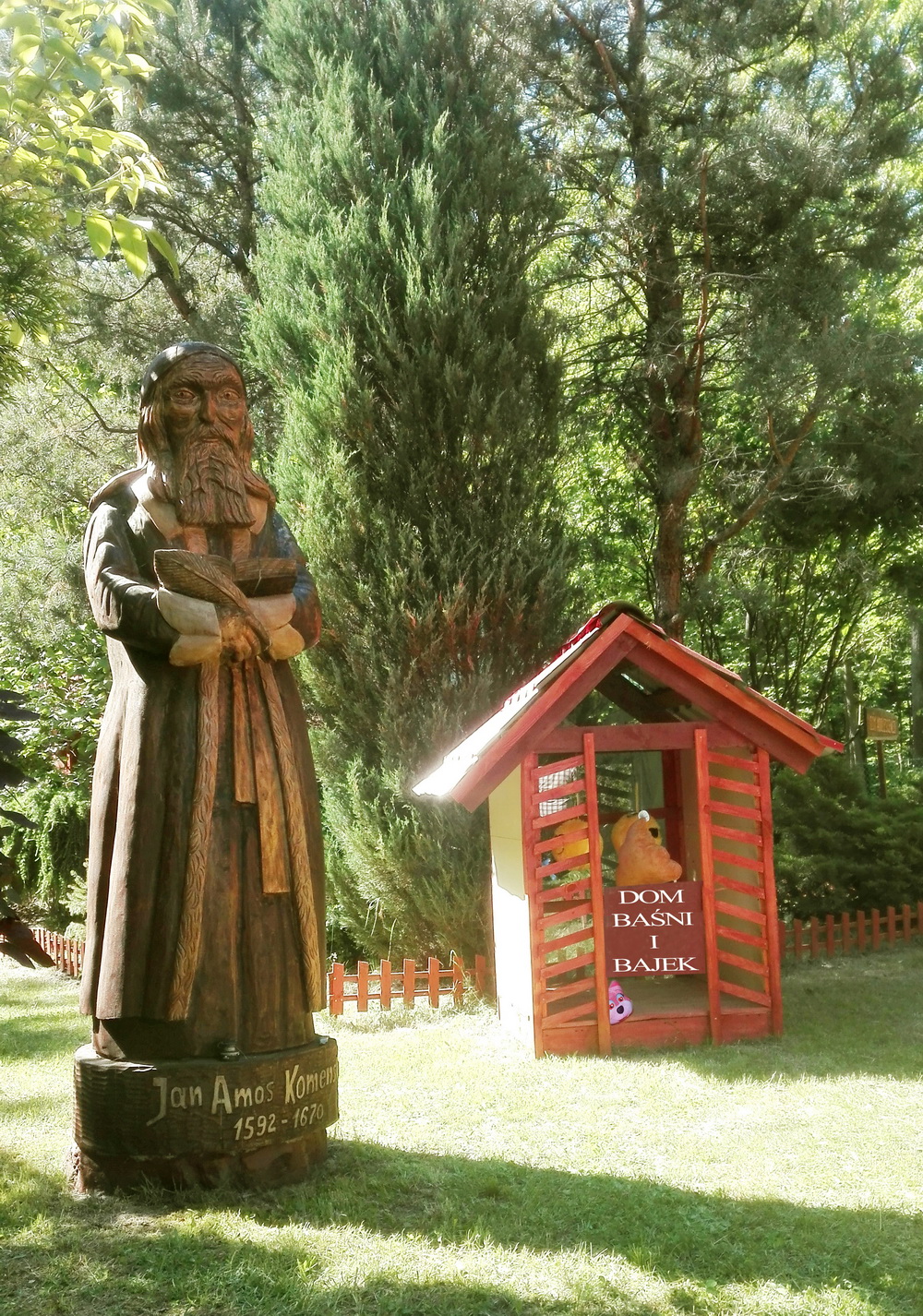
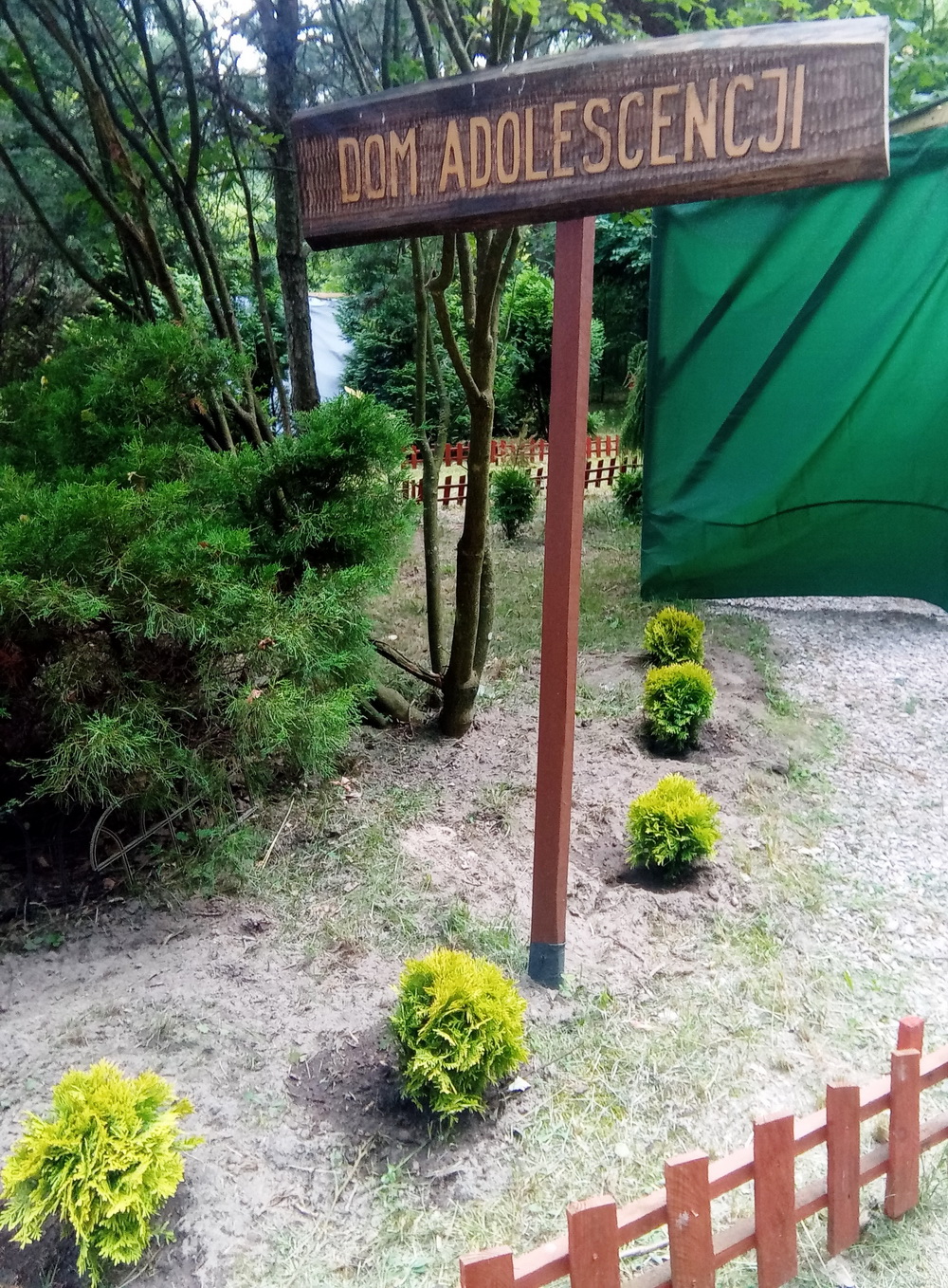
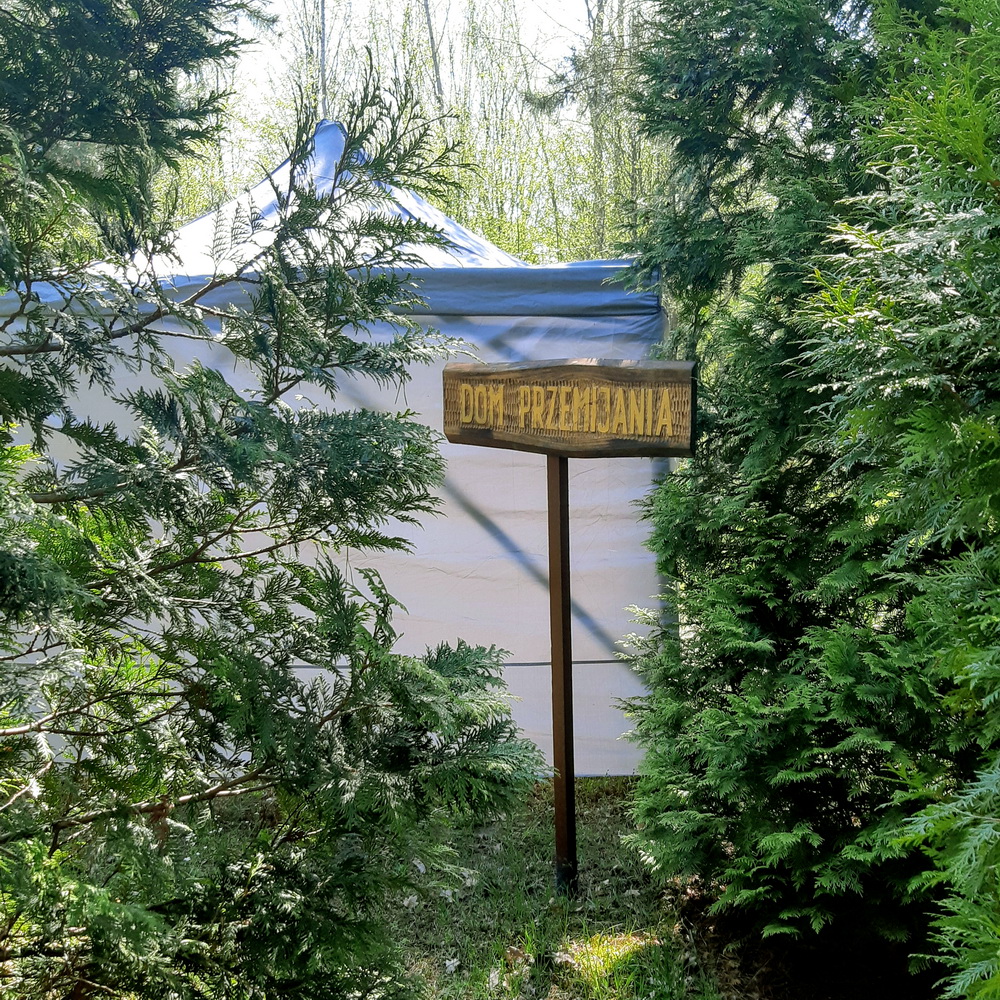
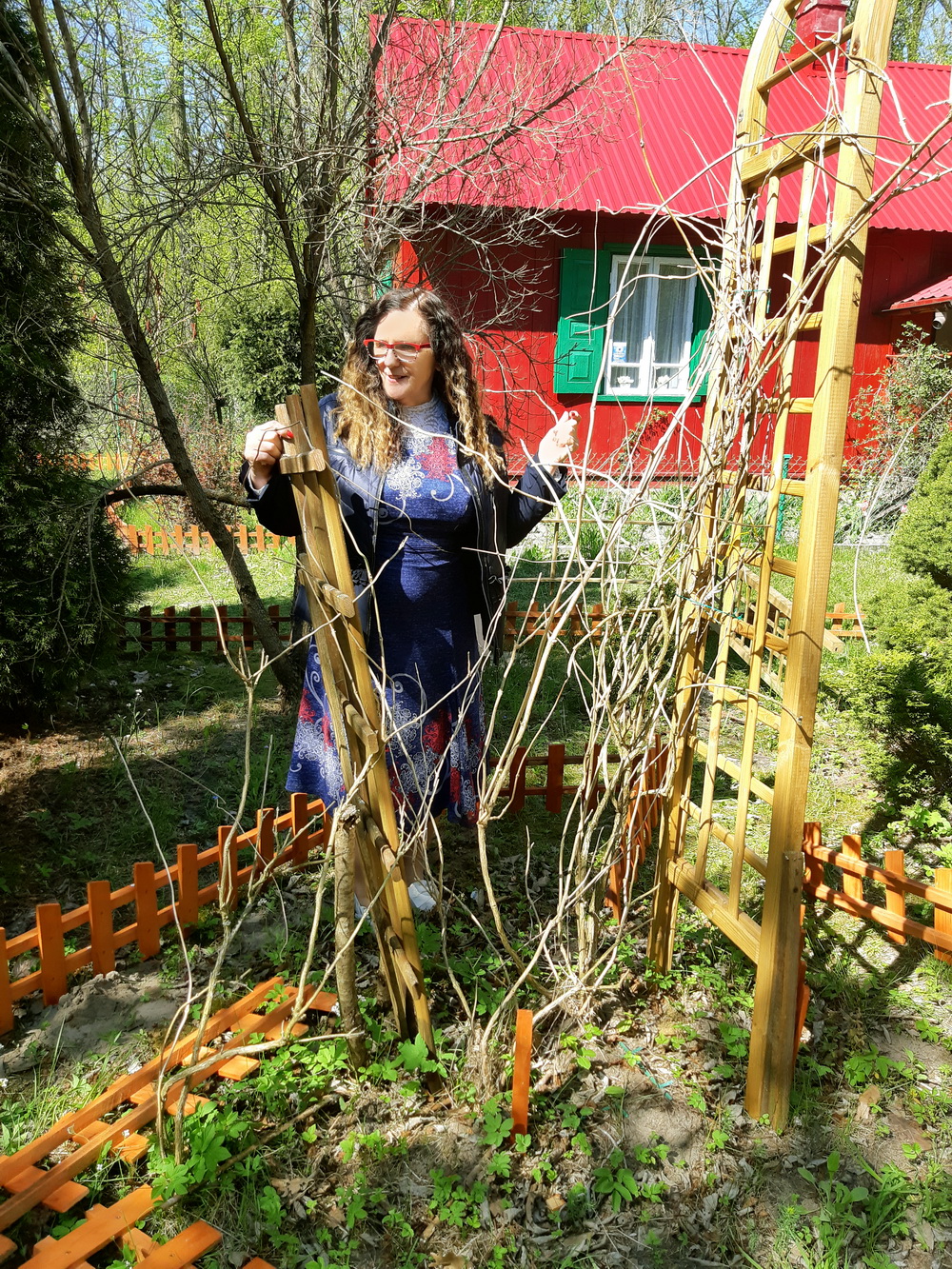
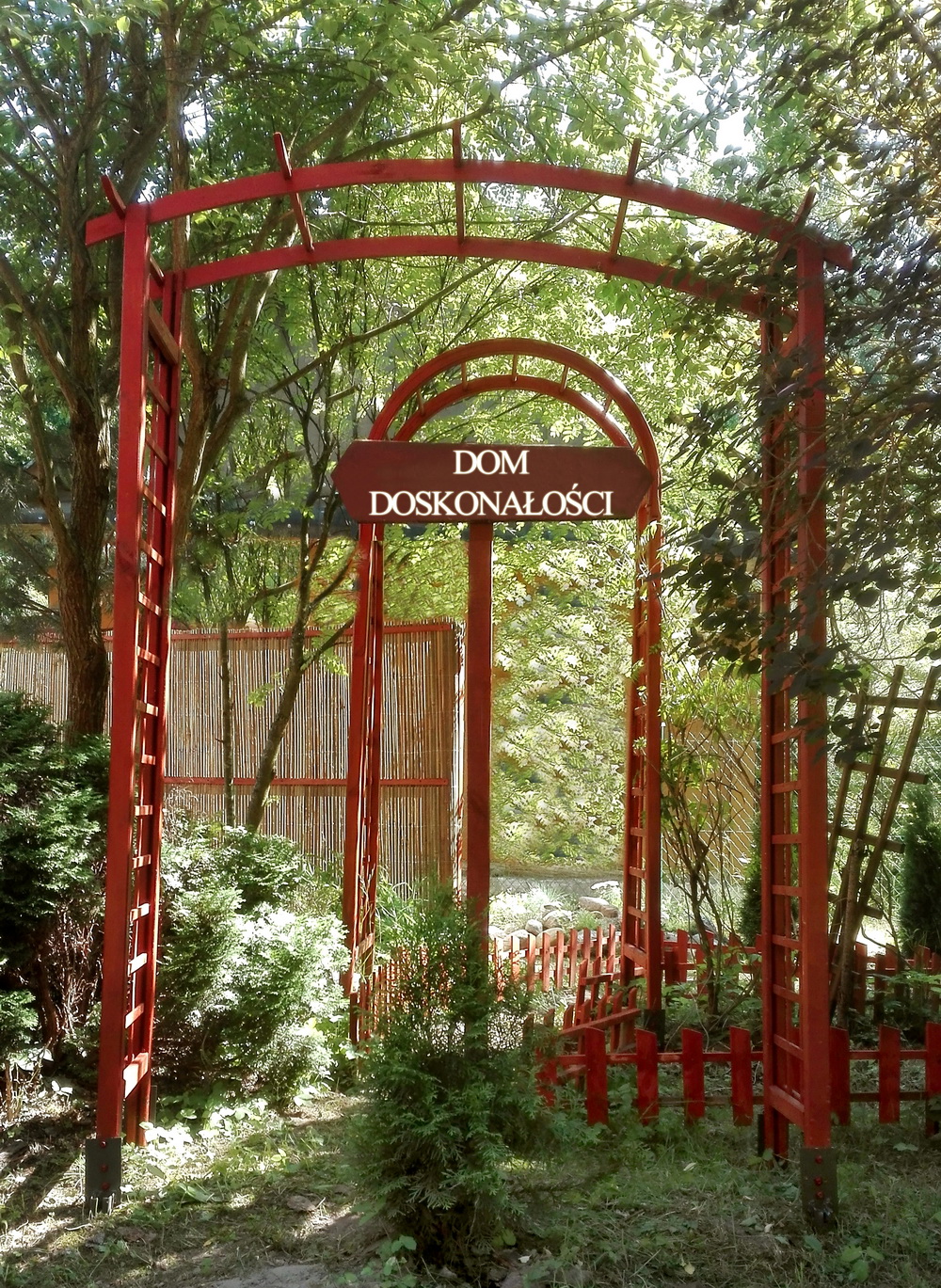
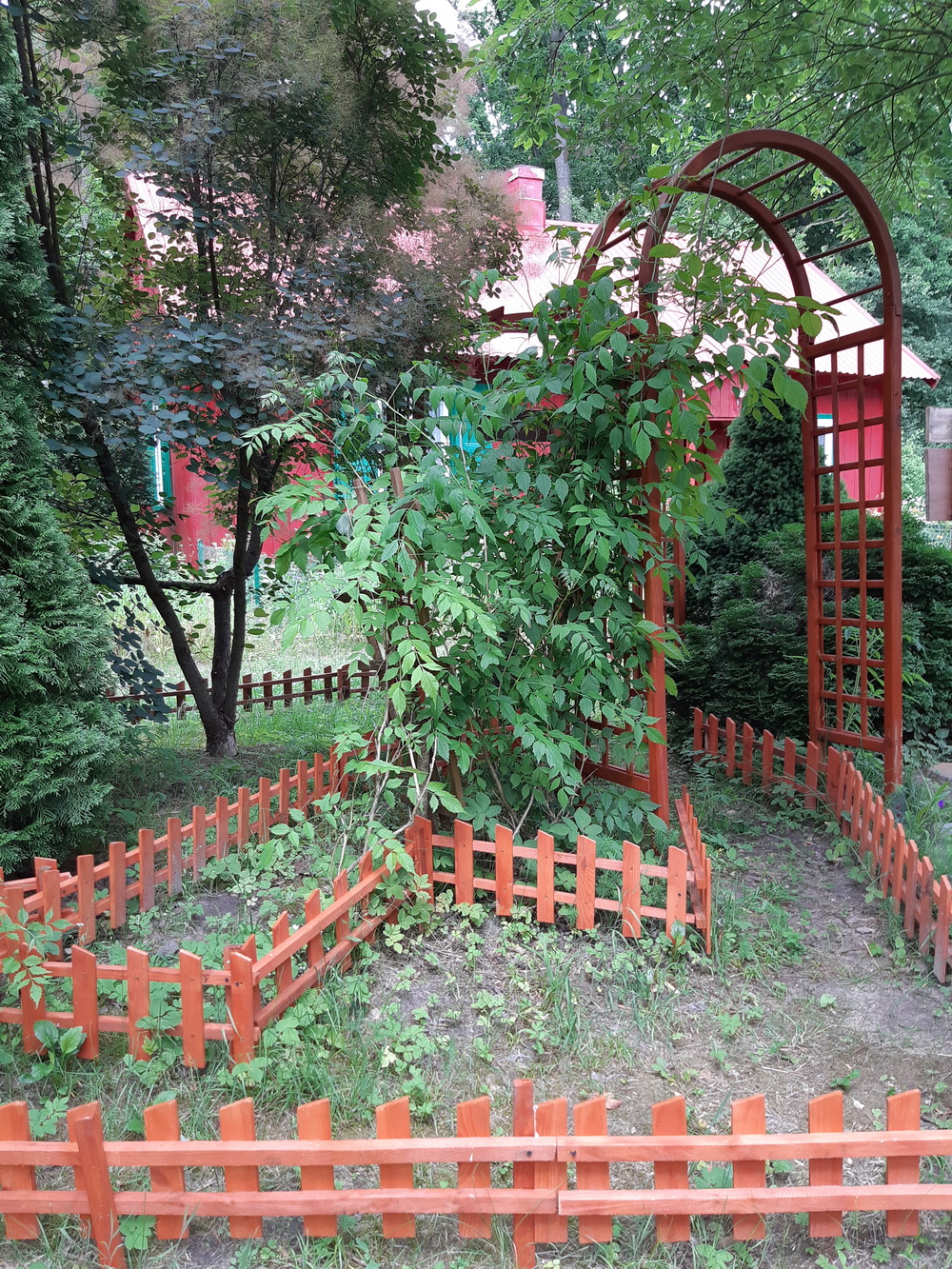

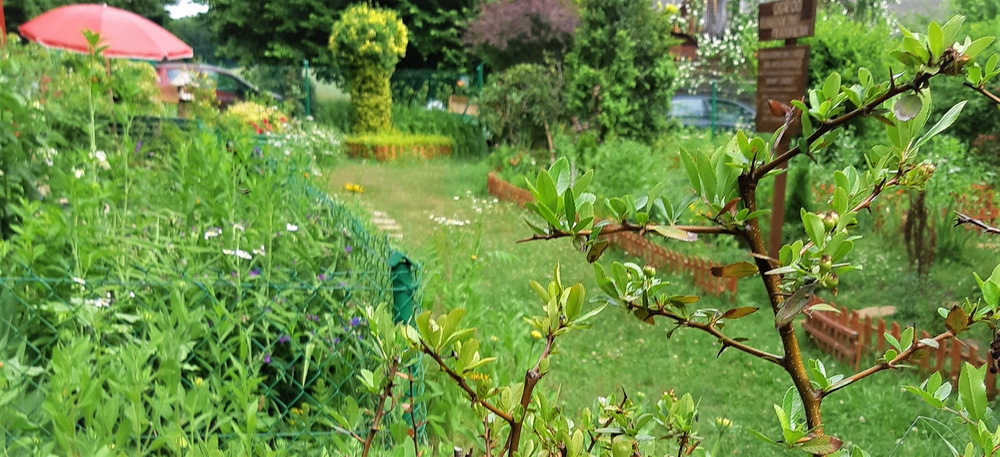


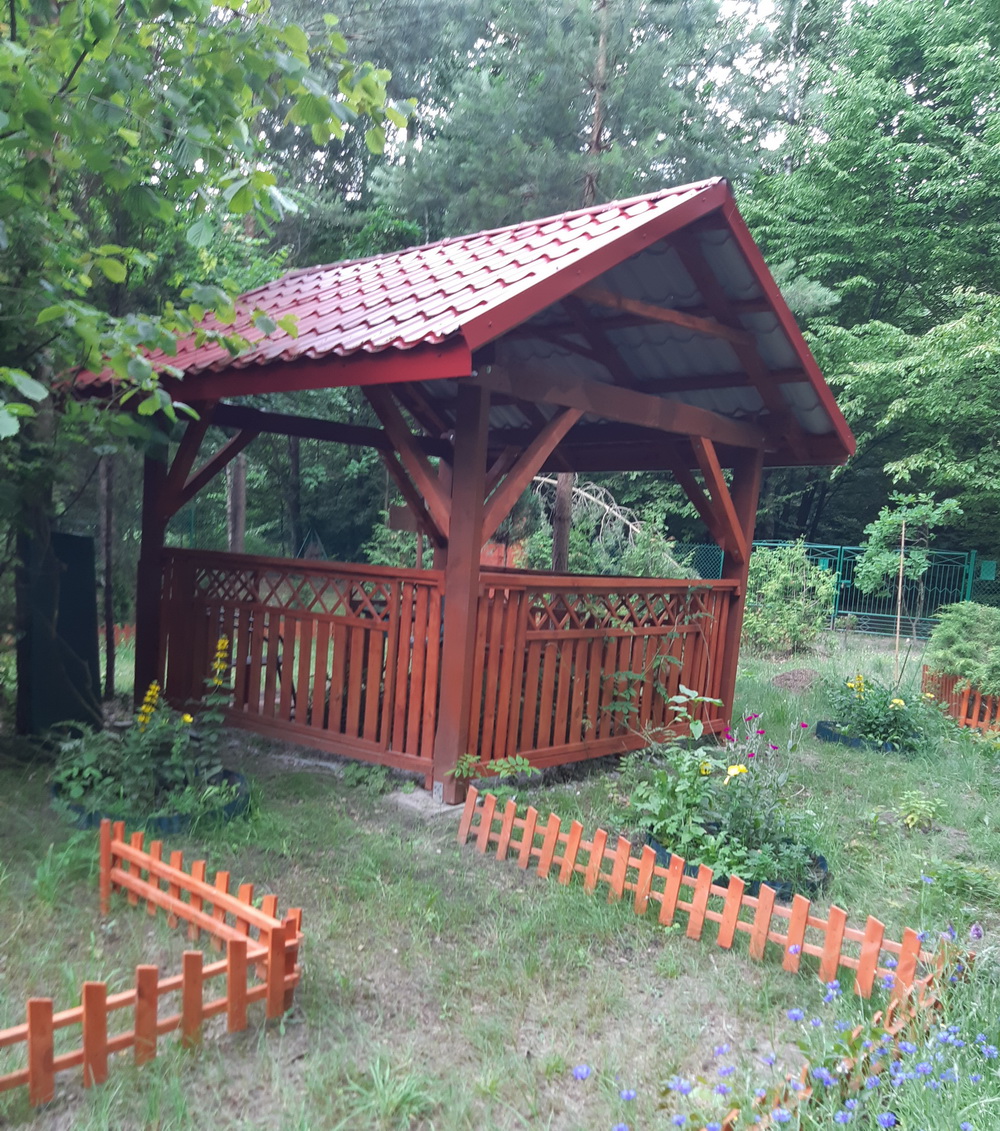
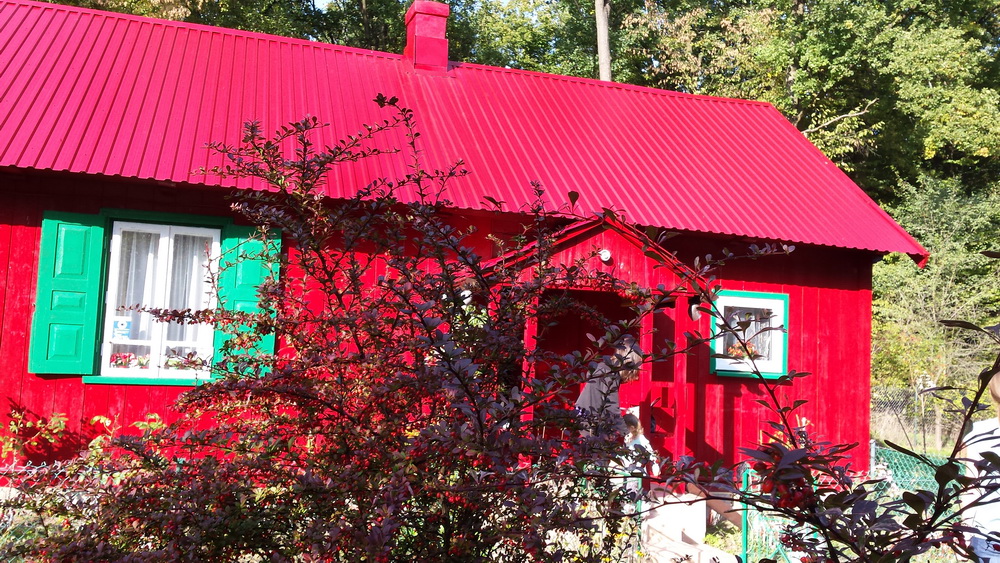
Barbara's family home - place of birth, childhood and early youth.
The GARDEN is full of life, and its dynamics makes our lives meaningful and gives us a lot of positive emotions. It is more and more beautiful. Its appearance is the result of my GARDENERS’ work: the major GARDENER - PETER – THE CREATOR. It is him who made the fences in the form of hearts and other shapes (now flowers are blooming inside them); an arbor symbolizing the HOUSE OF SELF-KNOWLEDGE AND REFLECTION; he assembled all the facilities (supported by Adam and Krzysztof). The flowers and shrubs are cared for by EWA THE GARDENER, enamored of flowers, who is supported in all her activities by the youngest GARDENER – KRYSTIAN (a secondary school student), the creator of the HOUSE OF DEMONSTRATIVENESS. All of them are involved in the GARDEN work, and what is the most important is that they are joined by unbreakable bonds, which were formed THERE, in the COMENIUS GARDEN.
BETWEEN WINTER AND SPRING
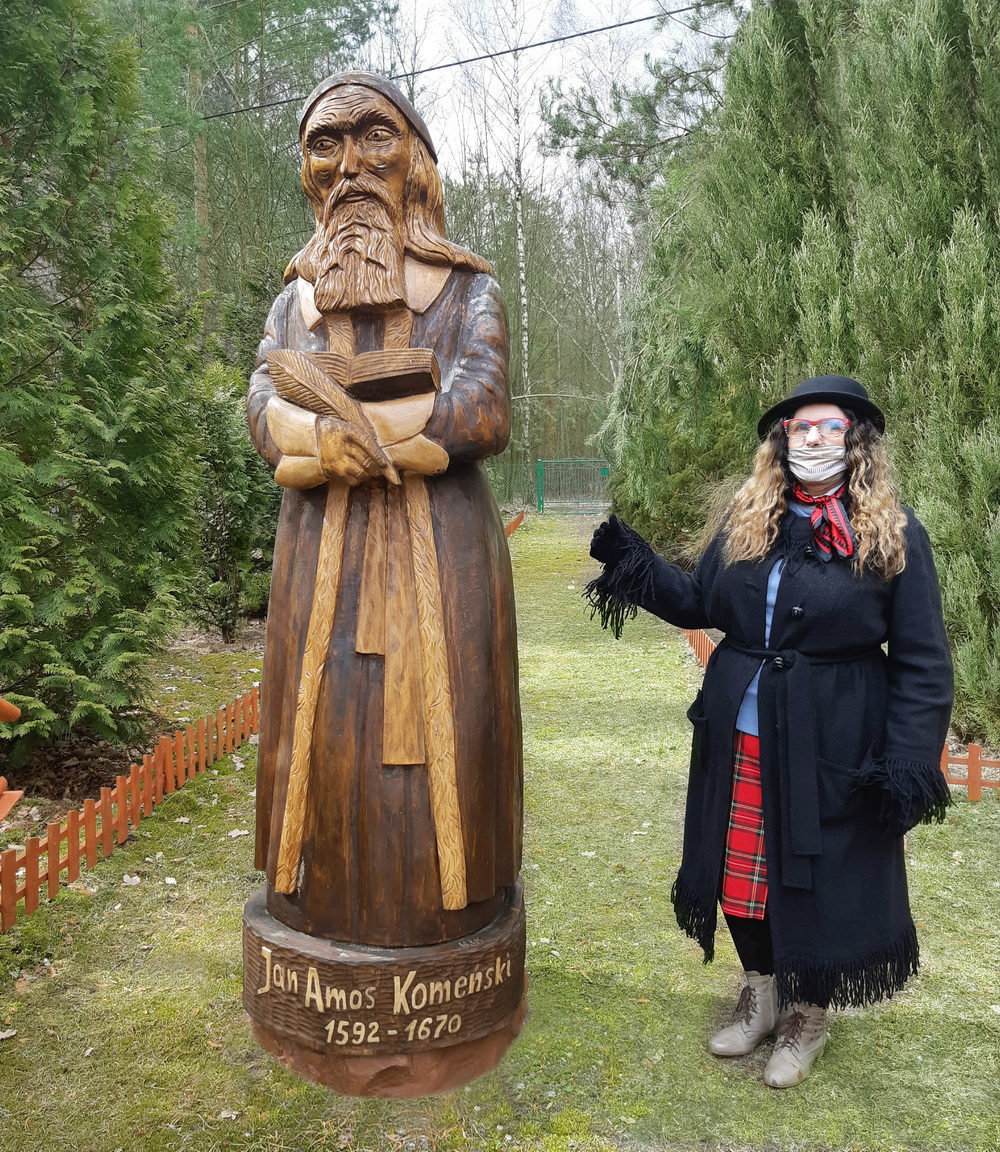
As shown in the picture Between winter and spring, Barbara is emphasizing the time of the COVID-19 pandemic with her face mask.
The sculpture of John Amos Comenius survived this year’s beautiful snowy winter perfectly. My dream of a beautiful snow-covered robe of the figure came true. The snow disappeared quickly and everybody was expecting an early spring. However, it did not come for a long time. It was still cold, and the shrubs and trees still did not have buds or leaves; the grass was hardly green.
The COVID -19 pandemic was still raging, and we had to wear face masks. We even wore them in the garden. Even THERE, we talked about the pandemic and about what it had changed in our lives, how it had influenced the education of children and young people. We exchanged our knowledge and experience of distance teaching and learning. The times of Comenius were not pandemic-free, either. There was plague, a terrible fatal disease. As a teacher of the Secondary School in Leszno as well as a clergyman, Comenius visited the residents of the town to support them morally and offer his help, regardless the high risk of infection. It mattered a lot to them.
SPRING

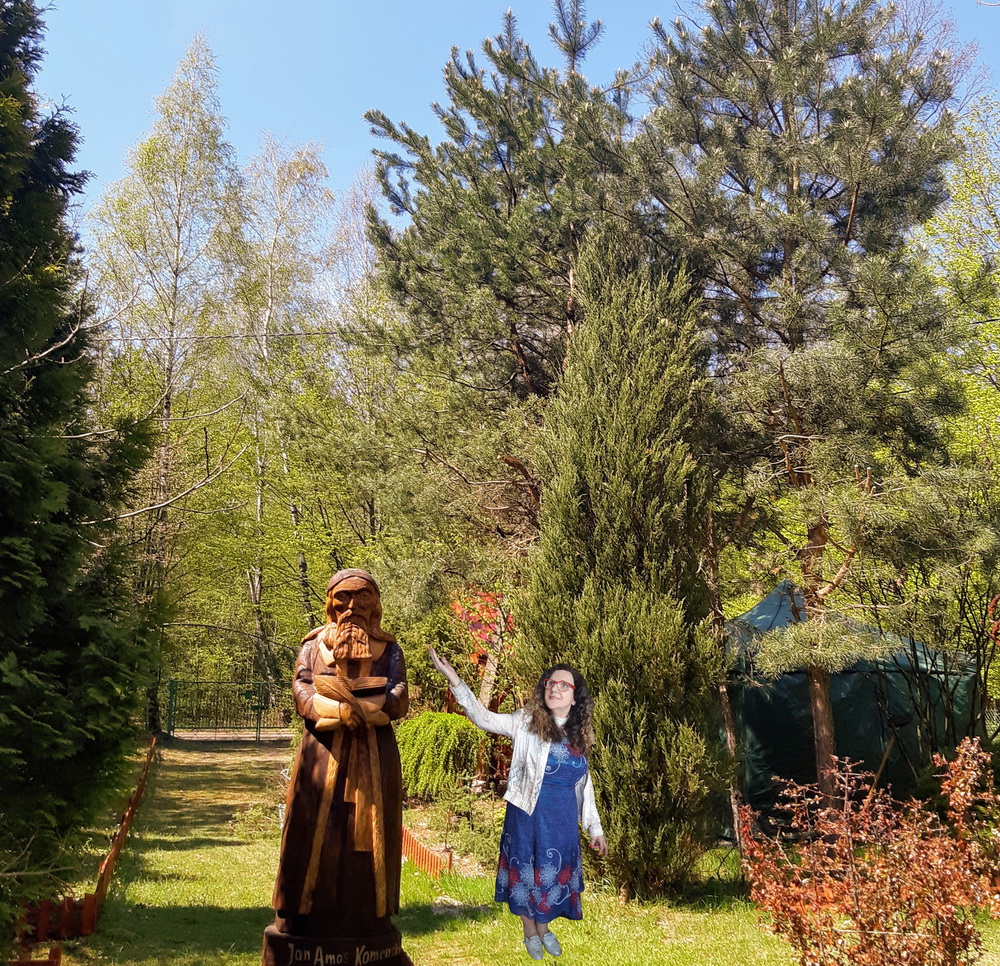
If we attempt to relate the SEASONS OF THE YEAR to JOHN AMOS COMENIUS’ IDEAS, especially the IDEA of PANSOPHISM – LIFELONG EDUCATION (“Whole life is school” – see the previous pictures taken in the GARDEN), we will see that everything makes perfect sense. In our GARDEN, the entire PROCESS of human life begins in autumn (it is then that the sculpture arrived at the GARDEN and autumn is the time that the walnut tree gives fruit (in our concept, two joined walnuts (a couple) symbolizes the prenatal period (from conception till birth).
This year, the walnut tree is growing better than in the previous years, and its branches are covering the figure of John Amos Comenius. Will the autumn fruit appear in pairs, like the year before?

In our concept, the SCHOOL OF BIRTH is symbolized by SPRING, and AUTUMN and WINTER symbolize the mature age – i.e. the school of mature men and women, a symbolic school, without the teacher or textbooks. You have to fend for yourself. First of all, you must gain knowledge of the conceived and born child, of its infancy, childhood, and youth. In our GARDEN, these “schools” are symbolized by such facilities as the HOUSE OF FAIRY TALES, located in the neighborhood of the newly-created HOUSE OF PLAY. Comenius attached much importance to children play in every child’s life, as it is through playing that the child develops, and the mature parents should support this development.
SPRING symbolizes childhood, but also youth and the very difficult, for both parents and children, period of adolescence. In our GARDEN, this period is symbolized by the HOUSE OF ADOLESCENCE, located in the main ALLEY OF PANSOPHISM (LIFELONG EDUCATION).
Below, you can see some pictures of the GARDEN facilities in spring. In the first picture, Barbara is inviting you for a visit to the GARDEN in spring, starting from the ALLEY OF PANSOPHISM (LIFELONG EDUCATION). The following pictures show particular sections of the GARDEN in spring.
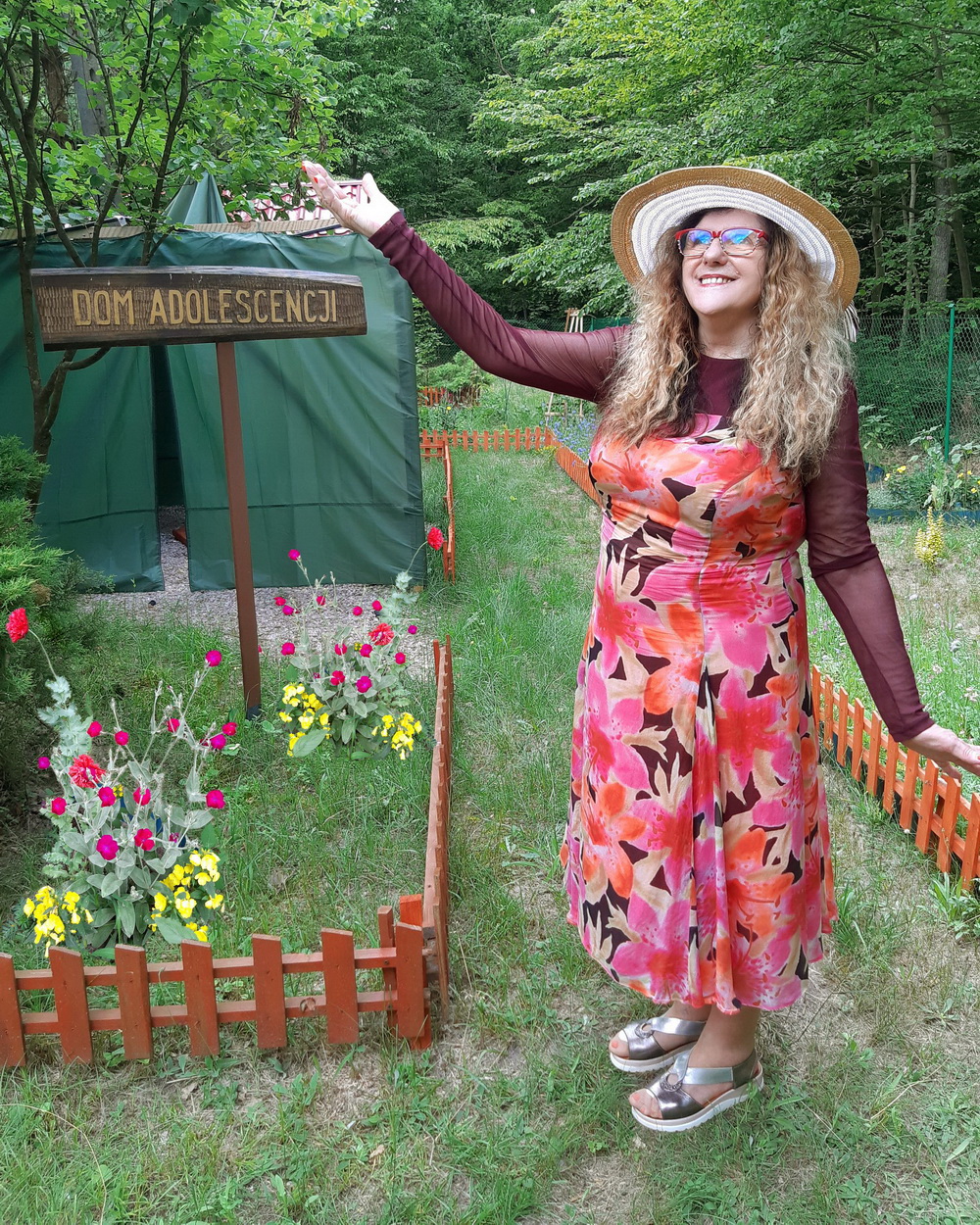
The ALLEY OF DEMONSTRATIVENESS is perpendicular to the ALLEY OF PANSOPHISM (LIFELONG EDUCATION), and the HOUSE OF DEMONSTRATIVENESS is located at the other end of the GARDEN.

Below, you can see a picture of the section of the GARDEN with colourful hearts made of fences, filled with buds of lilies and dahlias, with a view of the HOUSE OF DEMONSTRATIVENESS, and a picture of the flowers and shrubs blooming in May.

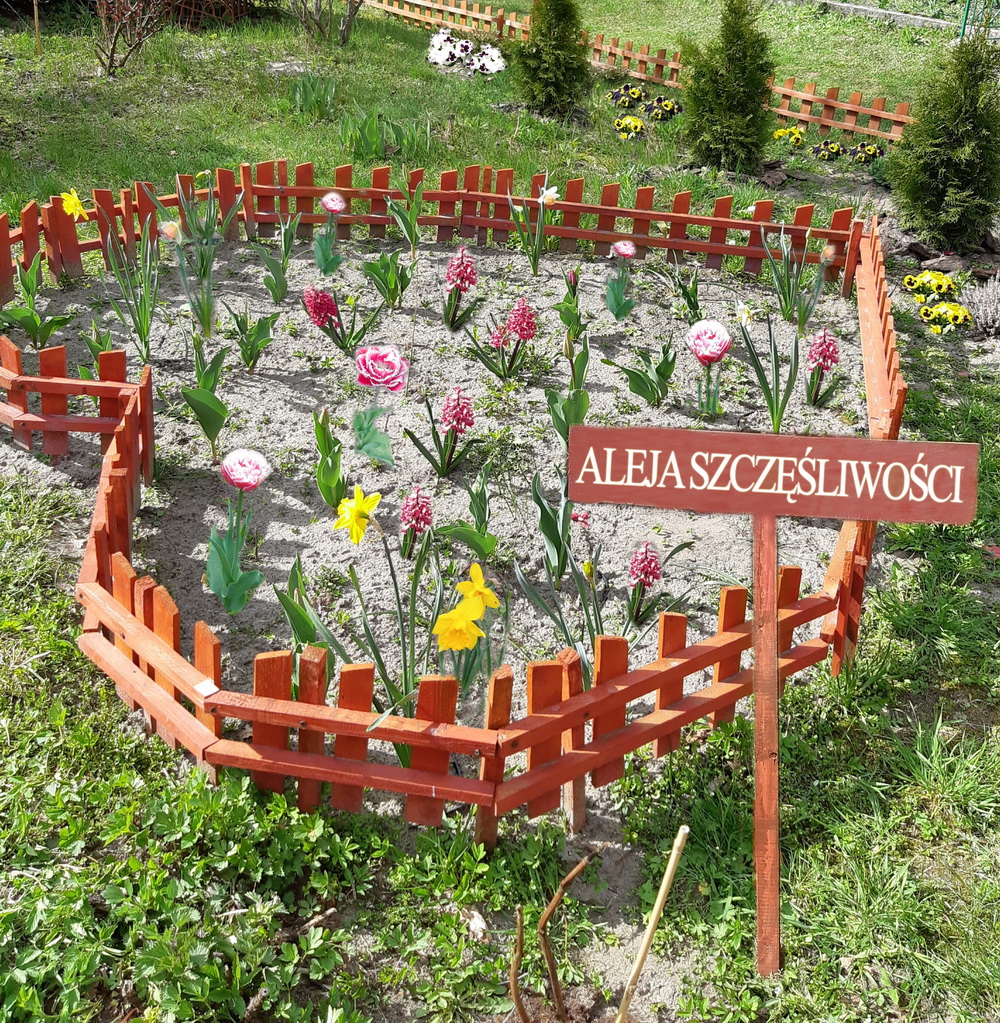

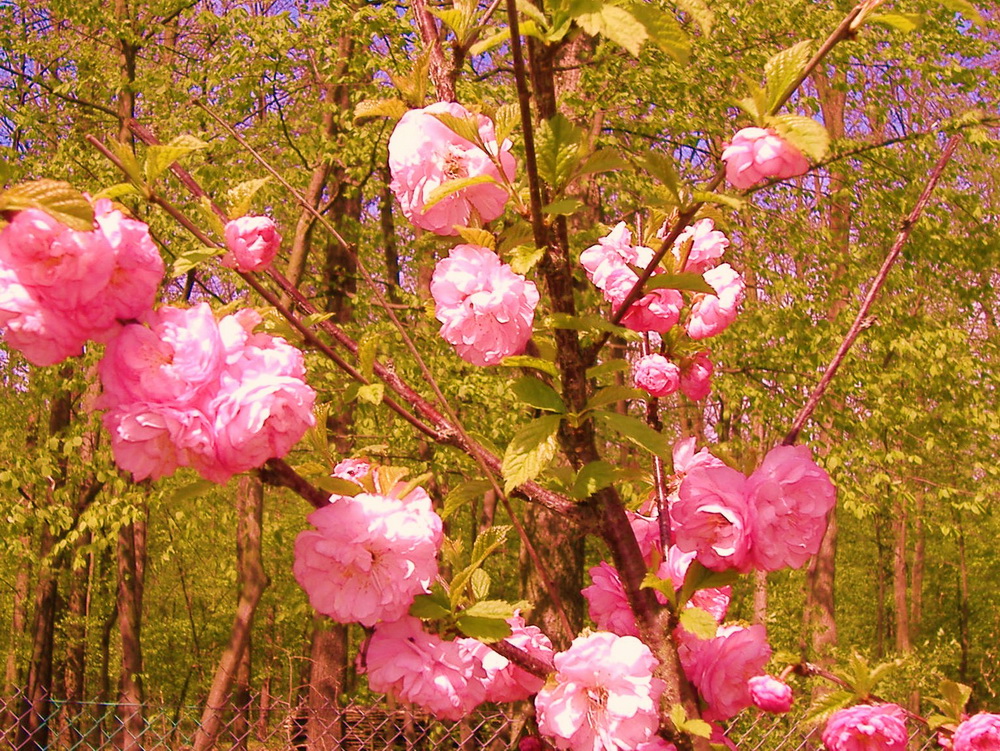
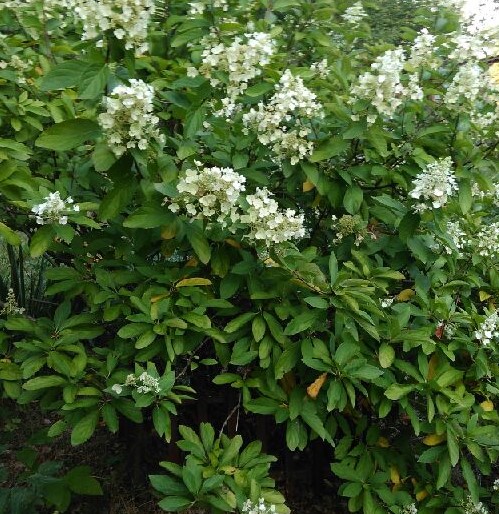
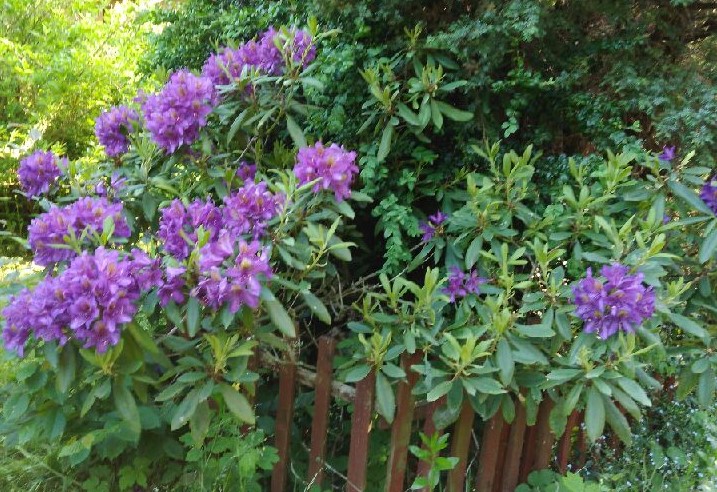

John Amos Comenius is considered to be the creator of the principle of demonstrativeness. As he believed, children and young people would not gain any knowledge unless they came into a garden, saw the trees and shrubs growing there, noticed the shapes and colours of their leaves and flowers. It is not enough to ENTER THE GARDEN just once, it is necessary to observe the plants systematically. Then, one might even see the buds on the trees and shrubs turn into leaves and flowers in early spring. In our GARDEN, there are a lot of such places. My favourite one is the ALLEY OF HAPPINESS. It is symbolized by flower fields in red hearts and other geometric figures, made by Peter the Gardener. As soon as autumn, flowers were arranged inside them so that they blossom in spring, summer and autumn. In autumn, Ewa the Gardener planted some flower bulbs to blossom for the whole spring, summer and autumn. I urge you to see them (from early spring till summer).
In the garden, you can also see animals and birds, and learn to recognize their calls. This process never ends, that is why the garden with its unusual dynamics should be observed all year round. This is what the children and young people learn, together with their parents, or even grandparents, as education never ends, it is everlasting, life-long (I gained knowledge about the garden and forest for the first time in my family).
In the GARDEN, many more facilities appeared in spring that have not been presented before. It is also worth seeing the rock gardens with characteristic plants. Ants have settled in the garden. They built an anthill near the HOUSE OF SELF-KNOWLEDGE AND REFLECTION. We are watching their constant work on their HOME with great interest.
Below, you can see some pictures of the rock gardens and the anthill.
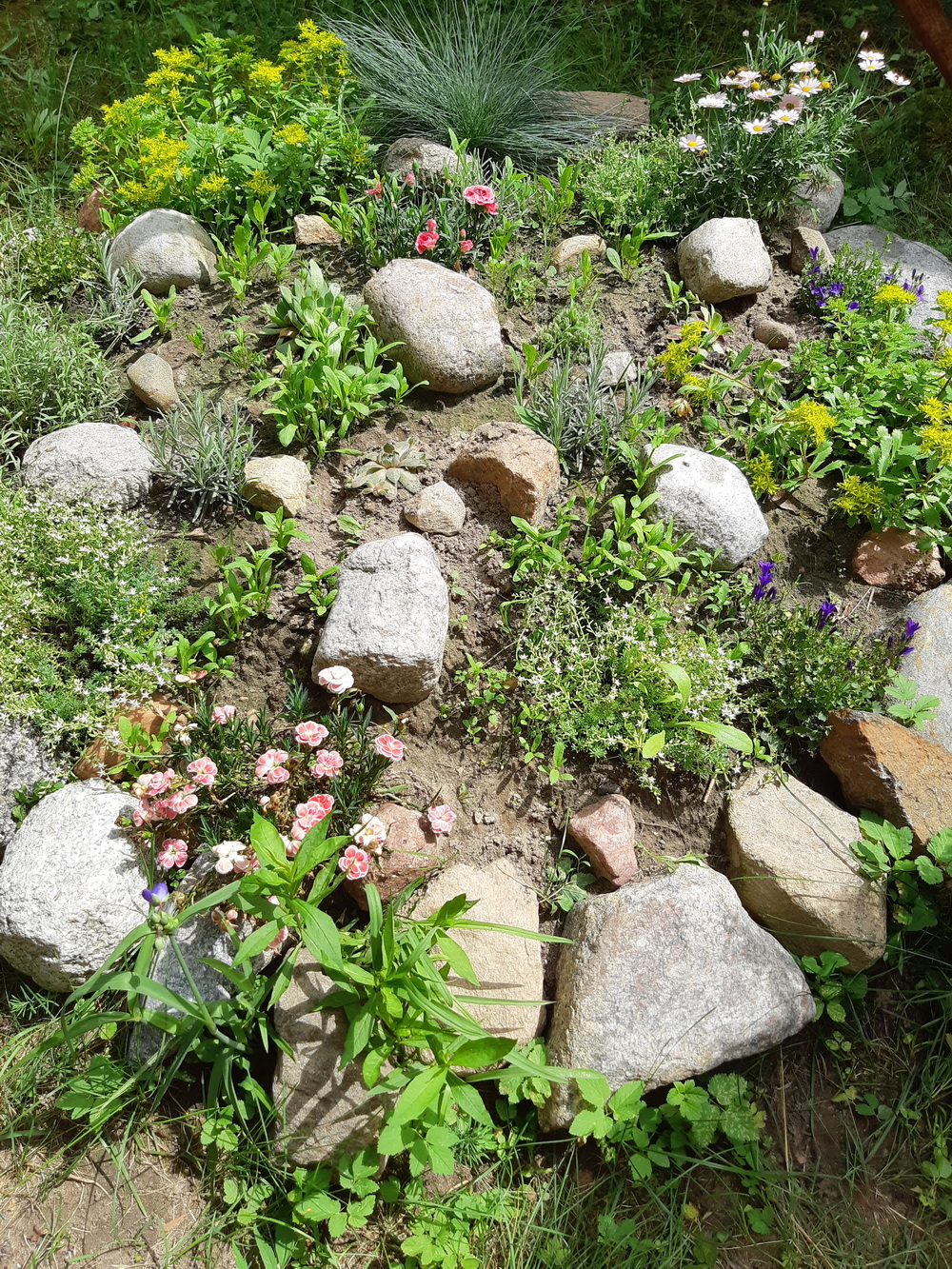
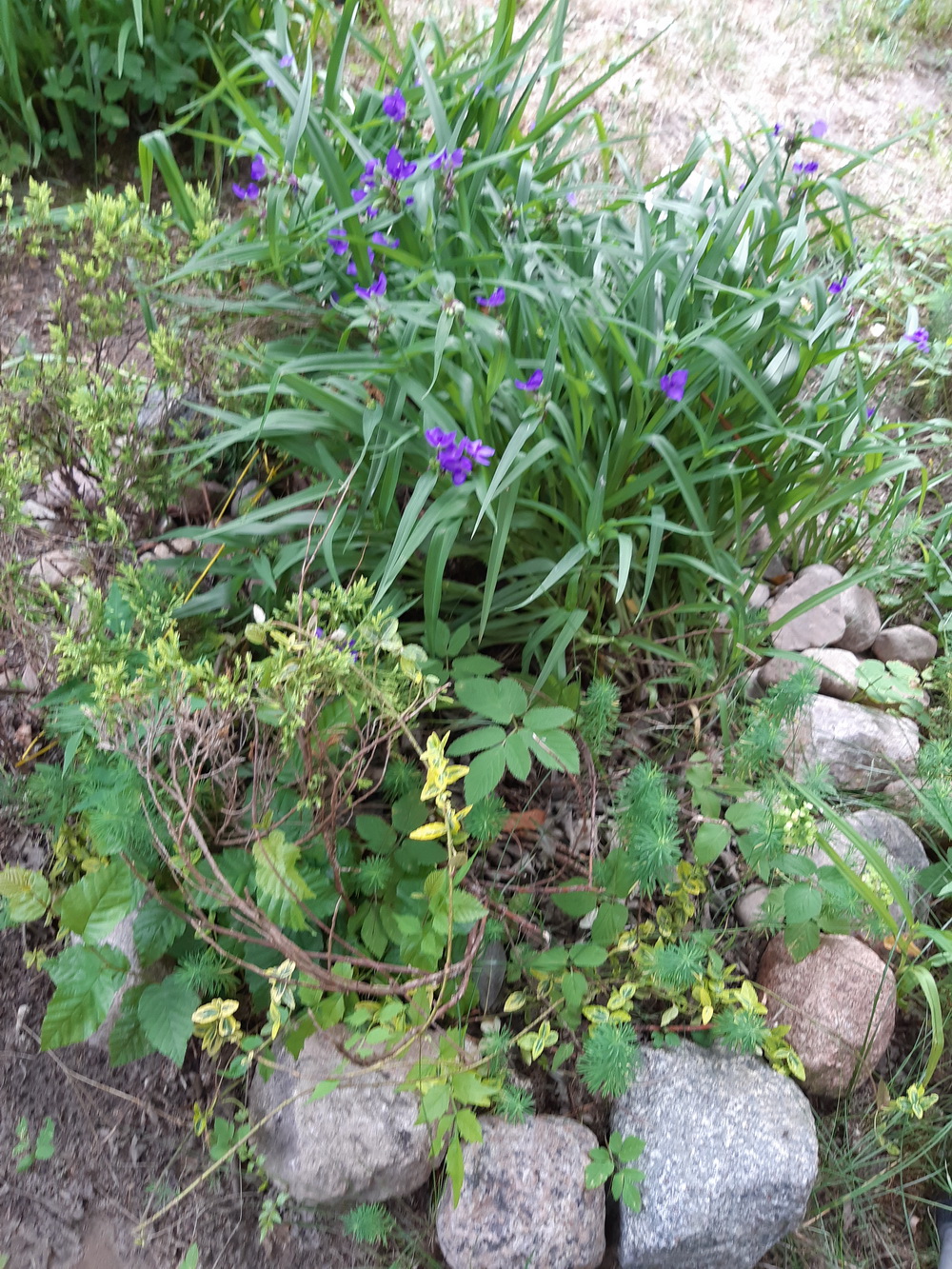
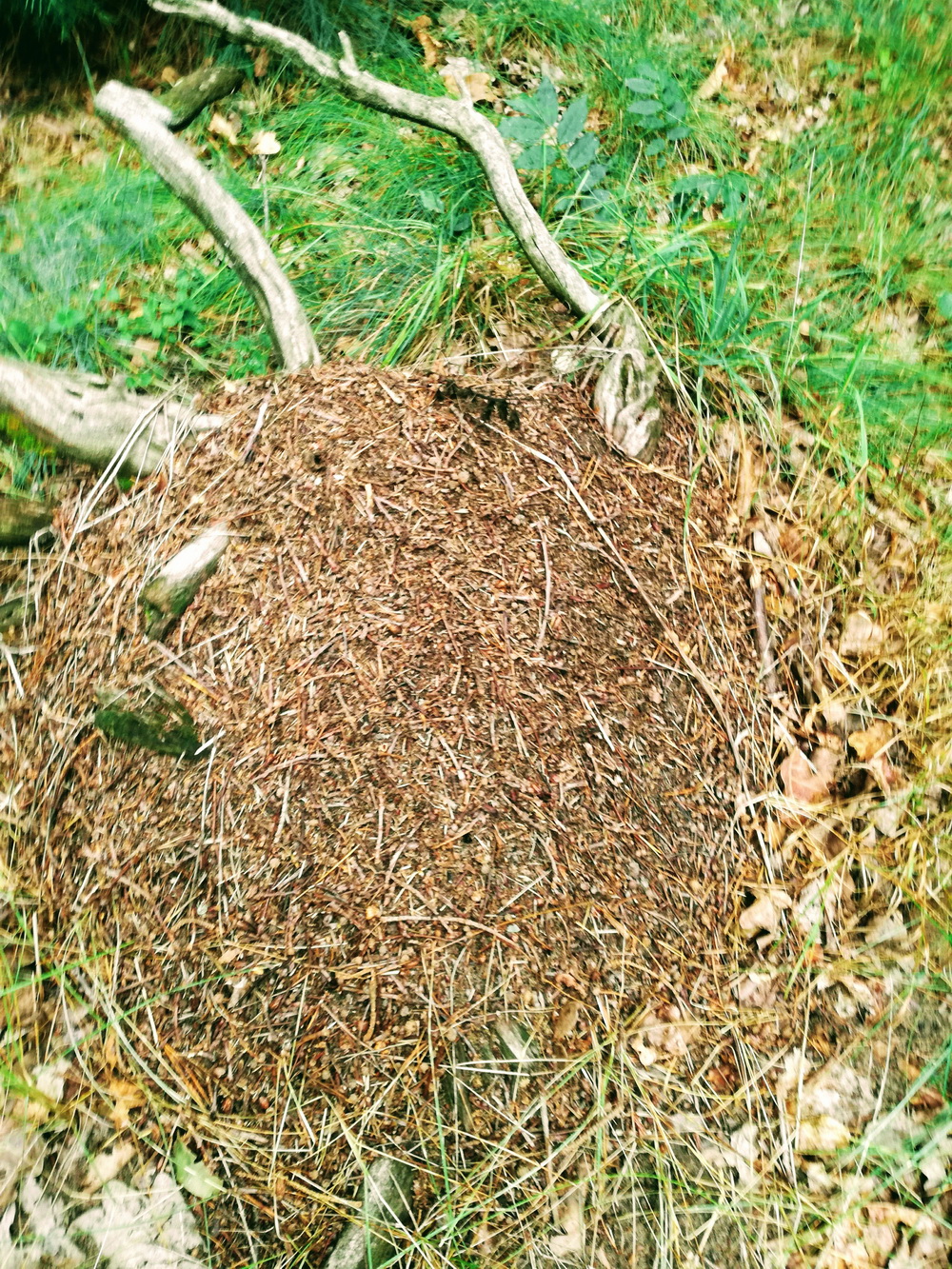
Such education is gained by everyone who learns not only from books, but from gardens, forests and fields as well, and first of all, learns from other people. However, it is only possible if the FAMILY members are linked by special ties and support one another’s development. Such a “binder” is the family home, where we grow up and develop, gaining comprehensive knowledge, developing our skills and abilities and shaping the values it gives us. Love for our FAMILY HOME never ends, even when we already have our own homes. It is a place of memories and learning from our own biographies. In OUR/MY GARDEN the HOUSE is still cared for after my PARENTS’ deaths (1985, 2014), AND THIS PLACE is still the ultimate VALUE for me. It is there that I always came back during my youth and adulthood. At present – in the autumn of my life – it has taken on still another meaning, another dimension, and given a special meaning to my life.
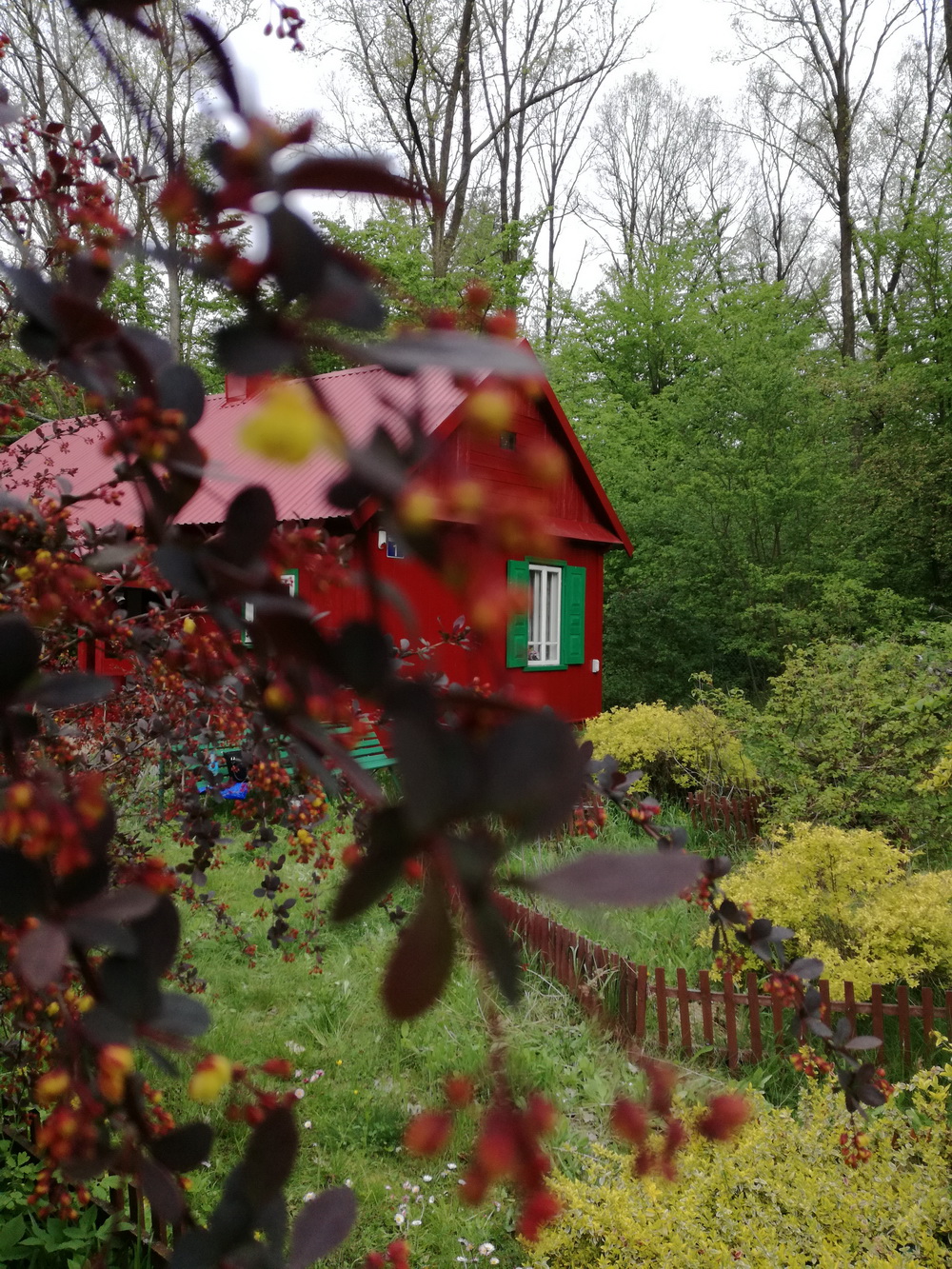


According to John Amos Comenius’ idea of pansophism, man constantly gains comprehensive knowledge about the world and the society, about other people and interactions with them (two processes are involved here: intentional and unintentional). As Comenius wrote, it is necessary to “teach people how they should use the accumulated light of wisdom in all their life works, so that, going through any good and evil safely, they finally reach the best exit” and pursue happiness and perfection all the time. It is the same at present. Everybody wishes to be perfect and happy. However, the range of these concepts at present is different than it was then. The pursuit of happiness and perfection always has a philosophical dimension and gives meaning to life, as we are never able to reach full perfection, but the very pursuit of it already is perfection, as great philosophers say. Understanding happiness is even more difficult, as IT has no single name and everyone understands it in an individual and therefore unique way. For some people happiness is love, family and friendship, and others associate it with self-fulfillment and self-development. I believe that happiness is available to us in a different dimension at each stage of life. I often repeat spontaneously that it is great happiness to have kind people around me and be able to co-operate with them. Then I can fulfill myself fully and, consequently, help OTHERS with their self-fulfillment. It is the highest need and, at the same time, the most difficult to meet.
In our GARDEN, John Amos Comenius’ idea of happiness and perfection is emphasized by such facilities as the ALLEY OF HAPPINESS and the HOUSE OF PERFECTION.
The opposite of the idea of happiness and perfection is the idea of LABYRINTH. In our garden, it is the ALLEY OF LABYRINTH, which was, however, created in the neighbourhood of the HOUSE OF PERFECTION and near the ALLEY OF HAPPINESS. Such location of the facilities is not a coincidence. Even in the most difficult labyrinth of life, there is hope for leaving it and seeking happiness and perfection. Many people succeed at getting out of the labyrinths of life. In my opinion, they are the ones who reach a high level of knowledge about themselves (self-knowledge).
Comenius assumed the thesis that the process of education is permanent and requires continuous work on yourself, throughout your life. Life is, however, full of labyrinths at each stage, which are difficult to get out of. For Comenius, it is easy. It is enough to learn for your whole life, get educated, gain knowledge, as “KNOWLEDGE is the LIGHT and cure for all evil”. First of all, however, you should gain knowledge about yourself, observing yourself in different situations and with different people, taking part in MEETINGS (it is when we gain most knowledge about ourselves, mainly through analysis and interpretation of the OTHER one’s reaction to our words, gestures and facial expression). It is Comenius who was the creator of the idea of self-cognition. At present, it is a priority idea. We keep gaining knowledge about ourselves, learning from our own biographies and from others’ biographies. At this point, it is worth referring to the literature which can help US – CONTEMPORARY PEOPLE with this difficult life task of – as Comenius would say – getting out of the LABYRINTH of life. For me, the book Prevalence and exception. Development of an adult’s personality by Anna Gałdowa (2000) is very helpful, as well as the books about biographies by Danuta Lalak and of the series edited by Elżbieta Dubas. Gaining knowledge about yourself is life-long. In our GARDEN this IDEA by Comenius is symbolized by the HOUSE OF SELF-KNOWLEDGE AND REFLECTION, where I think about life and write a book about school and lifelong education. The described issues are presented in an autobiographic perspective.
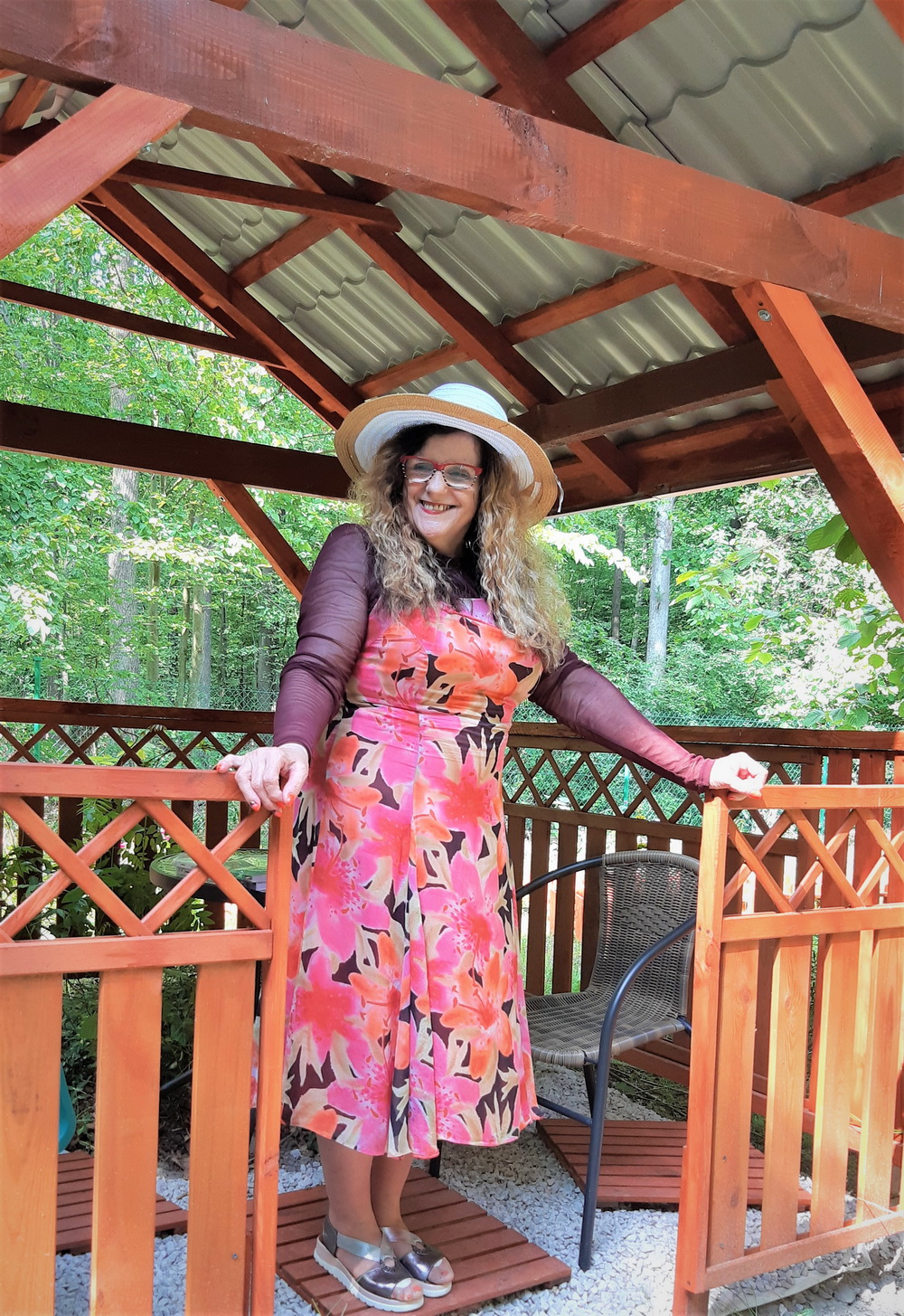
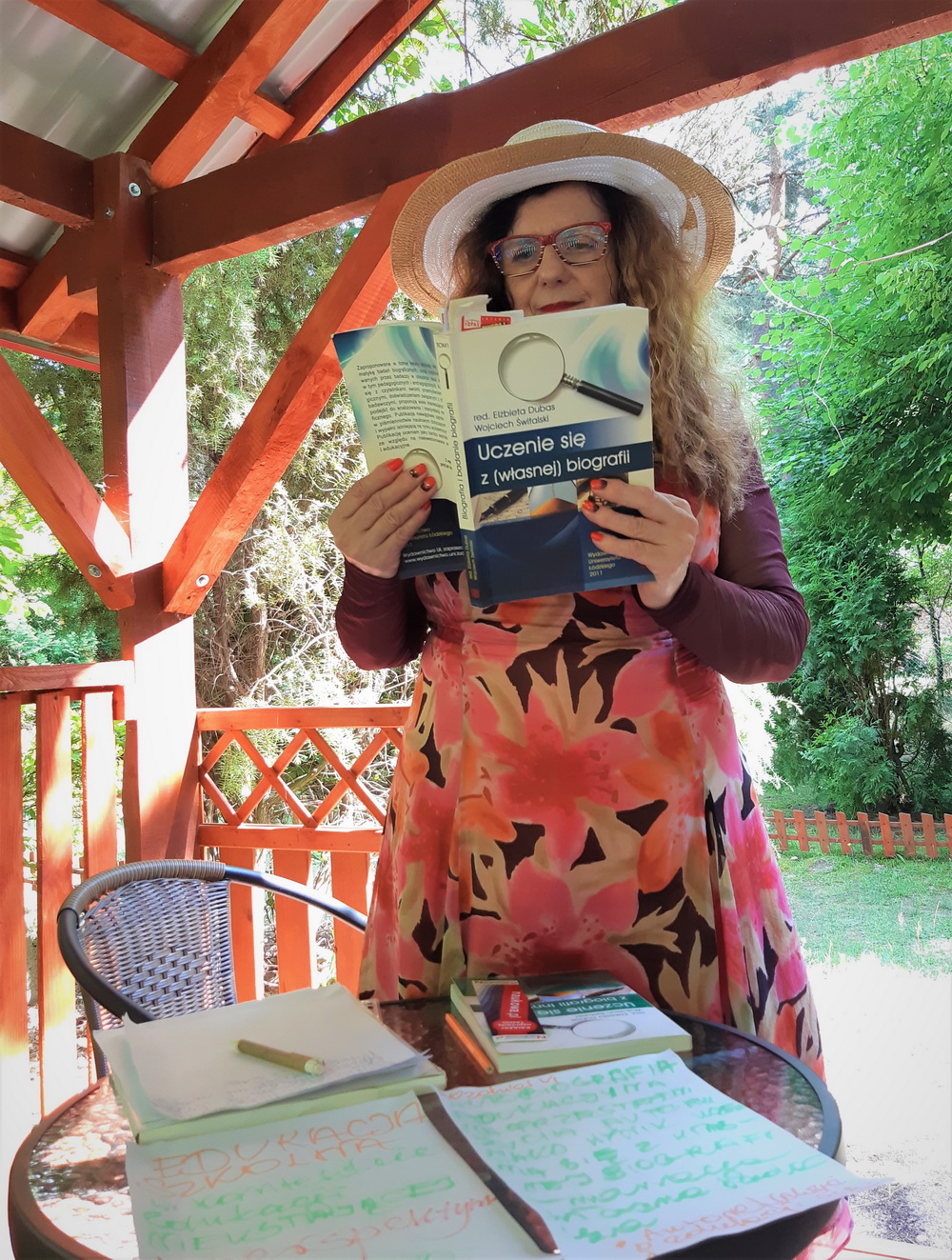
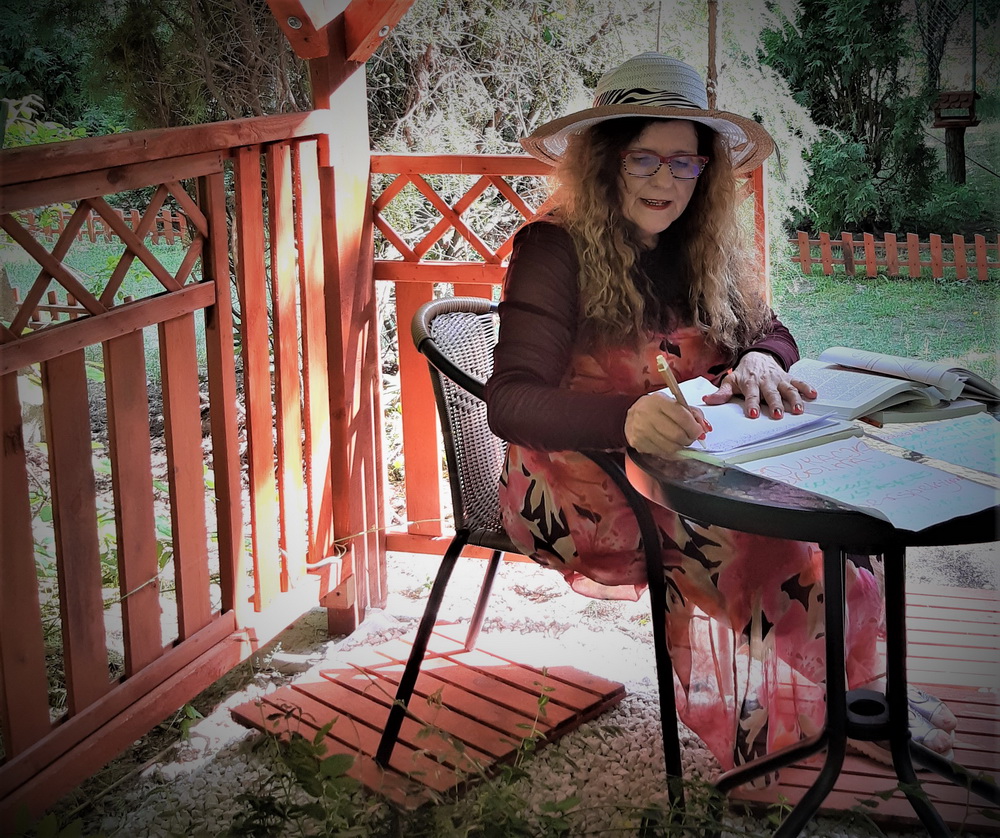
Coming back to John Amos Comenius’ idea of pansophism (“Whole life is school”), in reference to the SEASONS OF THE YEAR – SPRING symbolizes childhood and youth, and is associated with the joy of life, dreams, first love, making friends. However, it is not free of worries or labyrinths of life, which we can leave thanks to constant EDUCATION, gaining KNOWLEDGE. The idea is timeless and currently it is a priority all over the world.
SUMMER
I WANT TO INVITE YOU FOR A VISIT TO THE VIRTUAL GARDEN IN SPRING AND SUMMER
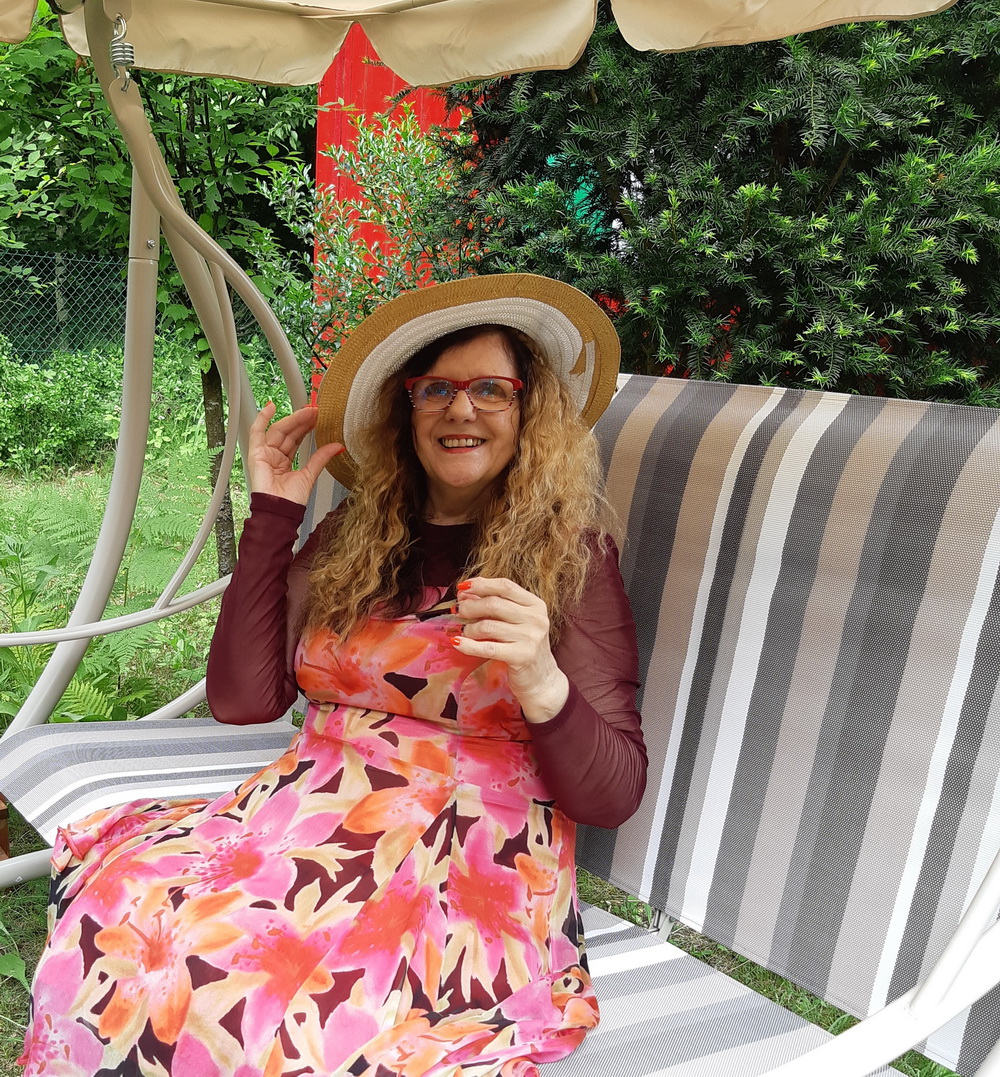
It is difficult to set the boundaries between the STAGE OF SPRING and the STAGE OF SUMMER. Here in the GARDEN, it would be an artificial “procedure”, that is why I present these stages together. However, taking SUMMER into account, in reference to John Amos Comenius’ IDEA of pansophism, it symbolizes the middle part of human life. IN THE IDEA OF LIFELONG EDUCATION, THE MAN has already graduated from the Academy and completed the school of travelling all over the world in order to “refresh his thoughts and feelings”, he has gotten to know the life of people in different environments, written a diary and designed his further life at the stage of adulthood, having made it to the level of extra-institutional symbolic school, with no teachers, and he is going to be on his own from this moment on. For the young man, it is a difficult stage, as it is the time of choosing a career, as well as the time of starting a family. A new more difficult stage of gaining knowledge starts, of working on himself towards perfection. From the very childhood, young people learn to be responsible for their own development, for “becoming” a human being. It was emphasized by Comenius in his School of omniscience. It is also emphasized by contemporary educationists and philosophers. Comenius encourages young adults to gain knowledge about themselves (self-knowledge). In our GARDEN, it is symbolized by the ALLEY OF PANSOPHISM (LIFELONG EDUCATION) and the HOUSE OF SELF-KNOWLEDGE AND REFLECTION. By observing themselves, analyzing and interpreting their behavior and attitudes, young mature people will find it easier to follow the way to perfection and happiness. The above aims have been understood and accomplished in different ways depending on an individual’s worldview. Comenius was a clergyman and all of his works are imbued with God, piety, and the pursuit of eternal happiness. However, contemporary comeniologists who interpret his WORKS consider him to have been thoroughly secular, and everyone, regardless their faith or worldview, finds something interesting and valid for themselves in his writings: an idea, a concept, or a message. I indentify with this GROUP as well. For the last few years, Comenius’ IDEA OF PANSOPHISM/ LIFELONG EDUCATION has inspired me to conduct scientific research of school education and lifelong education, and due to the fact that this PROCESS is individual and unique, I present it in an autobiographical perspective. Volume 8 of “Siedlce Comeniological Research Bulletin, PEDAGOGY series”, being prepared to be published this year (2021), entitled From the times of John Amos Comenius till the present. The significance of the great educationist’s ideas for the development of science and education, proves a long and continuous WAY of the development of science and education, on which Comenius’ IDEA of pansophic education has always been present, and in the 21st century it seems to be present in education like never before.
Coming back to the IDEA of the PEDAGOGICAL AND PHILOSOPHICAL GARDEN OF JOHN AMOS COMENIUS……STAGE FOUR – SUMMER – is a GARDEN full of greenery and flowers.

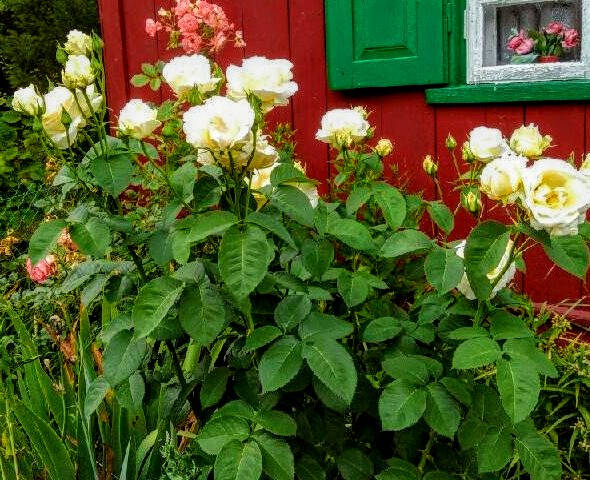
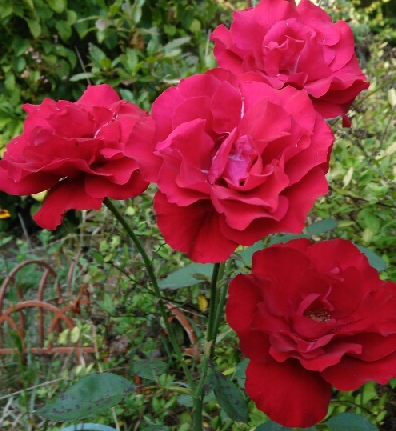



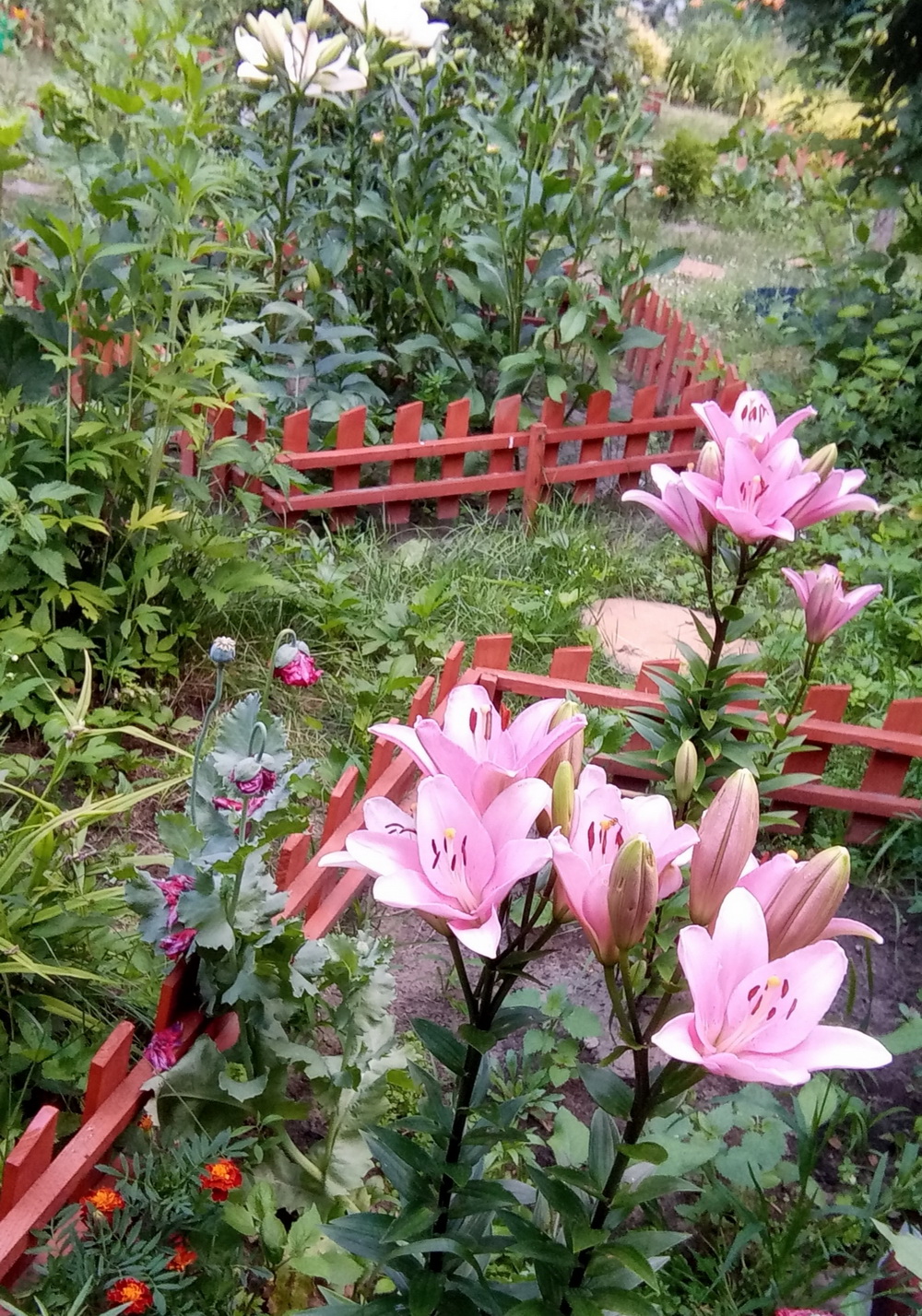
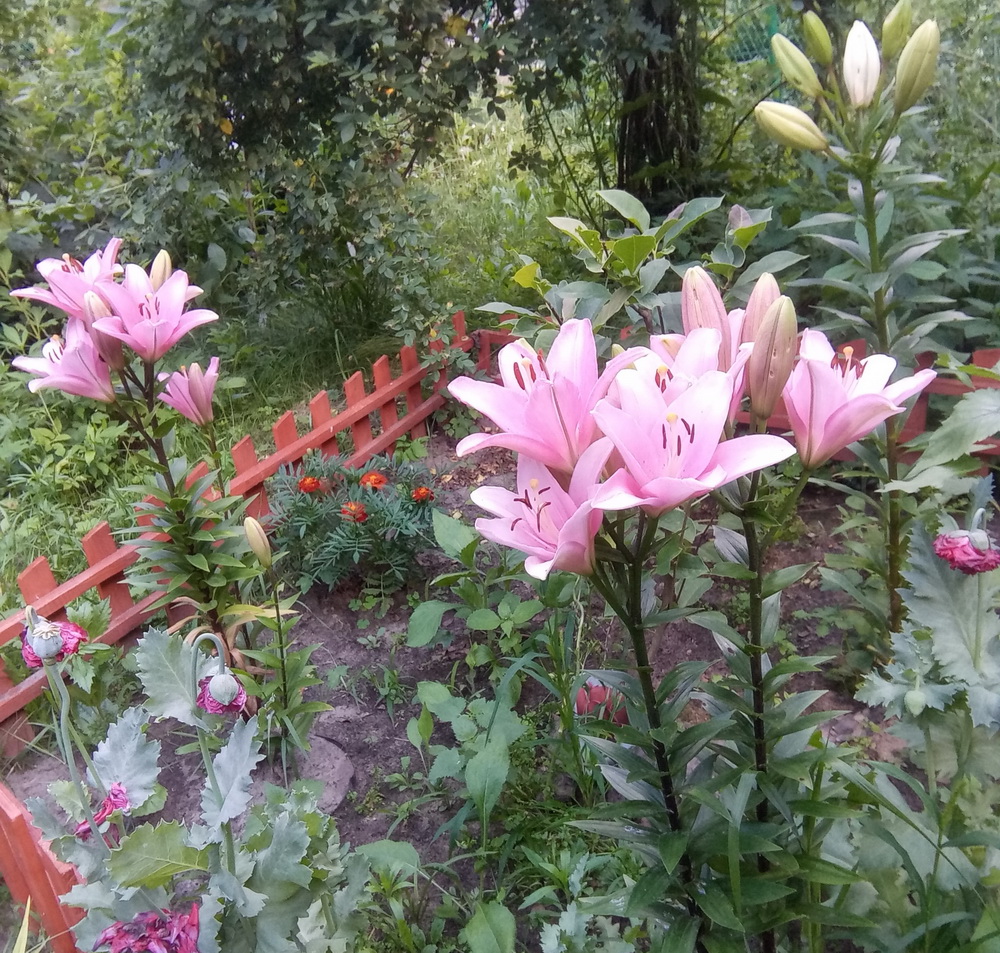
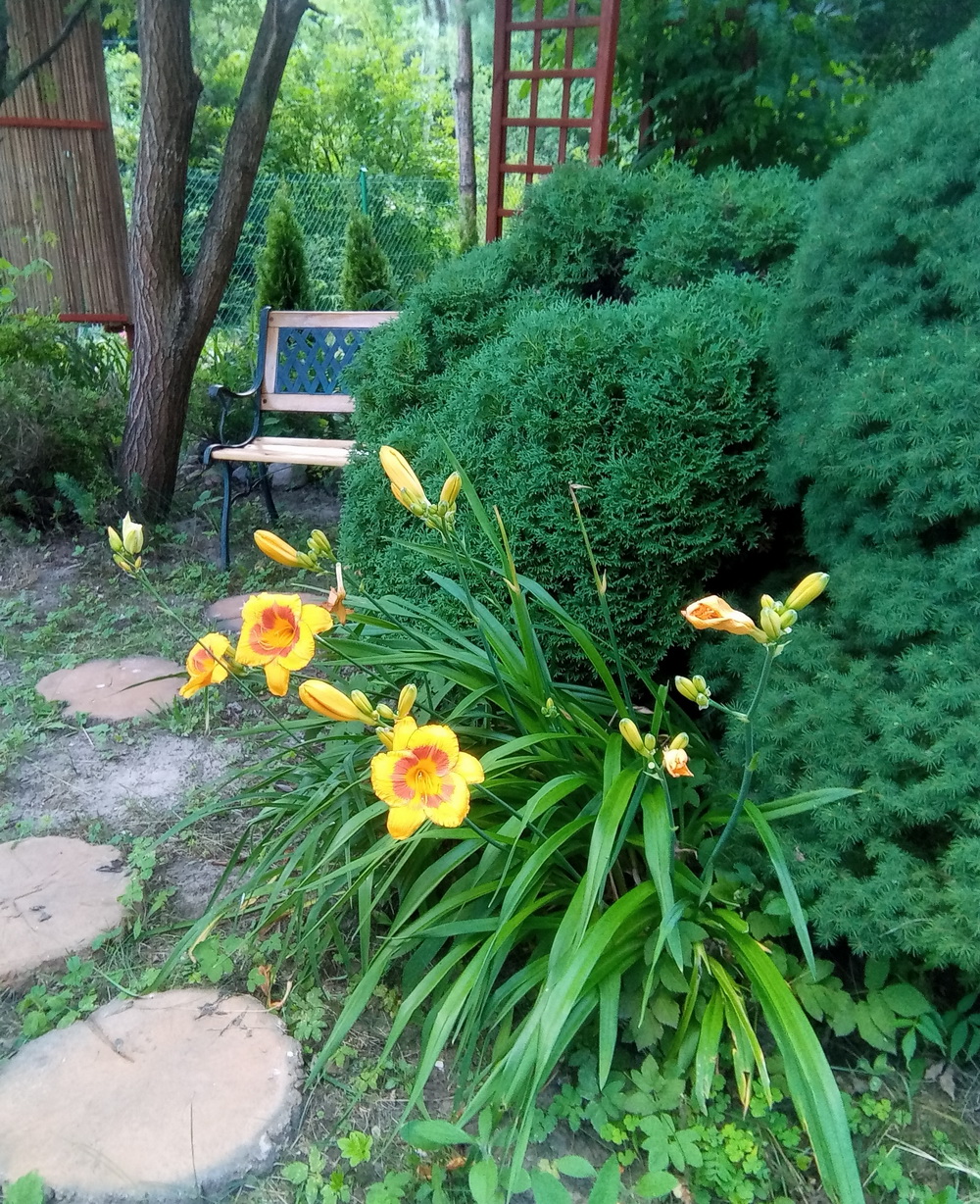
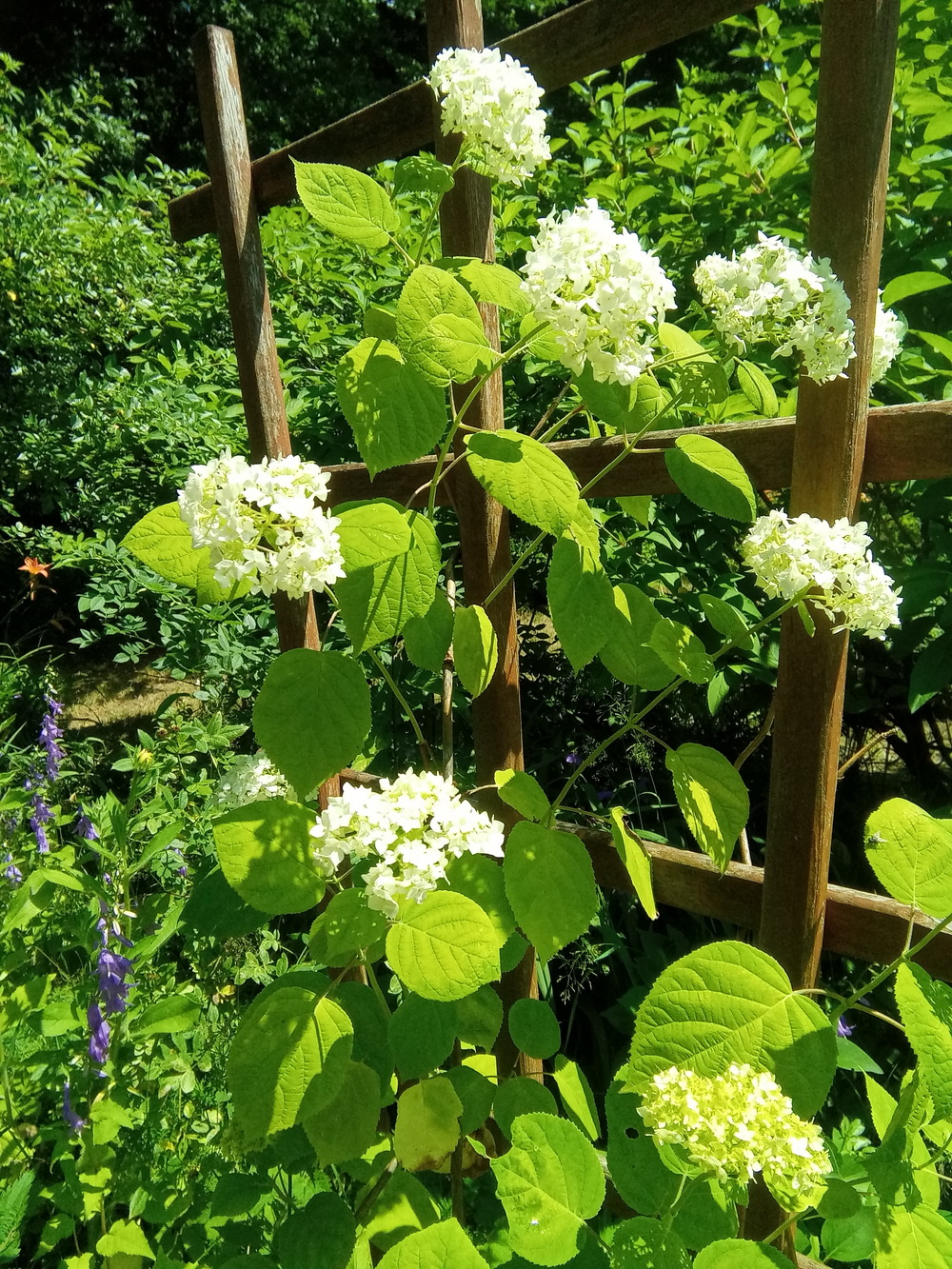
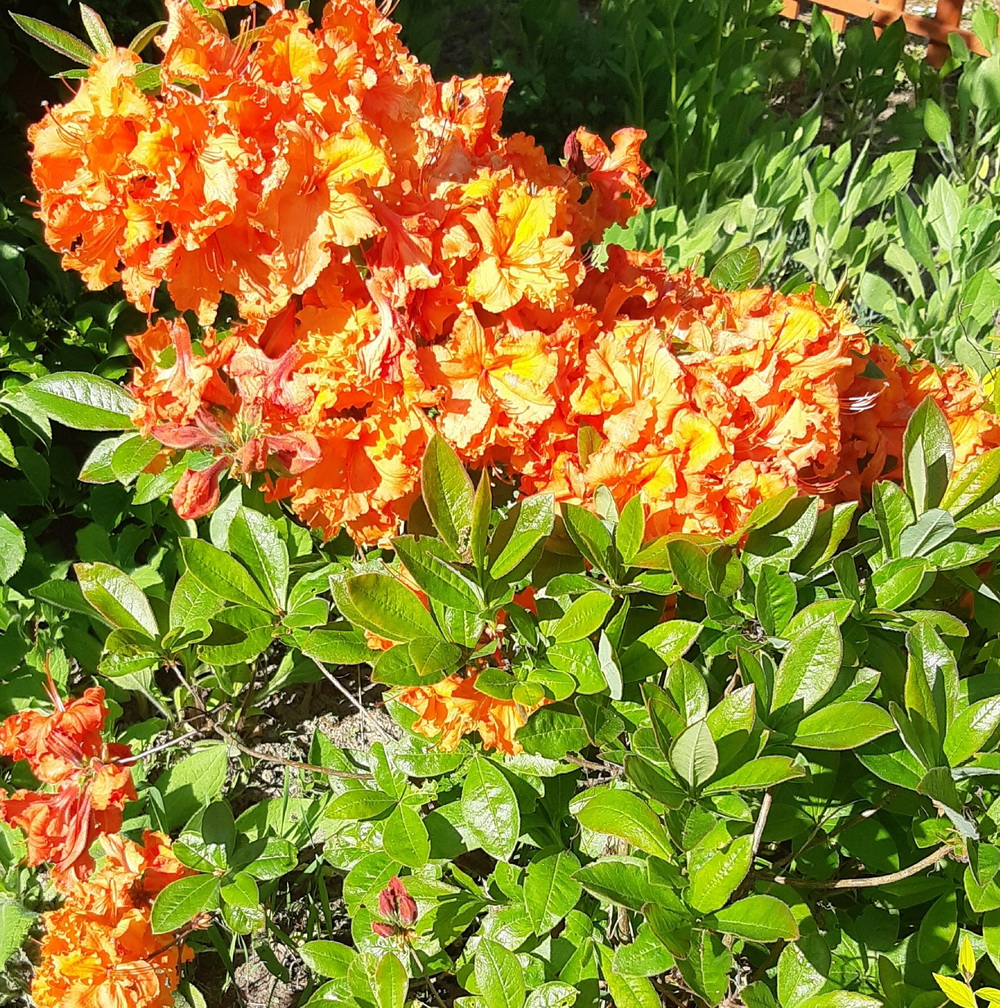
It is associated with beauty, stability, the need for reflection (in our GARDEN, the special place designed to do that is the HOUSE OF SELF-KNOWLEDGE AND REFLECTION). Such places where you can calm down and reflect on your life and yourself can be found everywhere, in every corner of the GARDEN. Every time I visit it, I discover new places, and yet they have always been THERE, but now, with the new inhabitant of the GARDEN (soon inhabitants) – John Amos Comenius – they have taken on a whole new dimension.

I WANT TO INVITE YOU FOR A VISIT TO THE VIRTUAL GARDEN IN SPRING AND SUMMER
Barbara
On 26 July, the expected sculptures arrived from Siedlce at the PEDAGOGICAL AND PHILOSOPHICAL GARDEN OF JOHN AMOS COMENIUS, and they were erected on both sides of the Thinker. Barbara had expected children: an adolescent boy and a 7/8-year-old girl, who still gladly visits the HOUSE OF FAIRY TALES to play with the dolls and teddies and see the fairy-tale characters. The designed narration was to present the boy pointing at Comenius and conveying the message to the girl: from now on, she will be able to learn at school and outside it throughout her life. The narration was supposed to be included in John Amos Comenius’ idea of pansophism – lifelong education according to the rule: “whole life is school”.
Meanwhile, though, the sculptures that have arrived present more mature figures of adolescent boy and girl. The boy, pointing at the figure of Comenius with his outstretched hand, communicates the message to the girl, that from now on, girls / women will be able to learn at school, going through all the levels of education (elementary school, secondary school, academy). However, she does not understand what the boy tells her. This message still seems to be abstract to her. It is visible on her face. She needs time to realize the importance of these words.
The entire figure of the boy and his beautiful outfit, especially his prominent hat, indicates his middle-class origin, while the figure of the girl and her modest, although very neat and equally beautiful outfit, proves her low-class origin. Comenius believed that everyone should be educated, both the rich and the poor, the able-bodied and the disabled, regardless their worldview and faith, race, nationality and sex. The new sculptures around Comenius present the period of youth – early adulthood, which is symbolized by SUMMER in our concept. After they leave school (institutional education), young adults and older middle-aged ones are educated throughout their life, till its end, in a symbolic school, much more difficult than the institutional one, without the teacher or textbooks.
Below, you can see the sculptures of the new figures around Comenius and Barbara’s reaction to them. The pictures also show Waldemar Kos, known by everyone as the sculptor of the statue of John Amos Comenius.

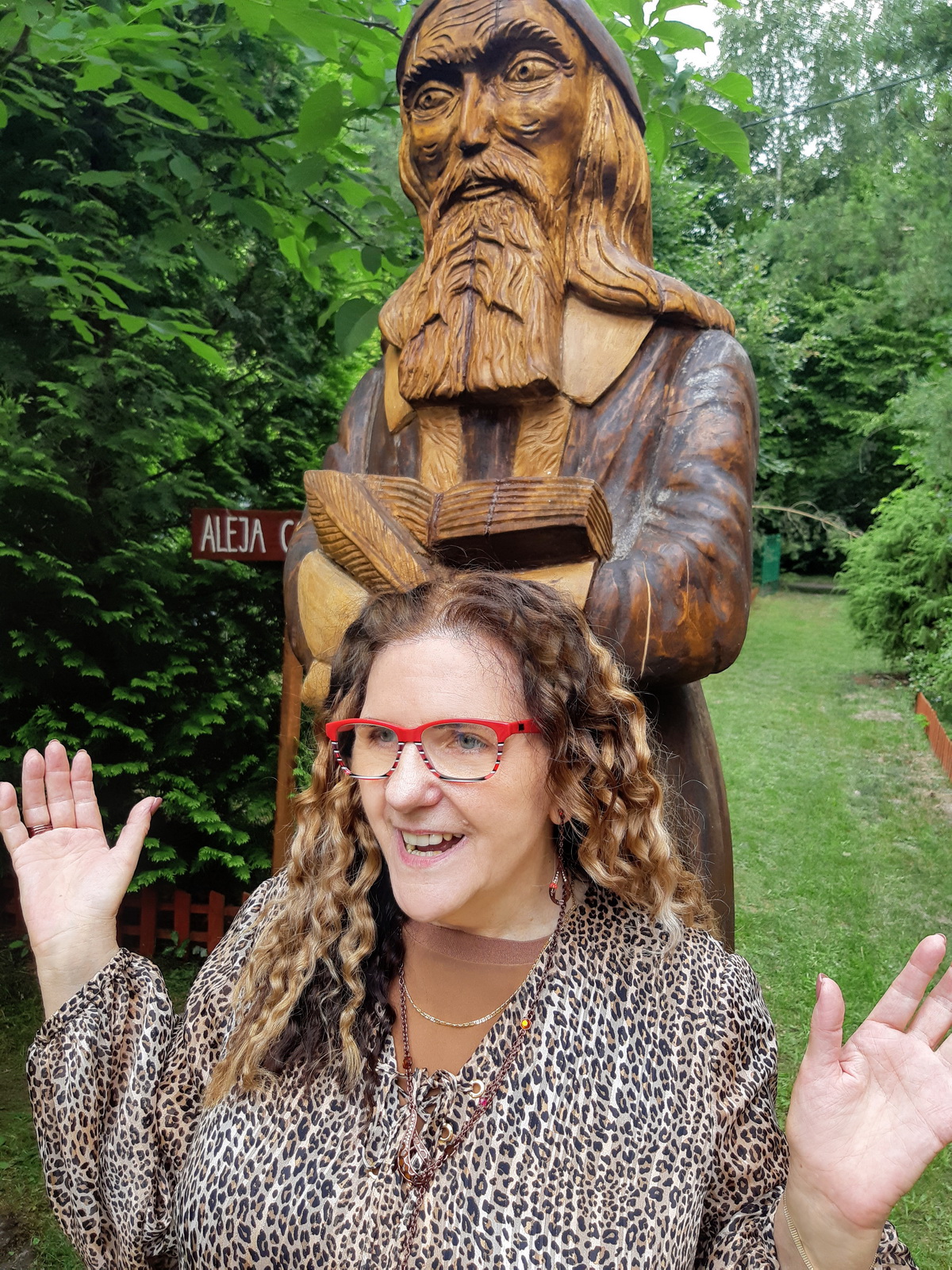

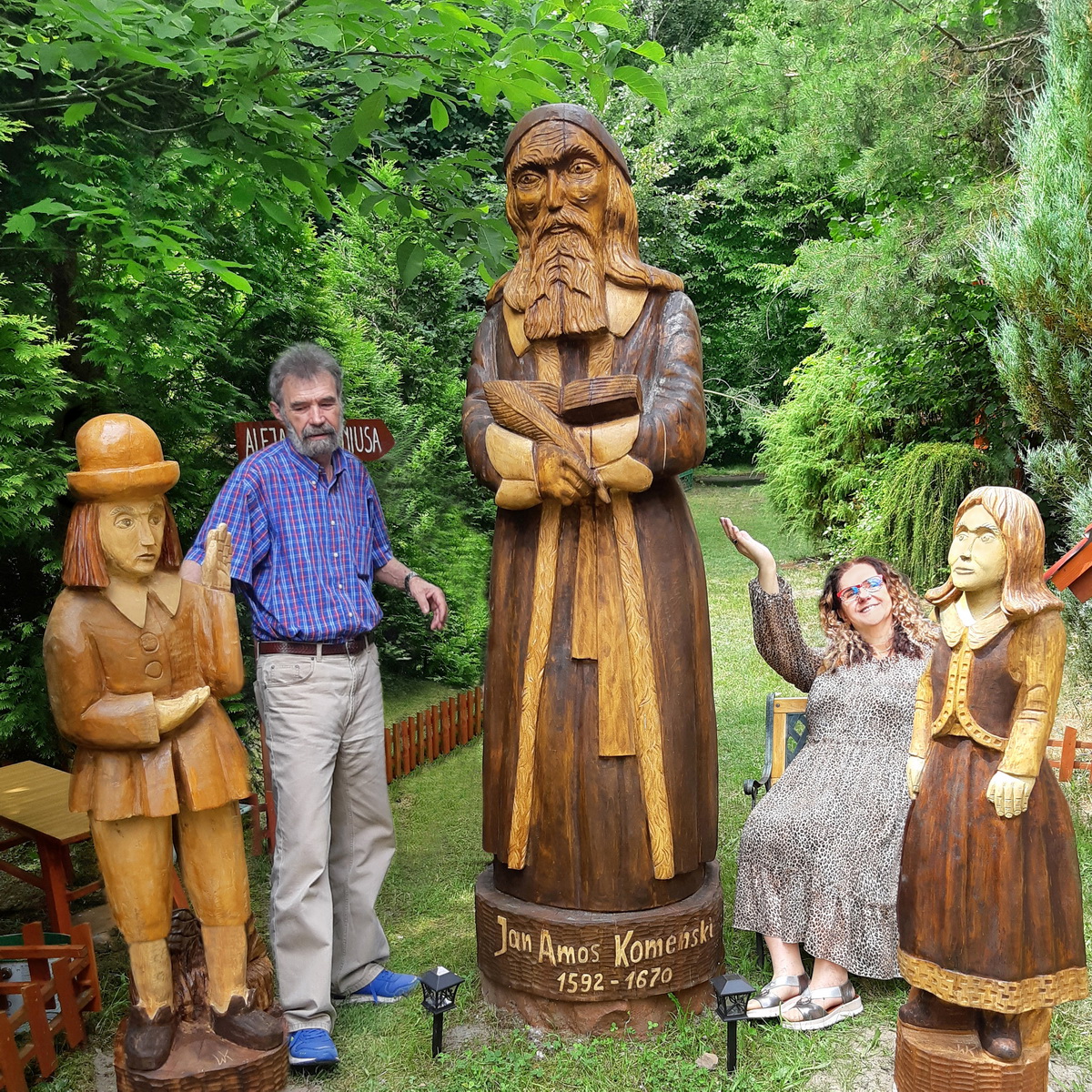
IN THE GARDEN, the lilies have already faded, but the dahlias and sunflowers are still in blossom. In the flower meadow at the Alley of Pansophism (lifeling education), new flowers are still appearing. The old holly shrubs have been replaced with new ones. Around the linden, Barbara’s favourite tree, there is a red fence made by Peter, and the label “UNDER THE LINDEN TREE” indicates a special place of relaxation and reflection for the visitors to the GARDEN. In the neighbourhood, a new rock garden has appeared thanks to Ewa, Krystian and Peter’s efforts.
Below, you can see some pictures of the new facilities in the GARDEN and the flowers blossoming this time of summer.

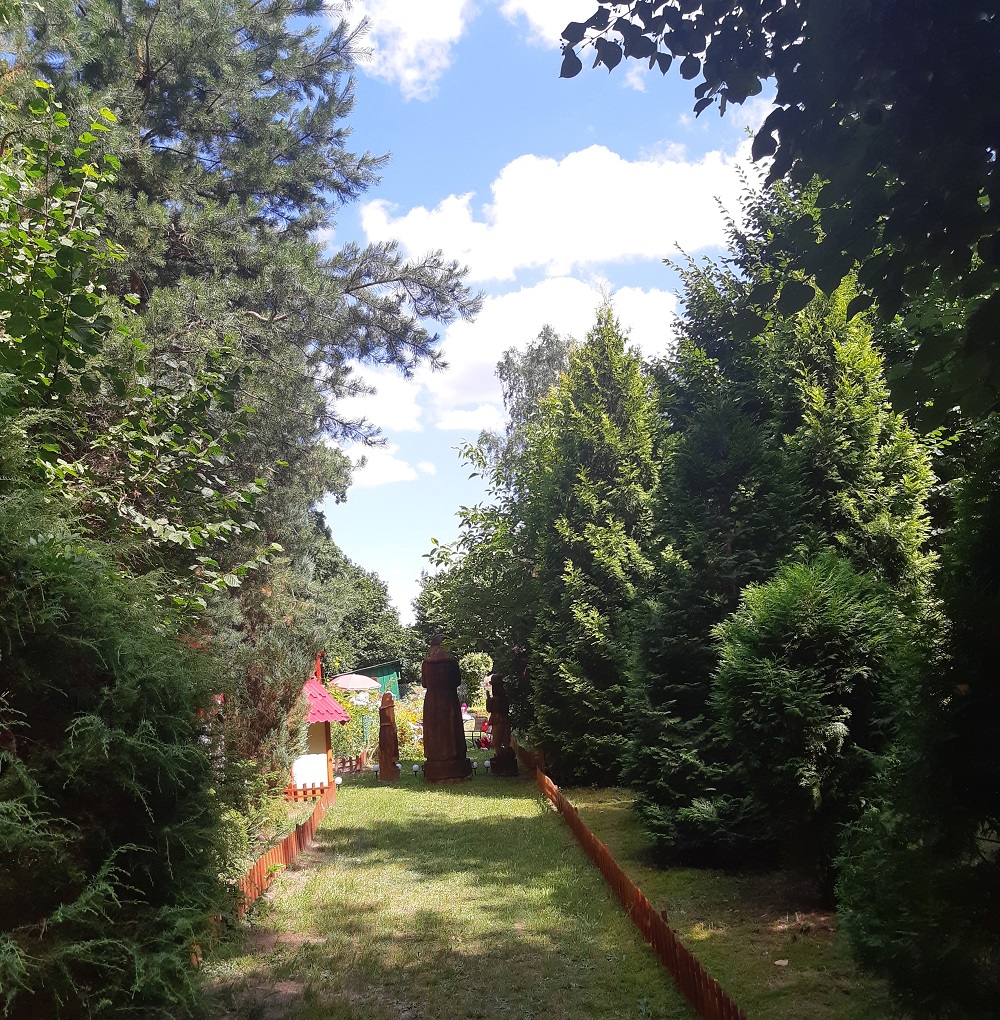



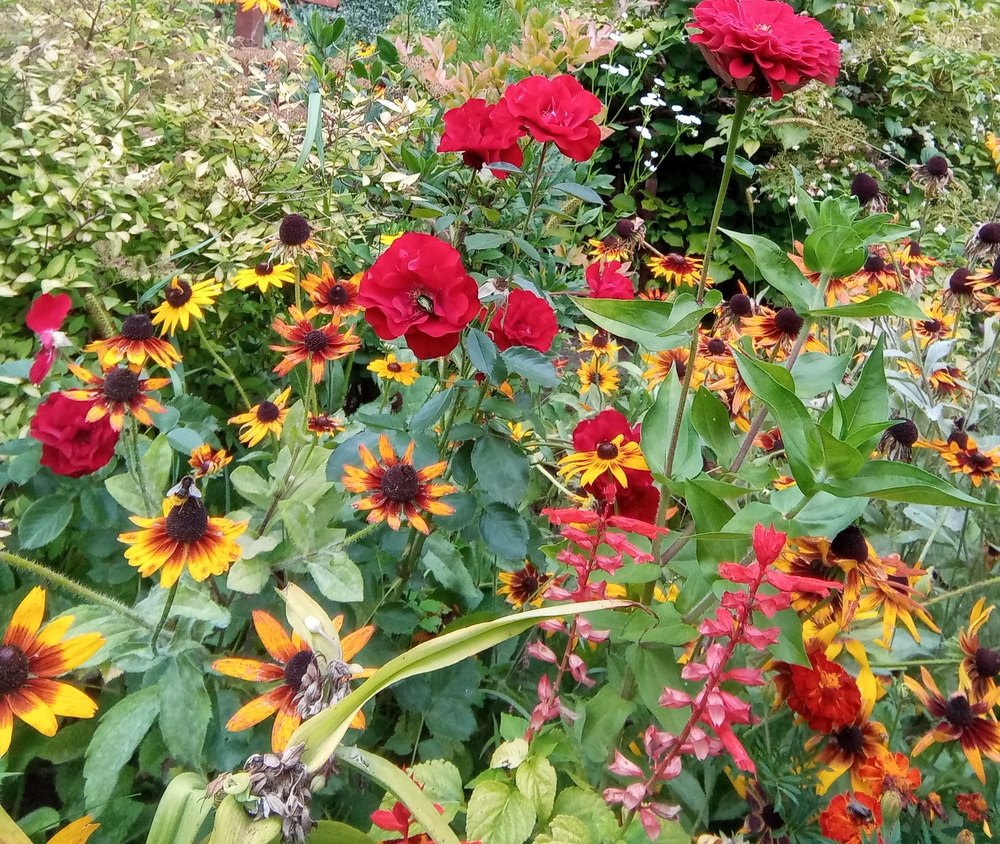
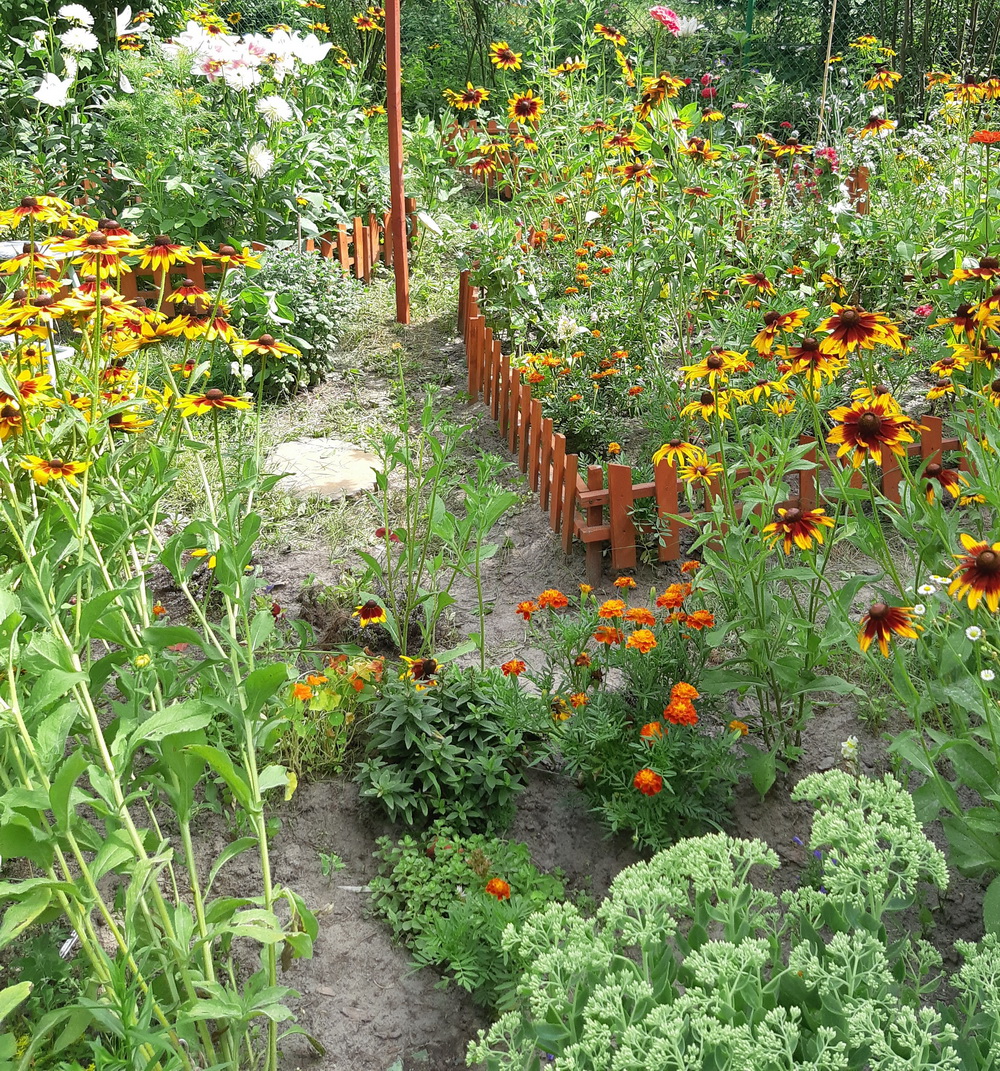
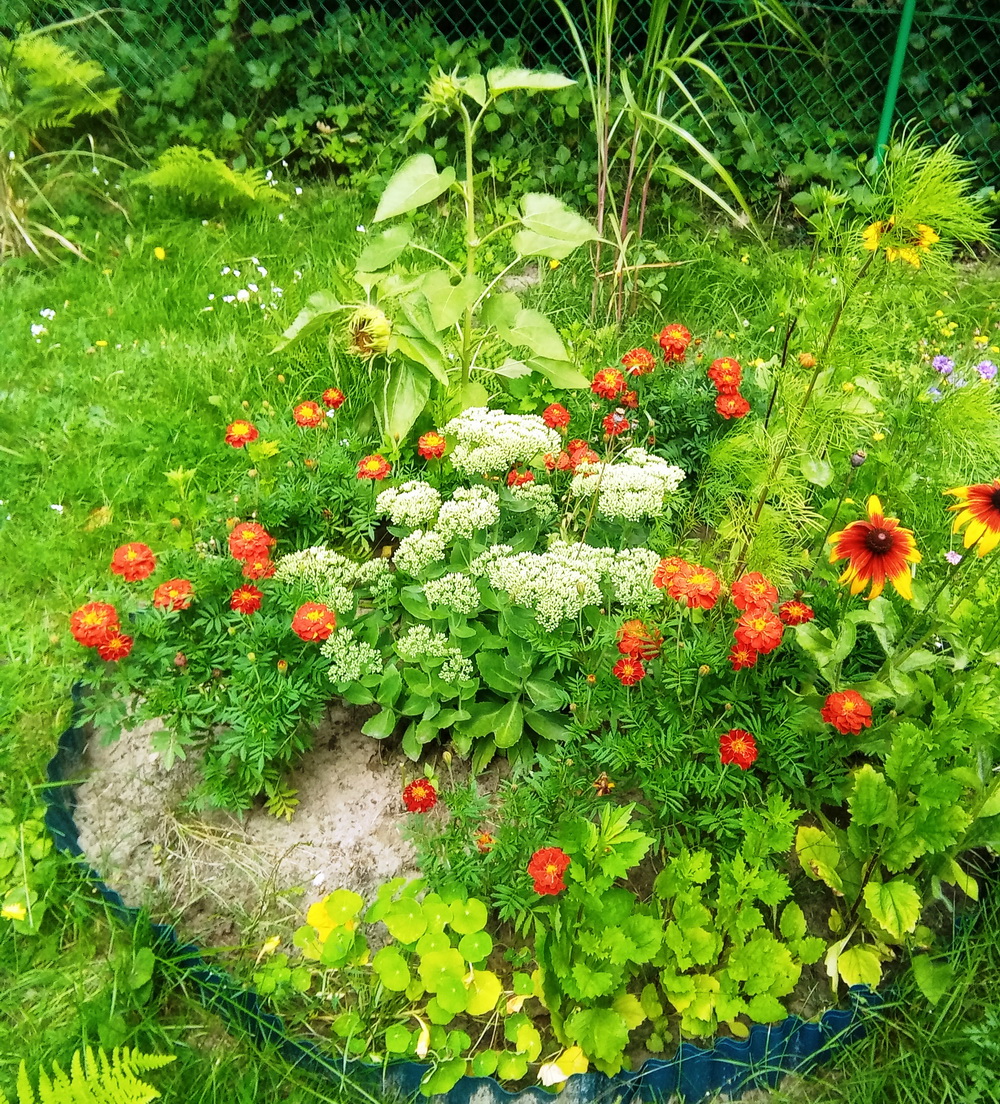
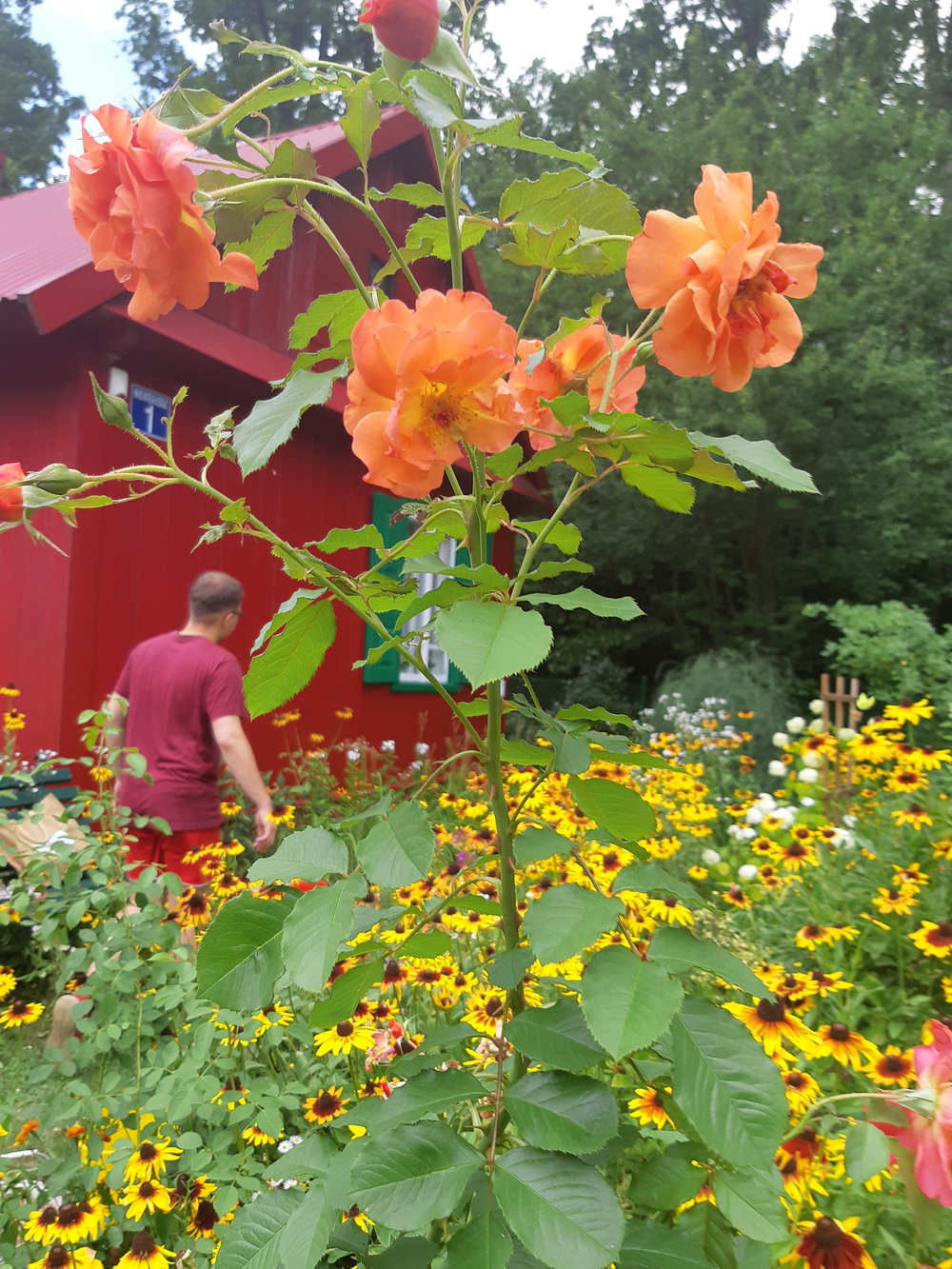
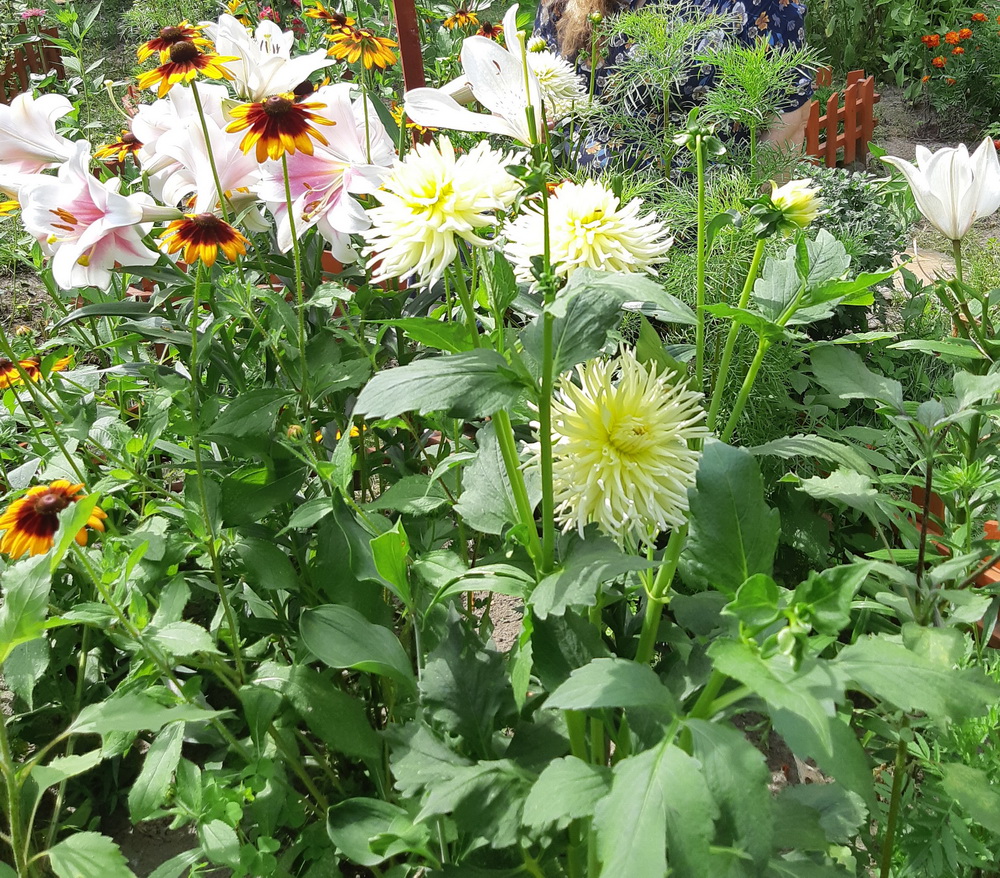
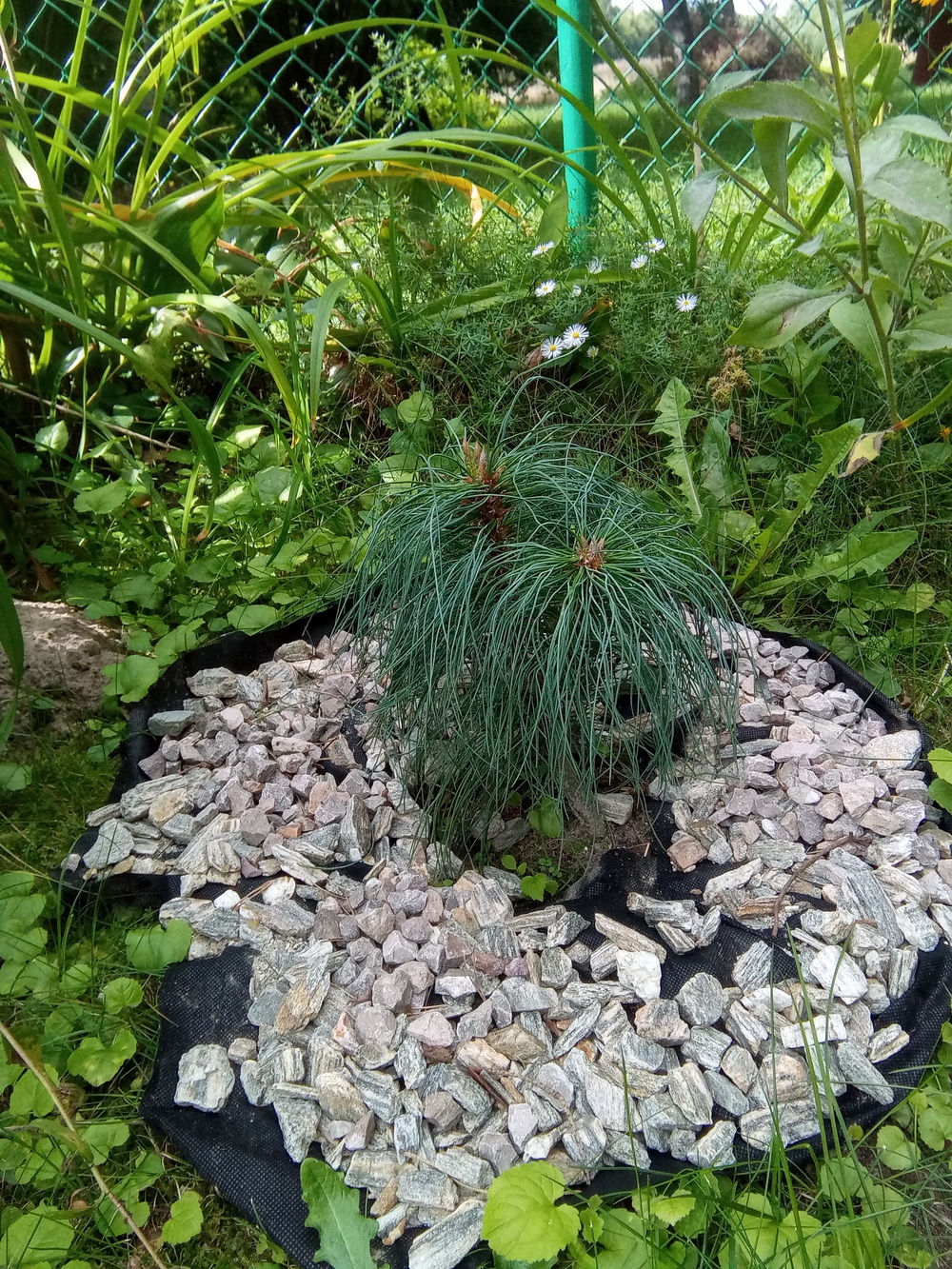



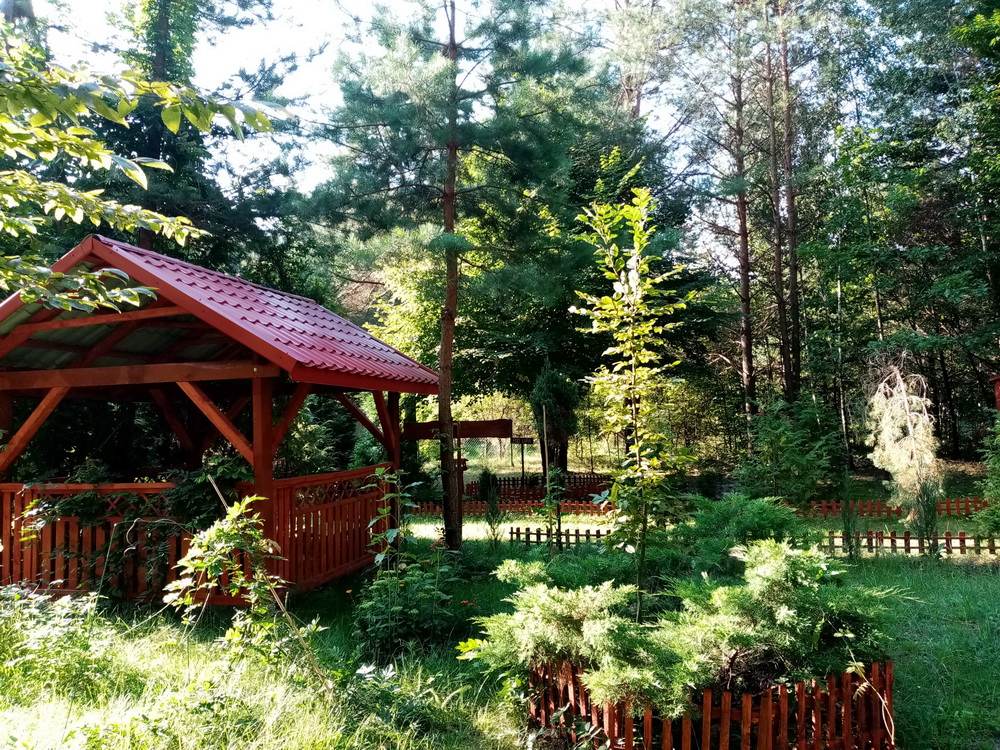
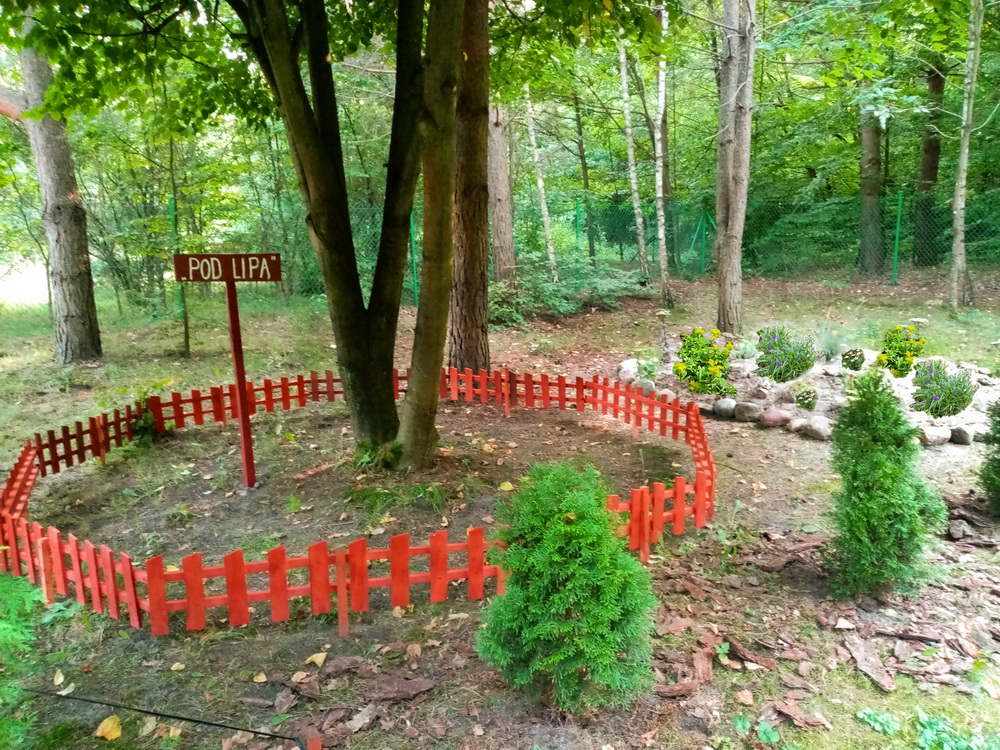

I WANT TO INVITE YOU FOR A VISIT TO THE GARDEN with the new sculptures around Comenius
Barbara
John Amos Comenius and his works have been written about countless times in books and articles, many international seminars and conferences have been devoted to him, and anytthing that concerns his life and writings seems to be known to the contemporary. It is very misleading thinking! As it turns out, the more thoroughly we study the comeniological issue, the less we know about Comenius (there are still areas of his life that are unavailable and, therefore, unknown). Any time some ”white stains” appear that inspire and motivate me to conduct further research. As a result, as the editor-in-chief of ”Siedlce Comeniological Research Bulletin, PEDAGOGY series”, I intend to publish two more volumes (Vol. 9: 2022 and Vol. 10: 2023), entitled What has not been written about John Amos Comenius yet, or ”white stains” in the interpretations and reinterpretations of works by Comenius and about Comenius. I hope that comeniologists from all over Europe and all over the world will react to the invitation to cooperate as well.
BETWEEN THE SUMMER AND AUTUMN 2021
ANNIVERSARY OF THE ARRIVAL OF THE STATUE OF JOHN AMOS COMENIUS
AT BARBARA SITARSKA’S GARDEN
On 26 September 2021, it is a year since the statue of John Amos Comenius arrived at the PEDAGOGICAL-PHILOSOPHICAL GARDEN.

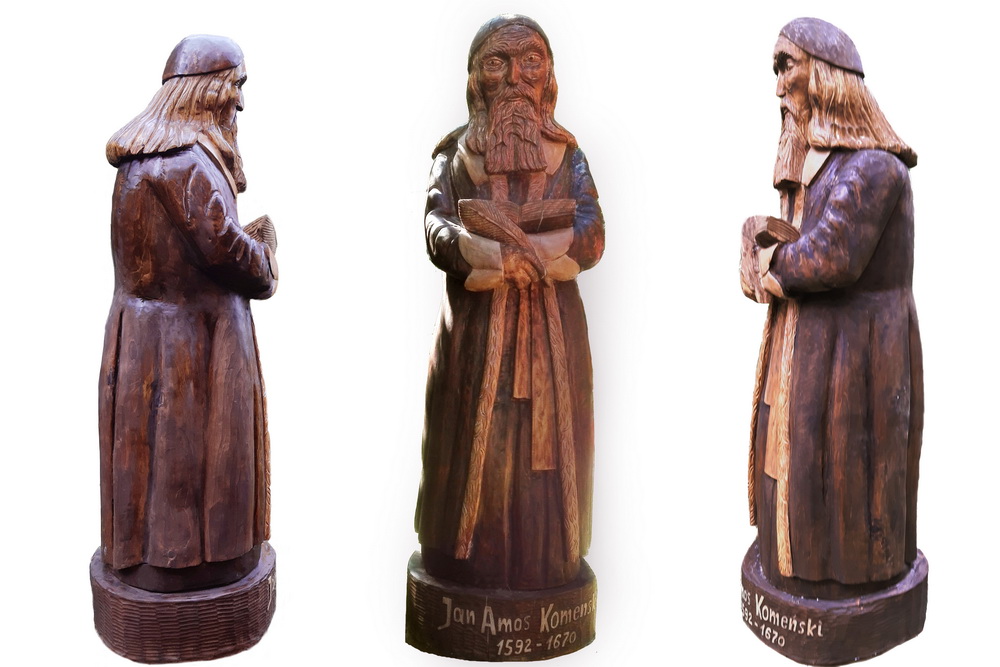
Since then, the appearance of the garden has changed: it has stopped being an ordinary home garden. The philosopher’s ideas have marked their “presence” in its every corner. They have made many new facilities appear in the garden (see the photos: AUTUMN, WINTER, SPRING and SUMMER). The garden is undergoing a constant dynamic process of an open nature, and is becoming more and more beautiful.
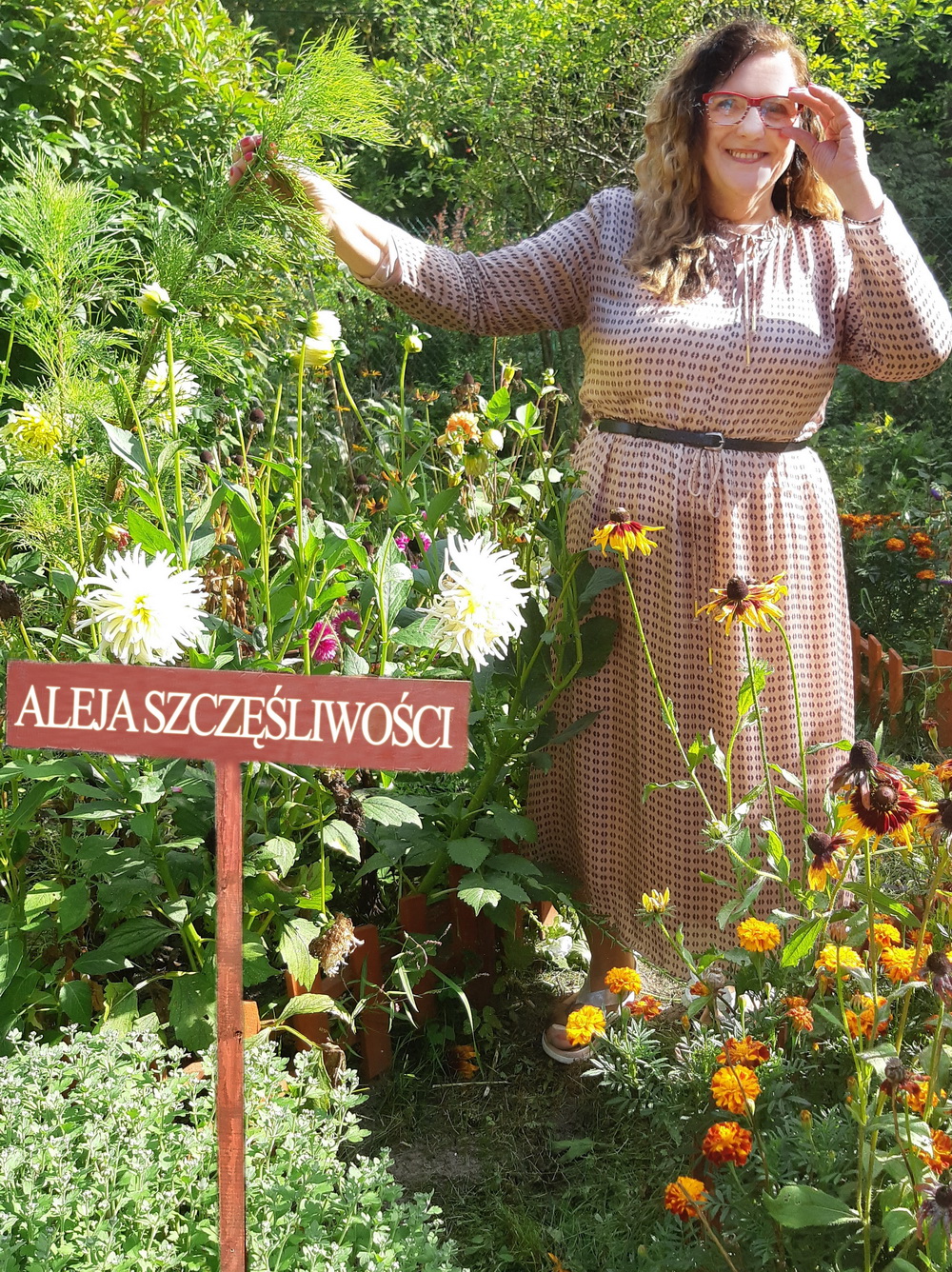
According to Comenius’ idea in our GARDEN, human LIFE CYCLE is coming full circle this season. Let us remember that it started in autumn 2020 with the prenatal period, and then it “guided” us, together with the visitors to the virtual GARDEN, through the remaining seasons of the year, symbolizing human life at every stage according to the IDEA of PANSOPHISM: “THE WHOLE LIFE IS SCHOOL”/LIFELONG EDUCATION.
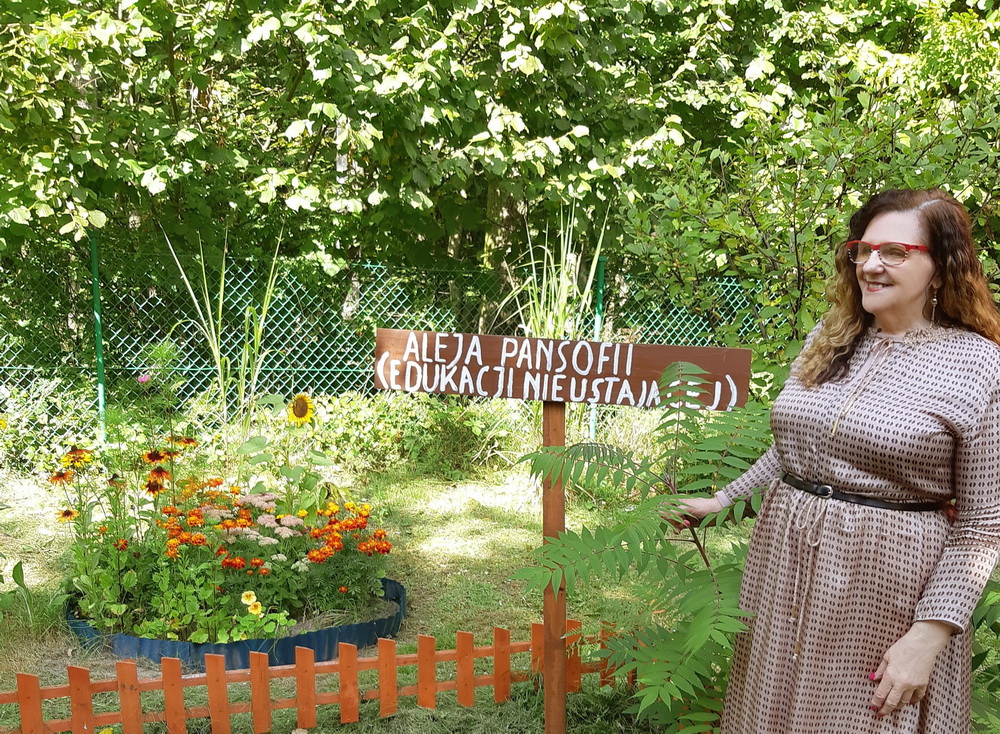
In autumn (October, when the walnut tree gives fruit), human LIFE CYCLE will start “anew”. The new season will only bring the GARDEN’s improvement towards the accomplishment of Comenius’ ideas. New facilities are certain to appear and the ones that have appeared this year are going to develop. We are going to “follow” them together with the visitors, taking a virtual trip of the GARDEN. It requires our systematic work and great emotional involvement of the TEAM of collaborators of the creator and owner of the GARDEN. On the anniversary of the arrival of the sculpture, Barbara handed the TEAM certificates in recognition of their work and as an incentive to continue it. Below, you can see some souvenir photos of this ceremony and the Gardeners’ certificates.
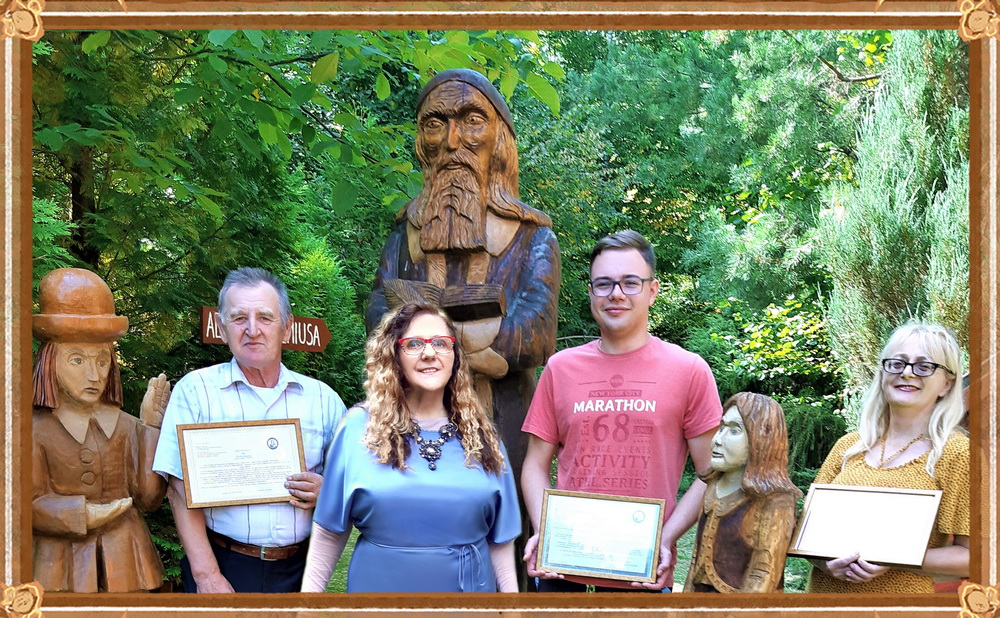
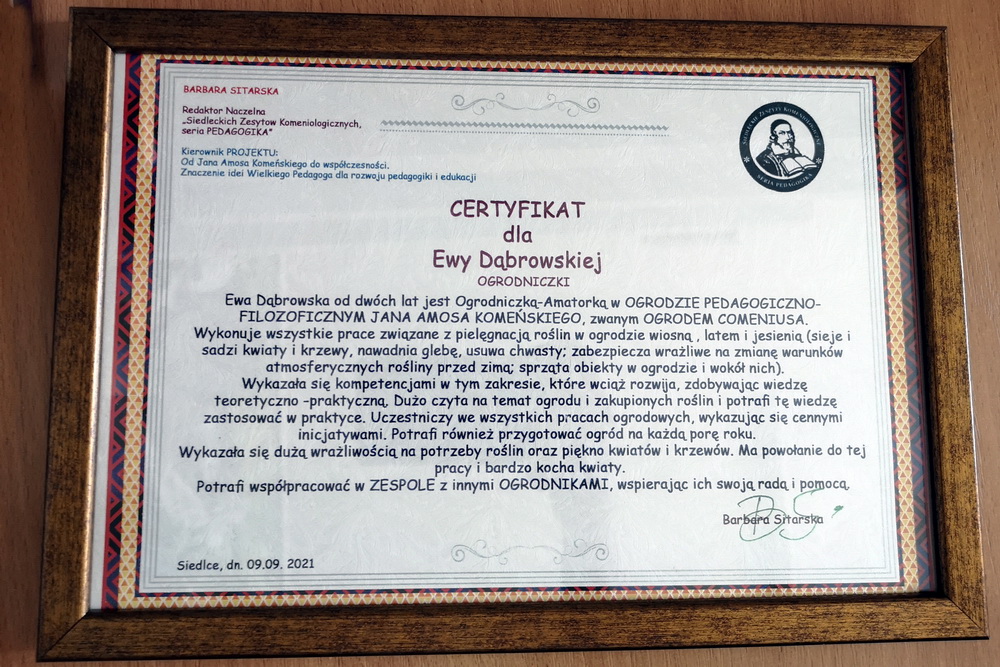
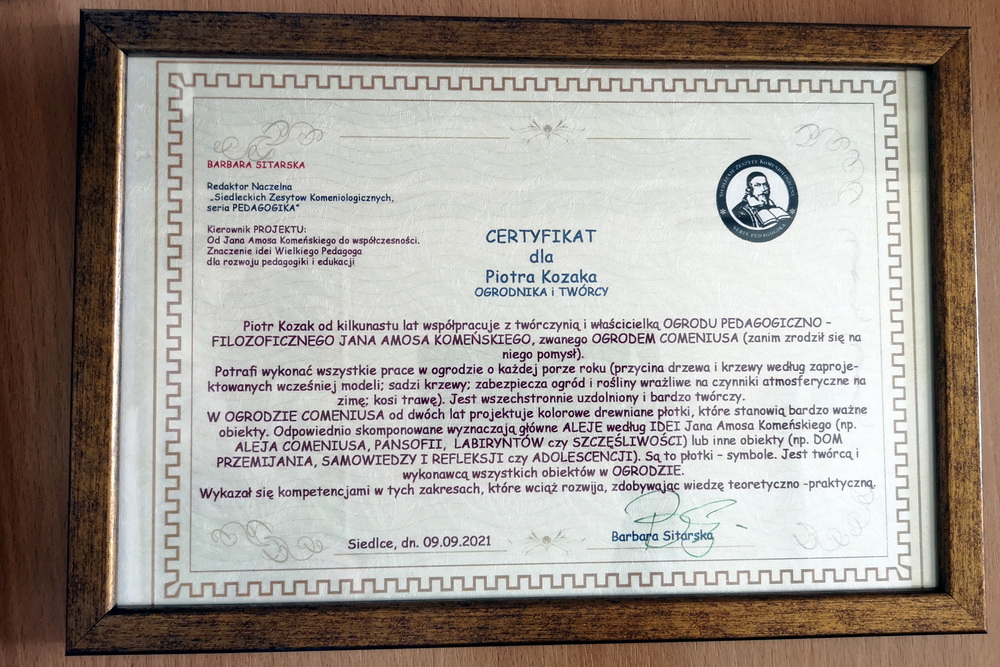
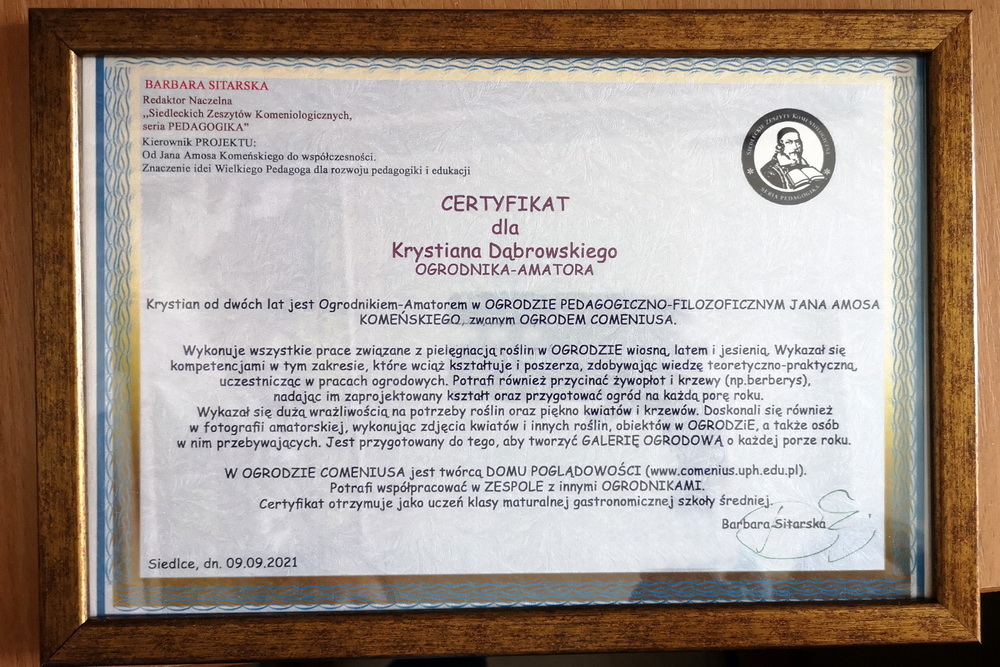
The members of the RESEARCH TEAM
(Associate Professors of the University, PhDs, DScs)
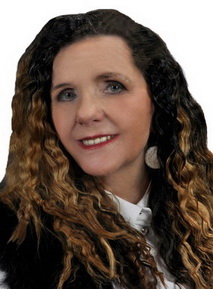 |
 |
 |
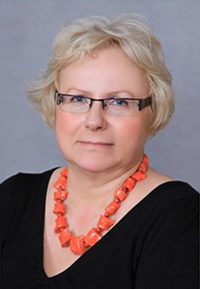 |
 |
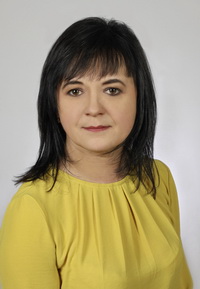 |
|
Barbara Sitarska manager- pedagogue |
Janina Florczykiewicz pedagogue |
Urszula Tyluś pedagogue |
Hanna Żuraw pedagogue |
Cezary Kalita philosopher |
Ewa Wyczółkowska PhD – mathematician, pedagogue |
Editors
The accomplishment of the PROJECT is supported by the editors: Piotr Świtalski, PhD, technical editor, Renata Matysiuk, PhD, assistant editor, and Izolda Lisowska-Popoilyk, MA, editor of English.
 |
 |
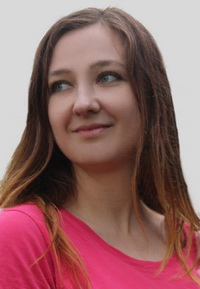 |
|
Piotr Świtalski technical editor |
Renata Matysiuk assistant editor |
Izolda editor of English |
INVITATION FOR THE VISITORS TO THE COMENIUS GARDEN
THE RESEARCH TEAM AND THE EDITORS OF THE PROJECT: FROM JOHN AMOS COMENIUS’ TIMES UNTIL THE PRESENT… wish to invite you for a virtual trip of the PEDAGOGICAL-PHILOSOPHICAL GARDEN of JOHN AMOS COMENIUS at any time of the year, any stage of the human life-cycle, according to the IDEA of PANSOPHISM/ lifelong education.
Below, you can see some photos of the GARDEN segments with their plant life in September on the first days of autumn 2021 and the COMENIUS ALLEY at NIGHT with the statues of Comenius, the adolescent boy and girl illuminated by garden lamps standing at their bottoms.
We wish to greet and invite you to fill in the questionnaire about Comenius (https://forms.gle/aWQqja11dVu1r9EQ9), published in Volume 9 of “Siedlce Comeniological Research Bulletin, PEDAGOGY series”, entitled What has not been written about John Amos Comenius yet, or “white stains” in interpretations and reinterpretations of the works by Comenius and about Comenius (editorial requirements available on the home page www.comenius.uph.edu.pl) and to prepare comeniological entries for the ENCYCLOPEDIC LEXICONE OF JOHN AMOS COMENIUS, which is going to be published in 2022.



